It seems we can’t find what you’re looking for. Perhaps searching can help.
Sign Up for newsletter!
Subscribe to get the latest eBook!
Hotline






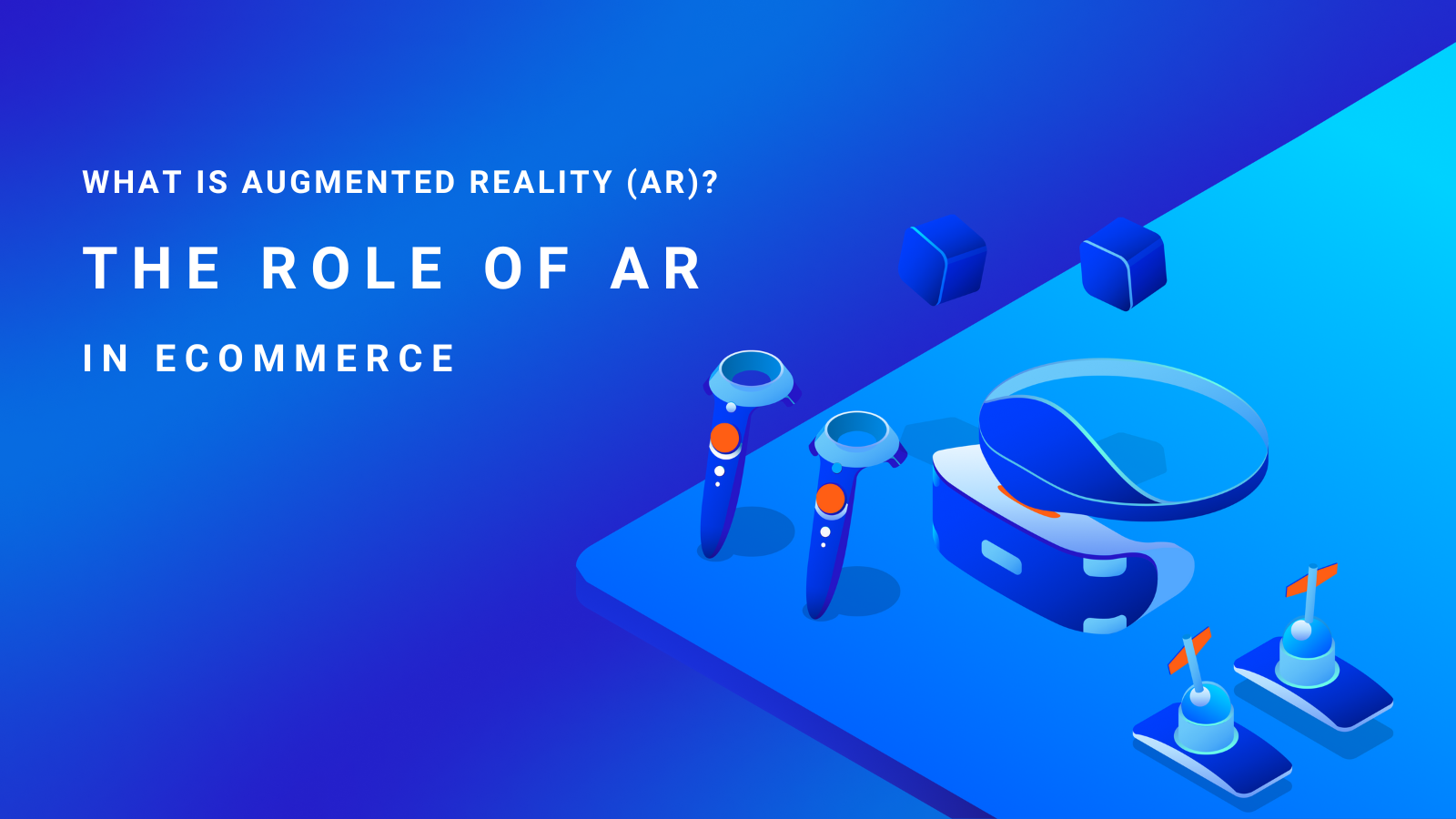
Augmented Reality (AR) – a term that has become familiar in today’s technology world. From entertainment applications to various industries, AR is integral to our daily lives. Moreover, it offers engaging and distinctive interactive experiences for eCommerce consumers. But what exactly is AR? How does it differ from VR, and what is its important role for eCommerce businesses? Let’s explore through the following article.
Augmented Reality (AR) is a technology brimming with potential, offering unique interactive experiences by merging real-world elements with computer-generated virtual elements. Simply put, AR allows users to “augment” the real world by adding information or virtual objects to it. This can occur via the screen of a mobile device, AR glasses or wearable devices.
One of the distinctive features of AR is its ability to create engaging interactive experiences for users without disconnecting them from the real world. Instead of separating users from their surroundings, AR serves as a bridge, seamlessly blending the virtual world and the real world together in a natural manner.
Continuously evolving, AR has progressed beyond being solely used in entertainment, opening up new possibilities in fields such as education, healthcare, advertising, and particularly eCommerce.
Although they can be easily confused, Augmented Reality (AR) and Virtual Reality (VR) are actually two distinct technologies with their use cases. While AR emphasizes “augmenting” the real world by adding virtual elements to it, VR brings users to an entirely new world, completely separate from the real world. When wearing VR headsets, users are fully immersed in a virtual environment, no longer seeing or interacting with the real world around them.
Simply put, AR combines the real and virtual worlds, whereas VR completely transitions users into a virtual realm. This difference is also reflected in how AR and VR are used in different contexts. While VR is often used in entertainment fields such as video games and films, AR can be integrated into practical applications like repair guides, online shopping, and much more.
In the eCommerce world, various types of AR are used to create engaging interactive experiences for customers. Here are the four most common types:
This type of AR uses markers or recognizable images to trigger and display virtual objects. Markers can be images, symbols, or QR codes. When the camera or AR device detects the marker, virtual objects appear on the screen, aligned with the position and orientation of the marker.
Unlike Marker-based AR, this type doesn’t require markers to determine the position and display virtual objects. Instead, it employs technologies such as image recognition, and GPS localization to determine the user’s position and direction, and then displays corresponding virtual objects on the screen.
This type of AR utilizes image projection devices to directly display virtual objects onto real surfaces. Instead of using a phone screen or AR glasses, AR objects are projected onto walls, screens, or other surfaces, creating the sensation that they exist in real space.
This type of AR creates an experience by “overlaying” virtual objects onto the real world, similar to overlaying virtual information onto real-world images from a camera. AR objects can be interactive images, text, or 3D objects displayed on the screen of mobile devices.
Augmented Reality (AR) is not only an entertainment technology but also a powerful tool that enhances the online shopping experience and brings clear benefits to eCommerce businesses. Here are four main advantages of implementing AR in eCommerce:
AR technology provides customers with a highly interactive and engaging shopping experience by allowing them to “try on” products in a real-world environment before making a purchase. With AR, customers can view products from various angles, change colors and sizes, and even test out product features or functionalities visually, enabling them to make quicker and more accurate purchasing decisions.
AR in eCommerce captivates customer attention by introducing novel and unique shopping experiences, encouraging them to interact more with the brand. Being able to interact with virtual products on mobile screens or AR glasses makes the shopping process more enjoyable, and the ability to share this experience on social media creates a positive ripple effect for the brand.
One major issue that eCommerce businesses face is the rate of product returns. AR technology can help minimize this rate by providing customers with an accurate and detailed view of products before purchase, thereby reducing the likelihood of products being returned due to incorrect size, color, or quality.
AR technology can be an effective marketing and advertising tool, enabling businesses to create powerful interactive content. Incorporating AR into marketing strategies not only helps increase brand awareness and attract new potential customers but also reinforces the loyalty of existing customers.
The use cases of AR in eCommerce are diverse and extensive. However, three primary methods stand out as the most common and favored by brands aiming to bolster customer interaction and increase sales.
One of the most popular applications of AR in eCommerce is creating a “virtual try-on” experience for customers. Instead of visiting stores to try on clothes, customers can use AR on their mobile devices to see how products look on-screen. Products that can utilize Virtual Try On include clothing, cosmetics, watches, eyeglasses, etc. Therefore, many brands worldwide have adopted this approach, such as Sephora, Bon Look, and Kylie Cosmetics.
Some brands use AR technology to help customers visualize products more visually and vividly. For example, IKEA allows customers to “place” furniture products in real space through the IKEA Place app and rotate, zoom in, and zoom out to view every detail. Instead of just allowing customers to look at static images, IKEA has provided a more engaging experience to encourage the decision-making process.
Some brands also leverage AR technology to create unique and impressive marketing campaigns. Coca-Cola launched an AR marketing campaign called #TakeATaste Now. This campaign allows customers to use mobile devices to scan QR codes on DOOH screens to change 3D images at will and receive a free bottle of Coca-Cola Zero Sugar. This has attracted curiosity and attention from the masses and successfully brought Coca-Cola Zero Sugar products closer to consumers.
Enjoy a free Coca-Cola Zero Sugar bottle with AR
Final Words
In summary, AR technology is not just a new trend but is also recognized as a powerful tool for optimizing eCommerce activities. With its superior flexibility, AR helps businesses build unique shopping experiences and create more engaging marketing campaigns to boost sales. You can find out more about B2B eCommerce trends here.
Ready to implement Augmented Reality (AR) in eCommerce? Contact SECOMM today!
 2
2
 2,477
2,477
 0
0
 1
1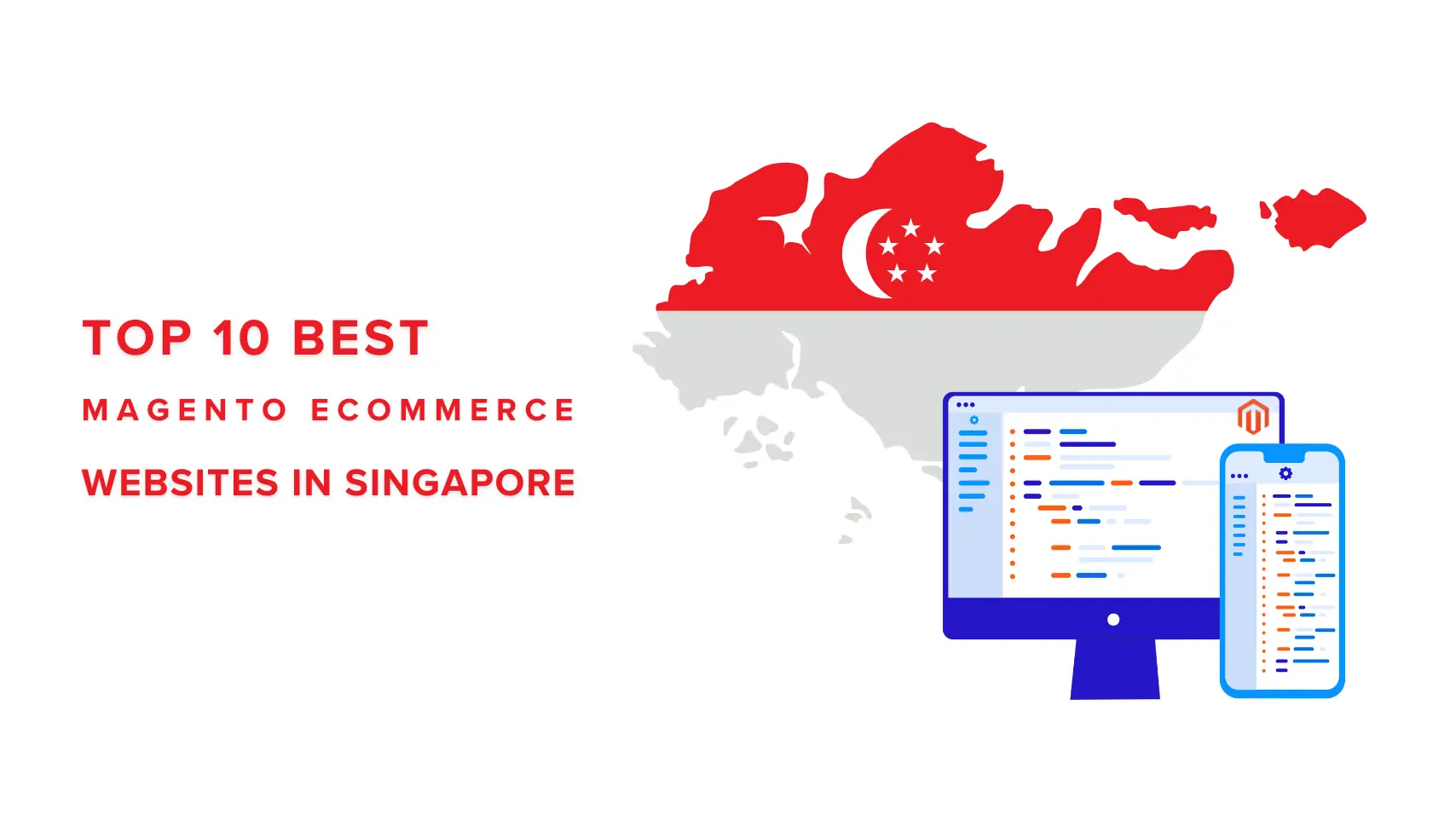
Building Magento eCommerce websites has become an undeniable trend in Singapore, where the blend of technology and creativity has brought unique and appealing shopping experiences to customers. According to Builtwith, there are currently over 600 live eCommerce websites on the Magento platform, and this list is predicted to continue expanding. This indicates that businesses in the Lion City have chosen Magento to create high-quality eCommerce websites, attracting customers and boosting sales.
In this article, let’s explore the top 10 Magento websites in Singapore that have leveraged the power of Magento to enhance the customer experience.

Dyson Singapore is not just an ordinary eCommerce website but also a destination for technology and premium design enthusiasts. With a range of products from vacuum cleaners to smart fans and hair dryers, Dyson continually innovates and enhances the quality of consumers’ lives.
Dyson’s Magento website is designed to provide an optimal shopping experience. From its bright and user-friendly interface to smart product search and categorization features, every detail is carefully crafted to ensure customers have the best online shopping experience. Additionally, Dyson is renowned for its excellent customer care service. From detailed product guidance to flexible return policies, they are committed to ensuring absolute satisfaction for every customer.
Website: https://www.dyson.com.sg/
Industry: Consumer Electronics
Traffic: 690,356/month
Ranking: #1,599 (Singapore) & #292,561 (Global)
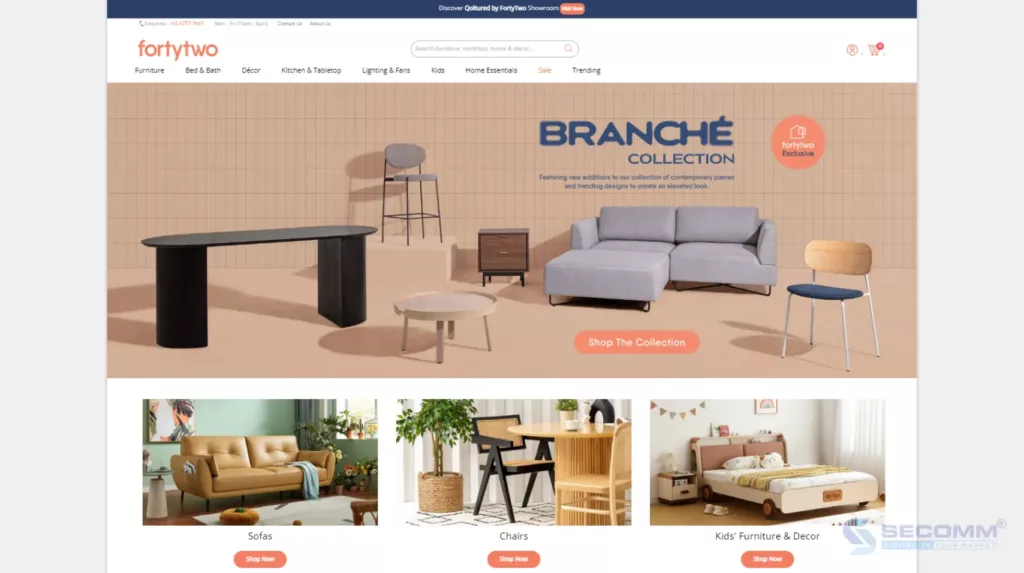
FortyTwo is one of the reputable destinations for household and interior decoration shopping in Singapore. With a diverse collection ranging from living room furniture, bedroom sets to household essentials, FortyTwo offers customers a convenient and varied online shopping experience.
FortyTwo’s eCommerce website is built on the Magento platform, focusing on creating a user-friendly interface. Not only does it display products clearly, but it also provides flexible product search and filtering features, making it easy for customers to find items that reflect their style and personal needs.
Website: https://www.fortytwo.sg/
Industry: Furniture
Traffic: 625,855/month
Ranking: #493 (Singapore) & #107,563 (Global)
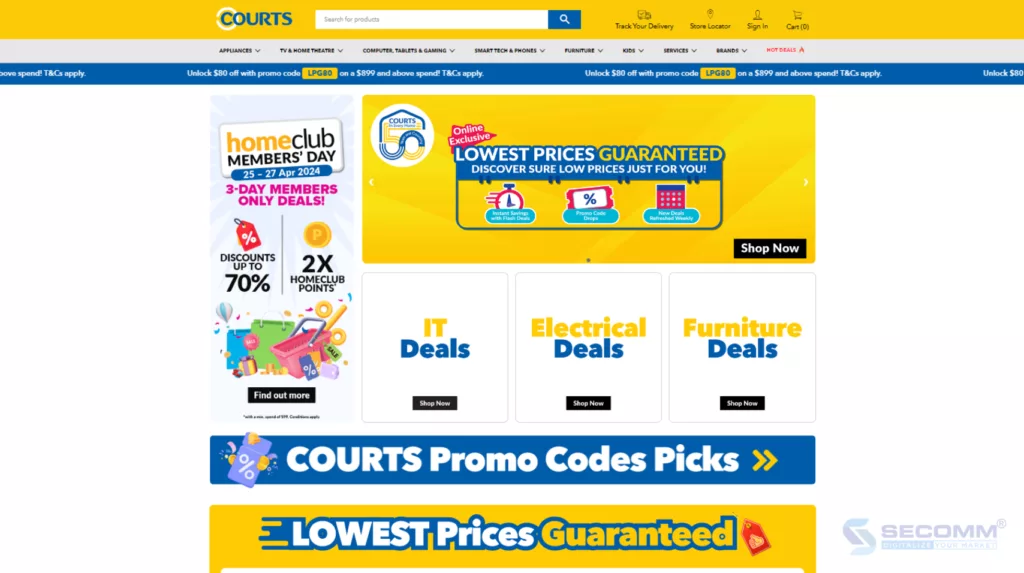
COURTS is known as the leading retailer in Singapore, specializing in a range of diverse products from furniture, electronics to household services. With over 14 stores across the island and a convenient e-commerce website, COURTS is the ideal destination for all shopping needs of Singaporean families.
COURTS’ Magento eCommerce website is designed and built to ensure an easy and comfortable online shopping experience. Through the Magento website, COURTS customers can easily search and select from a variety of high-quality products with flexible search and sorting features.
The brand stands out not only with its diverse products but also with its professional customer service. From shopping advice to delivery and installation services, they are committed to providing maximum satisfaction for every customer.
Website: https://www.courts.com.sg/
Industry: Consumer Electronics
Traffic: 510,240/month
Ranking: #502 (Singapore) & #105,498 (Global)
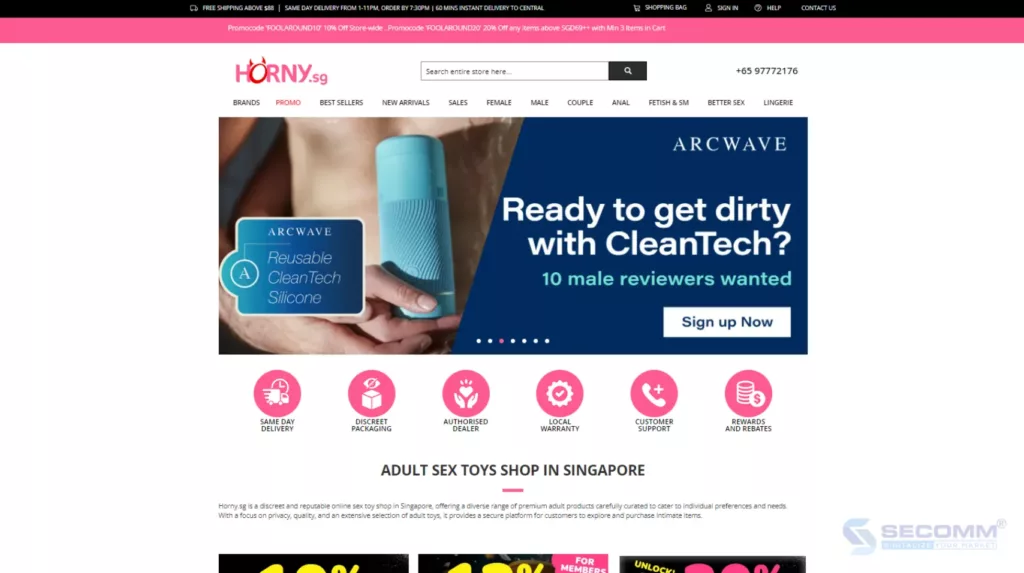
Horny is a unique eCommerce website based in Singapore, focusing on providing modern adult accessories. With a mission to help customers feel confident and satisfied in their romantic lives, Horny has created an enjoyable and convenient shopping experience through the Magento platform. Horny’s Magento eCommerce website is built with a focus on creating a reliable and user-friendly online shopping space. From attractive interface layouts to clear and detailed product displays, every detail is meticulously crafted to create the best shopping experience. Additionally, Horny stands out with the diversity of fashion and accessory products. Customers can easily find items that suit their individual needs.
Website: https://horny.sg/
Industry: Adult
Traffic: 482,417/month
Ranking: #1,133 (Singapore) & #193,753 (Global)

Saturday Club is not just a fashion brand but also an icon of confidence and freedom in women’s workwear fashion in Singapore. With a creative spirit and a mission to celebrate natural beauty, Saturday Club continuously brings fresh, stylish, and unique fashion collections.
Saturday Club uses Magento to develop its eCommerce website to provide customers with a smooth shopping experience with an easy-to-use interface. Customers can easily choose from a variety of products and the latest collections, with detailed information and clear images. Additionally, the brand stands out with attentive customer care service and fast and flexible delivery policies.
Website: https://sg.saturdayclub.com/
Industry: Fashion
Traffic: 406,335/month
Ranking: #2,115 (Singapore) & #240,670 (Global)
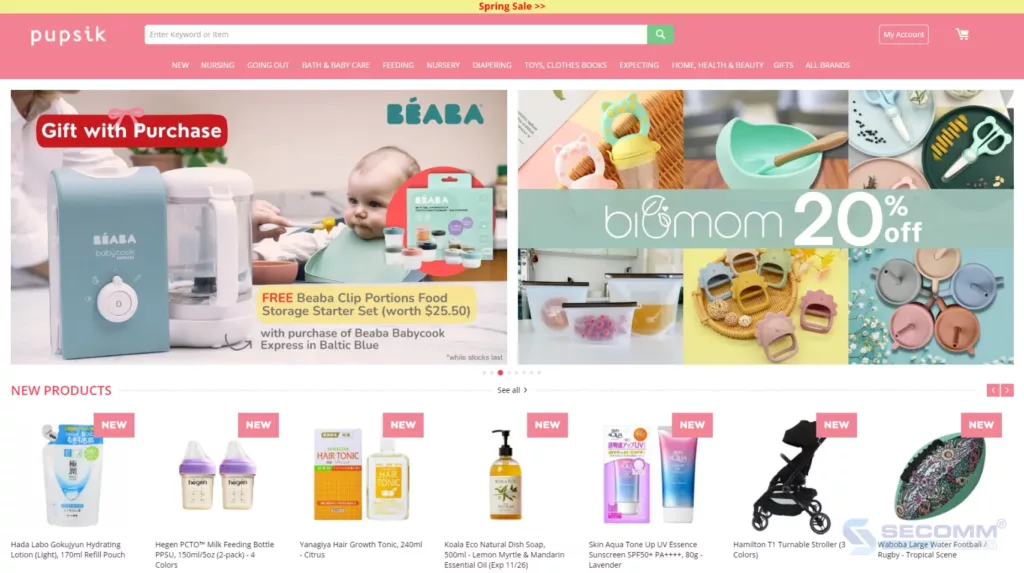
Pupsik is the go-to online shopping destination for parents in Singapore, where they can find everything they need for the care and nurturing of their children. With a humane mission and special attention to the needs of families, Pupsik is committed to providing a peaceful and convenient shopping experience.
Pupsik has built its Magento website to easily customize features and shopping experiences. From smart search features to product filtering and optimized checkout pages, every detail is focused on ensuring shopping becomes easy and quick.
In particular, Pupsik is famous for the diversity and quality of products for children and mothers. From clothing, toys to everyday essentials and healthcare products, they ensure that all family needs are comprehensively met.
Website: https://pupsik.sg/
Industry: Childcare
Traffic: 264,148/month
Ranking: #3,684 (Singapore) & #677,191 (Global)

Cellarbration is the ideal destination in Singapore for wine and alcoholic beverage enthusiasts. This brand boasts an extensive collection of wines and alcoholic beverages from top brands worldwide.
Shopping on the eCommerce website is also efficiently optimized by Cellarbration through the power of the Magento platform. From search operations to product browsing and payment, everything is deeply customized to ensure customers have a more engaging shopping experience.
Not only prominent for the richness of products but also for professional and dedicated customer service. Cellarbration is committed to customer satisfaction by providing personalized support and diversifying payment options as well as delivery.
Website: https://cellarbration.com.sg/
Industry: Wine
Traffic: 125,878/month
Ranking#6,676 (Singapore) & #1,075,981 (Global)

In Singapore, the Wine Collection brand is a favorite destination for wine enthusiasts who want to explore premium wines from the most famous wine regions in the world. Wine Collection also offers customers a rich and diverse collection of wines.
The Wine Collection’s Magento website is customized to optimize the experience, allowing customers to search for wines by origin, grape variety, explore special collections, and choose preferred payment and delivery methods.
Not only does it provide a modern and engaging online shopping space, but Wine Collection also serves as a source of wine knowledge. Customers can find articles and detailed guides on how to choose and enjoy wine to better understand the art and science behind the delicate flavors.
Website: https://wineconnection.com.sg/
Industry: Wine
Traffic: 82,788/month
Ranking: #12,447 (Singapore) & #1,701,444 (Global)

Far East Flora is a brand specializing in providing plant products, fresh flowers, and decorations made from greenery. The Far East Flora Magento eCommerce website is built with a priority on customer experience through a user-friendly interface and deeply developed and customized features. Customers can search for plants by filtering by type, size, and make quick payments with just one page. Additionally, Far East Flora’s fast and reliable delivery service is highly rated by customers. The brand is committed to delivering quality products to customers’ hands safely and promptly, helping them decorate living spaces beautifully and meaningfully.
Website: https://fareastfloragarden.com/
Industry: Gardening
Traffic: 40,864/month
Ranking: #20,995 (Singapore) & #2,327,136
(Global)
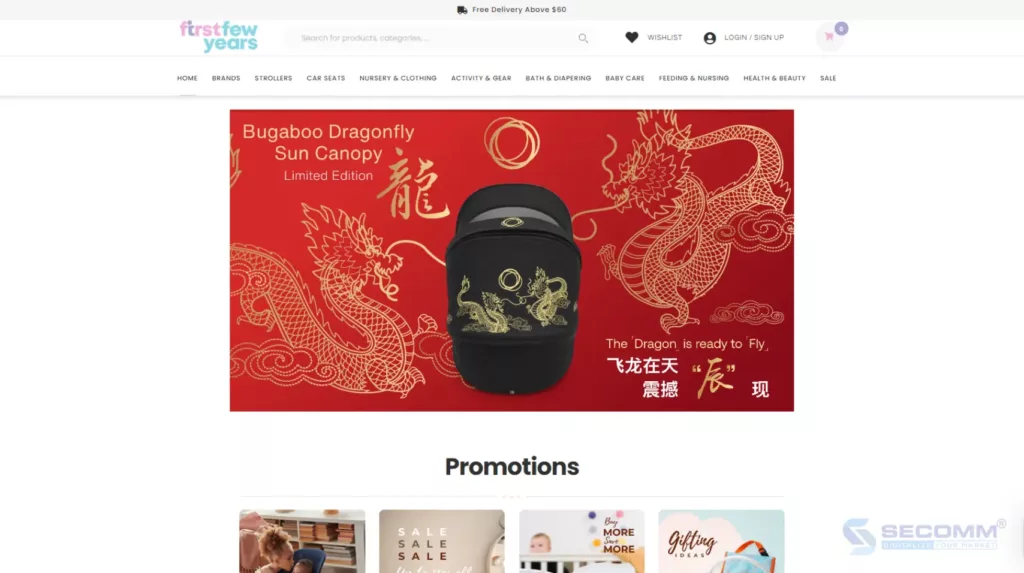
First Few Years is not just a store but also a loyal companion for parents in the journey of caring for their children from the early years. With a dedicated spirit and profound understanding of children’s needs, First Few Years provides a meaningful and trustworthy shopping experience.
The Magento website of this brand is not only a place for shopping but also an important source of information and support for parents. From advising on safe toy selection and development to sharing experiences in childcare, all information is conveyed sincerely and meticulously.
Website: https://firstfewyears.com.sg/
Industry: Childcare
Traffic: 10,245/month
Ranking: #86,167 (Singapore) & #7,519,723 (Global)
The Bottom Line
Above are 10 leading Magento eCommerce websites in Singapore, each providing customers with a unique and memorable shopping experience. From product diversity to professional customer service, each website has prioritized the mission of serving and satisfying customers.
Need more advice to build your first Magento website? Contact SECOMM today!
 2
2
 1,830
1,830
 0
0
 1
1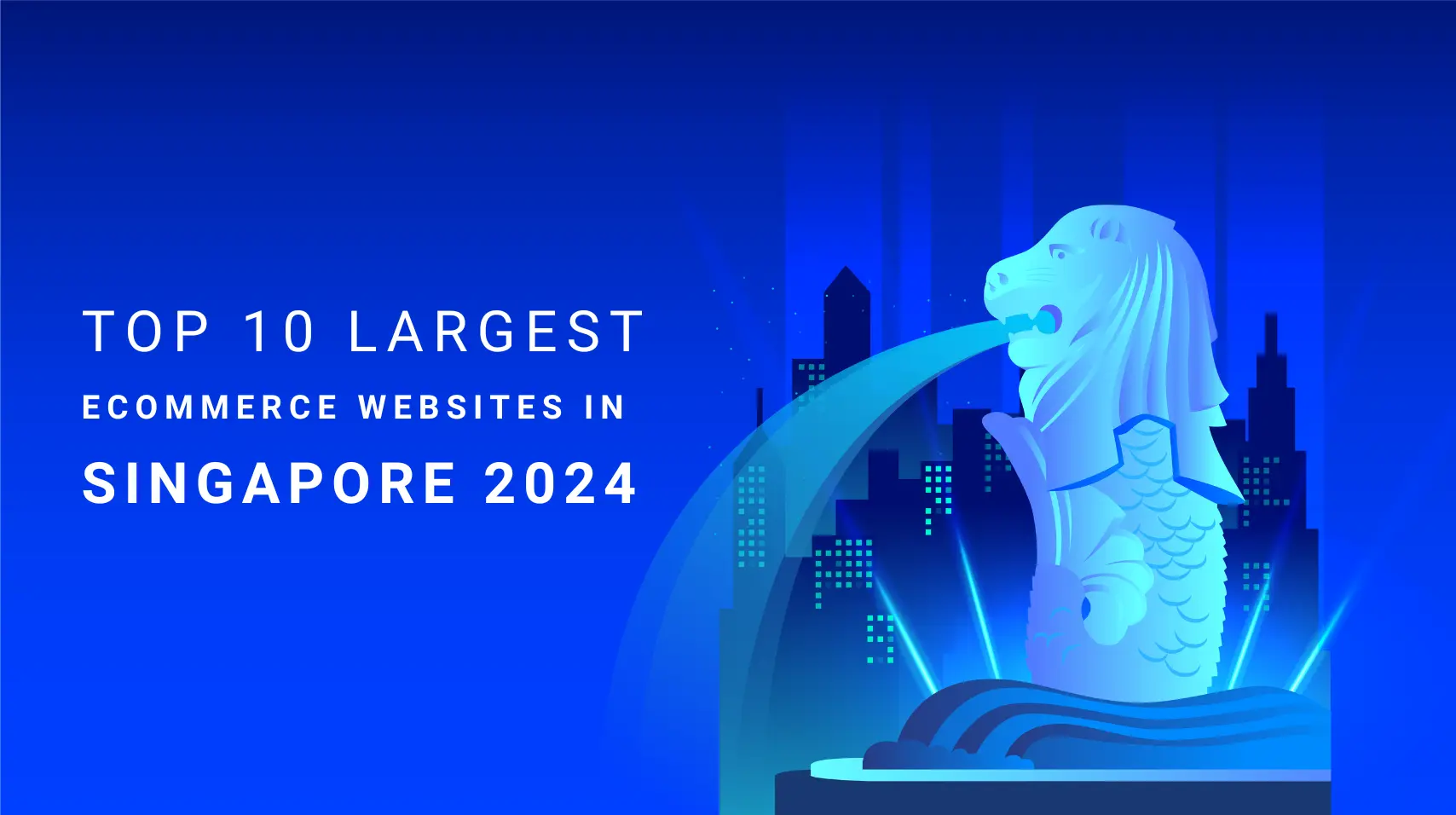
Online shopping has become an indispensable trend in Singapore. Therefore, consumers in this city have set higher demands for their online shopping experience, driving businesses to strive for optimizing their eCommerce websites to provide a unique and best shopping experience for customers.
Below are 10 brands heavily investing in the online shopping experience in Singapore, as collected by SECOMM from BuiltWith, AfterShip, and Similarweb.

Charles & Keith, a leading fashion brand in Singapore, was founded in 1996 by two brothers Charles and Keith Wong. Focusing on footwear, handbags, and fashion accessories, Charles & Keith quickly gained attention in the market for its modern, youthful fashion style at affordable prices.
Charles & Keith has chosen Salesforce Commerce Cloud to build its website. Thus, Charles & Keith’s website features a range of functions to create the most convenient and comfortable online shopping experience for users. These include advanced search with filtering and sorting, detailed product views with high-quality images and customer ratings, secure shopping cart and payment, along with order tracking and purchase history. Additionally, customers can enjoy loyalty rewards, seek customer support, read fashion blogs, and connect on social media to stay updated on the latest trends. With this diversity and convenience, Charles & Keith’s eCommerce website in Singapore has provided an excellent online shopping experience for users.

FortyTwo is a furniture and home accessories brand established in Singapore in 2007. FortyTwo offers a range of products from bedroom furniture, living room, kitchen to household items and interior decoration. The brand is known for providing quality products at competitive prices with fast delivery and attentive customer service. FortyTwo regularly updates and expands its product portfolio to meet diverse customer needs.
FortyTwo’s website is built on the Magento Open Source platform (Adobe Commerce free version). With this website, users can easily search and filter products, explore a variety of product categories from furniture to household items. Additionally, the website offers the ability to integrate attractive promotional campaigns and customer support, along with fast and secure delivery services.

COURTS is a leading electronics retailer in Singapore, Malaysia, and Indonesia. With over 40 years of experience, COURTS offers customers a wide range of product choices, convenient services, and competitive prices.
COURTS uses Magento Open Source to build its eCommerce website. This website provides diverse and convenient online shopping experiences for users with functions such as product categories, specific product search, store information, and order tracking on the website. COURTS also provides support services and information about promotional programs and product news.
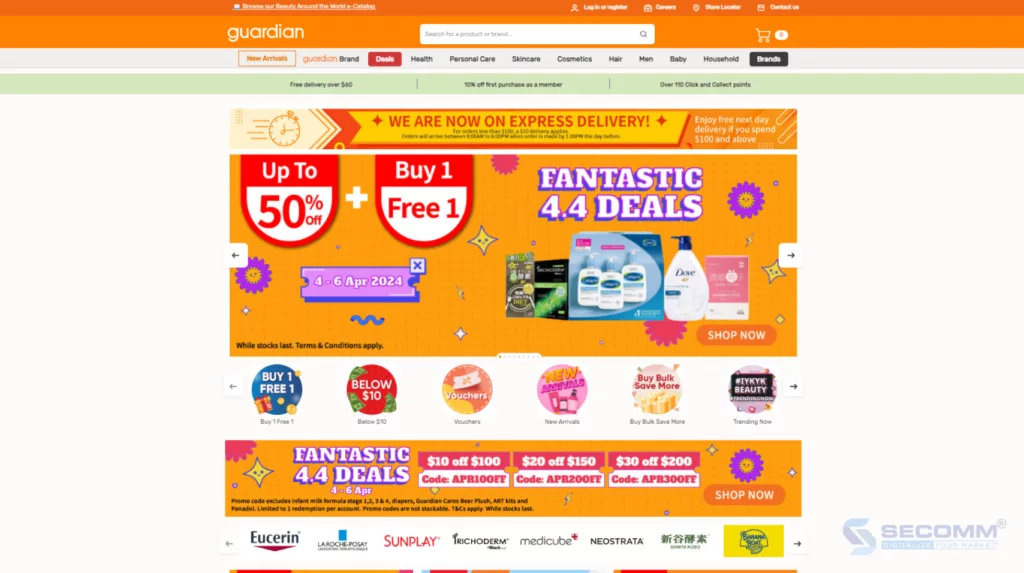
Guardian is a retail chain specializing in health care, cosmetics, and other consumer products. Guardian has a presence in many countries and regions around the world, including Singapore, with a range of products from famous and reliable brands.
Guardian’s website is built on the SAP Commerce Cloud platform, offering many useful features for users. Customers can easily search and purchase products, manage their shopping carts, and make convenient payments. At the same time, the website offers promotions and online support services to help customers have a comfortable and safe online shopping experience. Moreover, customers can also rate and provide feedback on products, providing useful information for other users.
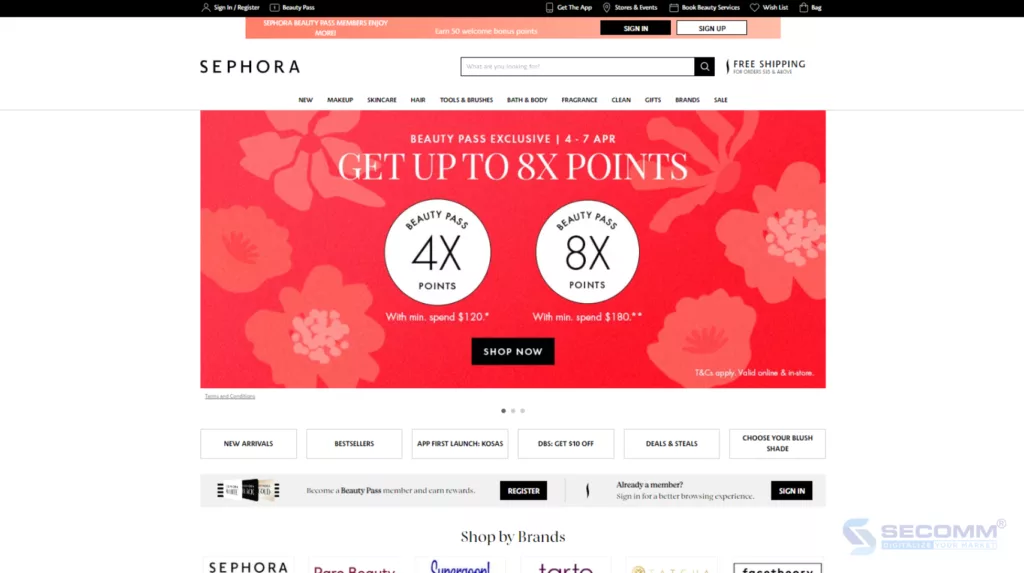
Similar to Guardian, Sephora is a global retail chain of cosmetics and beauty products, known for offering a range of cosmetics, skincare, and beauty products from leading brands worldwide. Currently, Sephora has a presence in the Singapore market with physical stores in major shopping centers and an eCommerce system, including a website and app for customers. Sephora is favored for its product diversity, customer care services, and innovation in the online cosmetics shopping experience.
Sephora’s eCommerce system in Singapore is built on the Vue.js and Nuxt.js programming languages. With this system, Sephora customers can quickly search and explore products through smart search and various filters. The online shopping experience is optimized with detailed product information, sharp images, and customer reviews.
Sephora’s app is also highly rated, making shopping easier for customers with features like “Virtual Artist” and receiving notifications about promotions. In general, Sephora offers a range of features and services to meet customers’ cosmetics shopping needs, creating a professional and convenient online shopping experience.
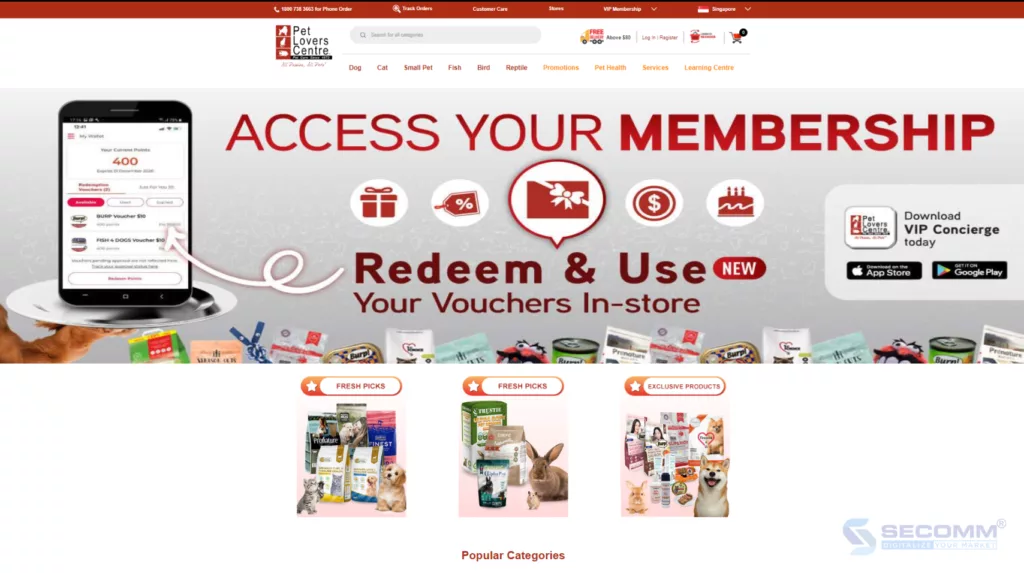
Pet Lovers Centre is a leading pet products and services retailer in Asia. Established in 1973 in Singapore, Pet Lovers Centre now has over 160 stores in 5 countries: Singapore, Malaysia, Thailand, the Philippines, and Vietnam. Pet Lovers Centre is committed to providing quality products and services from reputable brands at competitive prices.
The Pet Lovers Centre website is built using PHP programming language and has outstanding features to provide users with a convenient online shopping experience. Users can search for products based on various criteria and use filters to select suitable products. The multi-layered product categories are classified by pet type, ensuring diversity and richness. The VIP Member program brings benefits to customer loyalty strategies. Integrating customer reviews on Google Maps helps users evaluate the quality of products and services provided by Pet Lovers Centre. Additionally, the website builds a quick shopping function to save time, customer management feature, and reorder support to efficiently manage customer information and orders.
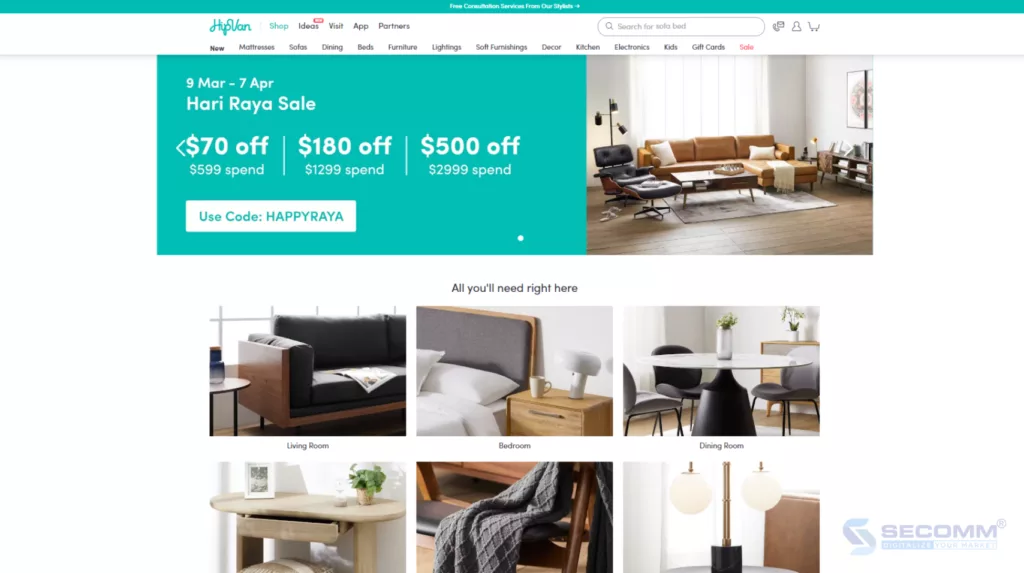
HipVan is an online retail website specializing in furniture and home decor, headquartered in Singapore. The brand was founded in 2013 with the aim of providing customers with high-quality furniture products at affordable prices, along with a convenient shopping experience and excellent customer service.
HipVan’s website is built using the Ruby on Rails and React framework, with Ruby being the primary programming language. Its notable features include building a community for sharing interior design ideas, image-based product search, and allowing customers to upload images of desired products. Particularly, the augmented reality (AR) feature enables customers to view products in their real-life space before making a purchase. Additionally, HipVan offers free interior planning services to help customers conveniently plan and design their living space.

The Hour Glass is a premium watch retailer in Singapore founded in 1974. Currently, The Hour Glass has over 50 stores worldwide and is an authorized distributor for many leading watch brands such as Rolex, Patek Philippe, Audemars Piguet, Omega, Cartier, and more.
The Hour Glass’s online store is built on the WooCommerce platform and CMS WordPress, providing a convenient platform for customers to explore and purchase watches from renowned brands like Rolex, Patek Philippe, Audemars Piguet, and other luxury brands. In addition to product offerings, the website also provides detailed information about the services offered by The Hour Glass, including repairs, maintenance, and polishing of watches, to help customers maintain and preserve their products effectively. Furthermore, the website continuously updates the latest news in the watch industry along with special events organized by The Hour Glass, creating a comprehensive and immersive experience for users.
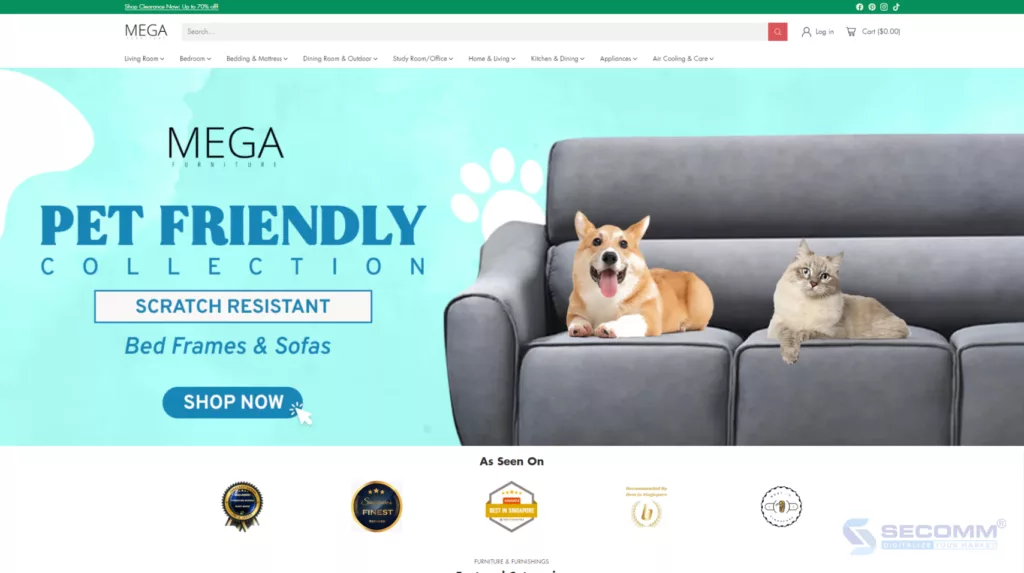
Megafurniture is a furniture retail company in Singapore, specializing in providing a range of furniture products for living rooms, bedrooms, dining rooms, and various other spaces in homes. Megafurniture is known for offering affordable and high-quality products, attracting the interest of many consumers. Additionally, the furniture brand is also renowned for its early investment in the online store, allowing customers to conveniently shop for furniture online.
Megafurniture’s website is built on the leading Shopify Plus platform, with basic and advanced features optimized for the furniture industry. The purchasing process is designed to be simple and straightforward, providing a convenient online shopping experience for customers. Secure online payment support through various methods increases flexibility for consumers. Megafurniture also offers multiple delivery and installation options to meet customer needs. Moreover, features like quick product view and product comparison assist users in making smart and efficient purchasing decisions. This, combined with fast checkout features, significantly enhances the online shopping experience.
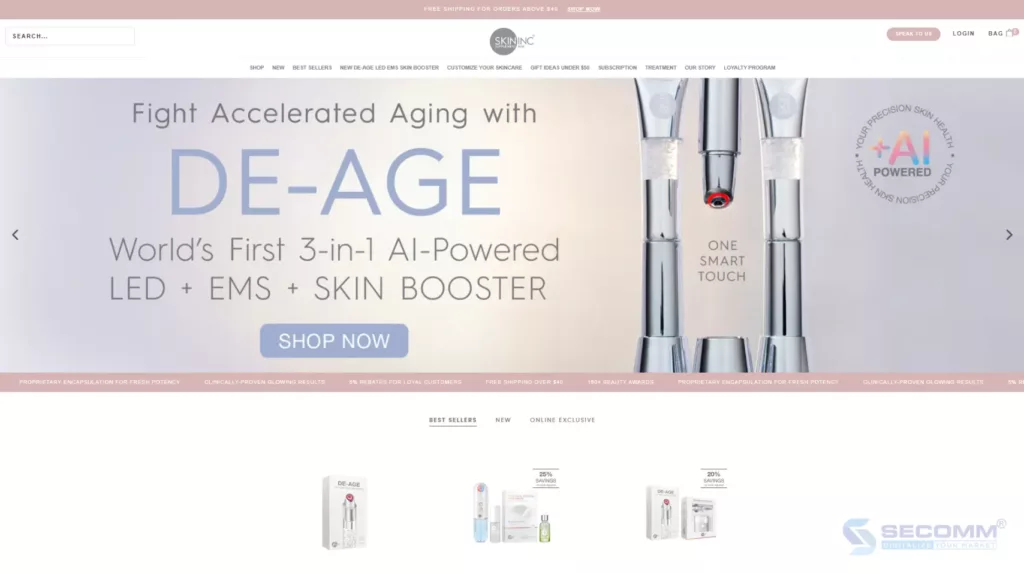
Skin Inc is a skincare brand specializing in manufacturing and distributing high-quality skincare products. The company focuses on providing skincare solutions, including brightening, moisturizing, anti-aging, and treating various skin concerns.
Skin Inc transitioned from the Magento platform to Shopify Plus in 2019, aiming to enhance the customer experience by deploying multiple website versions for different markets and customer segments. Using the LaunchPad feature, Skin Inc employees can create sales events without developer assistance. Additionally, Shopify Plus seamlessly integrates with marketing tools and loyalty programs, enabling personalized communication and data-driven marketing strategies.
Conclusion
The above is a list of the top 10 eCommerce websites in Singapore. By implementing leading platforms such as Magento Open Source, Shopify Plus, and various others, these brands provide optimized online shopping experiences, attracting the interest of customers both domestically and internationally.
During its development process, SECOMM has collaborated with numerous clients from Singapore to create notable eCommerce websites, with the most prominent being the project to develop an online liquor supply system at Changi Airport.
 2
2
 2,649
2,649
 0
0
 1
1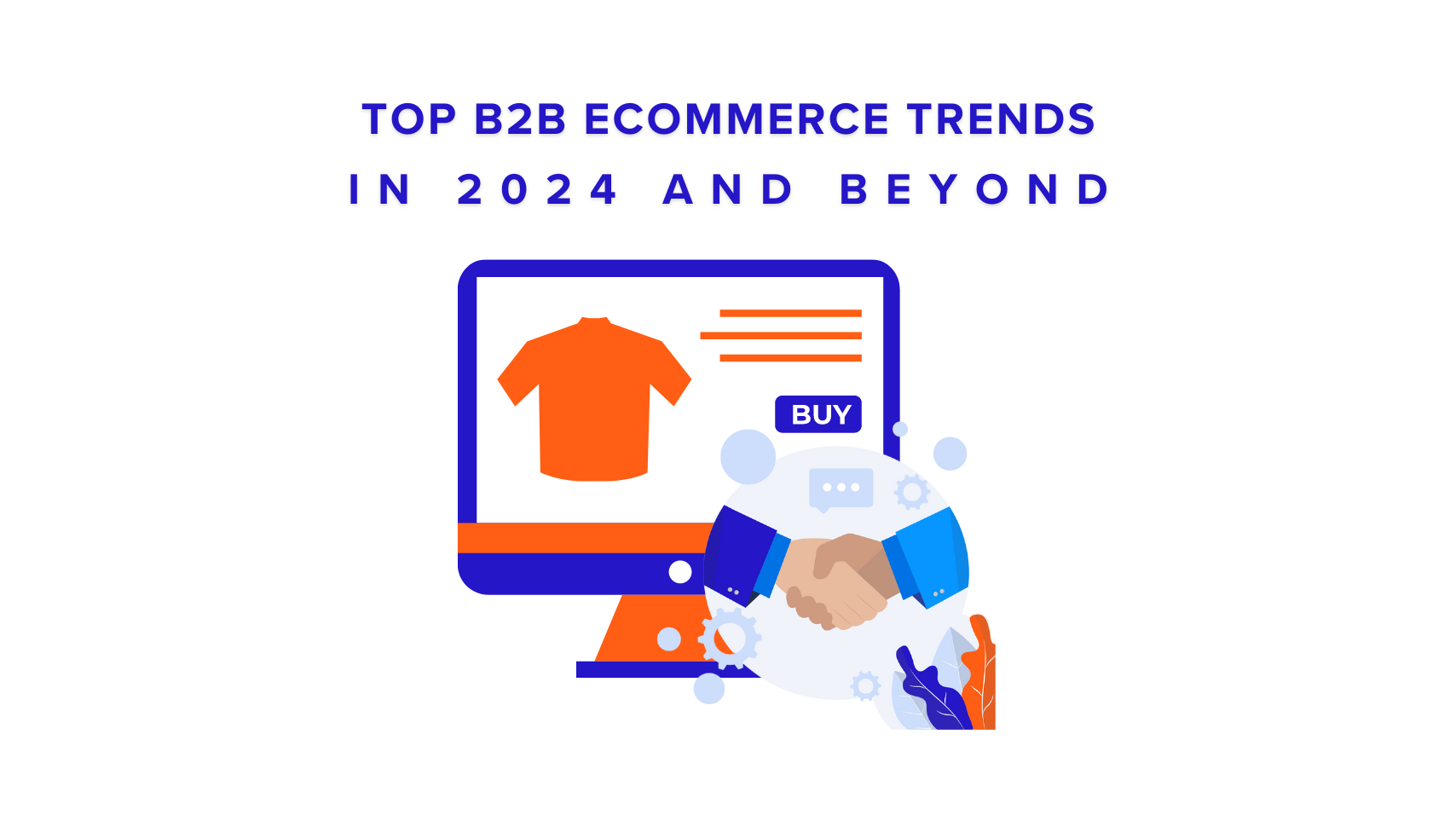
In the current B2B market, buyers are becoming more tech-savvy, mirroring the independent purchasing patterns of B2C consumers. This shift is driven by the changing demographics of B2B buyers, with 64% being Millennials and Gen Z, according to Forrester. Moreover, Gartner notes that 44% of Millennials prefer to make purchases without the involvement of sales representatives.
As a result, B2B eCommerce trends are rapidly evolving, influenced by both consumer behavior and technological progress. The increasing integration of generative AI into eCommerce, and the merging of online and offline experiences, are all pivotal trends. Keeping pace with these developments is essential; otherwise, businesses risk lagging in the fiercely competitive B2B eCommerce landscape.
In this article, let’s explore the top 8 B2B eCommerce trends that will shape the industry in 2024 and for many years to come.
AI is making big strides in online shopping. AI chatbots are now a key part of customer service, offering personalized assistance and product suggestions. For example, Shopify Magic has AI tools that help create content and provide tailored shopping advice.
Chatbots are widespread, with over 1.4 billion people interacting with these AI systems worldwide. Retailers who have adopted AI have seen a significant increase in sales. It’s predicted that by 2027, 80% of retail leaders will use AI to enhance efficiency in their operations.
Beyond retail, AI is set to make a major impact on the economy. PwC estimates that AI could contribute as much as $15.7 trillion to the global GDP by 2030, affecting many industries.
Businesses are increasingly turning to automation to improve efficiency without growing their teams. According to Markets and Markets, the marketing automation industry is expected to grow from USD 5.2 billion in 2022 to USD 9.5 billion by 2027, with a 12.8% yearly growth rate. Additionally, 57% of companies plan to use automation to make their employees more productive.
Shopify Flow is a tool that automates routine tasks for businesses. It activates specific actions based on rules set by the user, simplifying the workflow.
With the rise of AI and automation, businesses are increasingly embracing an omnichannel strategy. This trend allows for seamless interaction across various channels, helping companies to be more budget-efficient in managing both their online and physical storefronts, ultimately enhancing customer satisfaction.
Data shows companies with robust omnichannel engagement retain 89% of customers, compared to 33% for those without. Additionally, 59% of consumers prefer self-research over interacting with sales-focused staff, highlighting the need for sales teams to prioritize customer guidance. Moreover, establishing a solid omnichannel base is essential, followed by streamlining all digital touchpoints for a unified and efficient customer journey. You can learn more on how to build an effective omnichannel strategy here.
In B2B e-commerce, the harmony of digital touchpoints is essential for delivering an exceptional customer experience and driving sales. Integrating all digital channels, such as payment systems, online stores, and customer support, is crucial. This integration provides a unified customer profile, streamlining management across multiple channels and focusing on omnichannel sales.
Streamlining transcends mere system connections; it ensures seamless data flow for personalized customer interactions. For instance, leveraging browsing habits for advertising and purchase history for customer service can develop comprehensive customer profiles.
Ultimately, streamlining is about fostering a consistent, reliable customer experience that bolsters brand interaction. Companies excelling in this are well-positioned for enduring success in the competitive B2B e-commerce market.
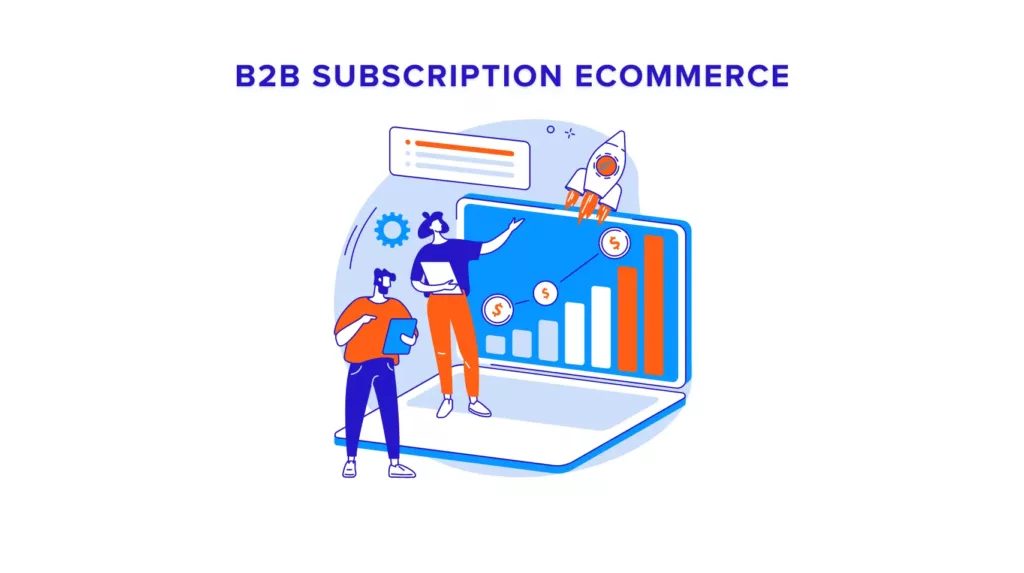
Subscription models are becoming vital for customer loyalty in B2B eCommerce, with the Global Subscription eCommerce Market expected to hit US$ 478 billion by 2025. These models offer a predictable revenue stream and deepen customer relationships beyond one-time sales. They cater to various business needs, from product supplies to software services. Moreover, as buying habits shift online, subscriptions align with customer preferences for self-services and problem-solving services.
Moreover, businesses often find that prioritizing the enhancement of the customer experience yields better results than constantly pursuing new leads. In the B2B sector, nurturing existing relationships and promoting additional purchases can be more profitable strategies than seeking out new customers. Find more about subscription eCommerce here.
Headless architecture is a way of building online stores where the front-end and back-end work separately but talk to each other through an API. This setup lets the back end hook up with any front end, making it perfect for businesses that sell across different channels.
Looking ahead to 2024, headless B2B eCommerce is on the rise. It’s not going to replace traditional eCommerce completely, but it gives businesses a leg up by being more adaptable, integrating better with other systems, scaling up easily, and making life easier for developers. All this leads to a better experience for business customers. The headless commerce market is booming; it’s expected to grow to $32.1 billion by 2027, with a yearly growth rate of 20.5%. You can find more information about headless eCommerce here.
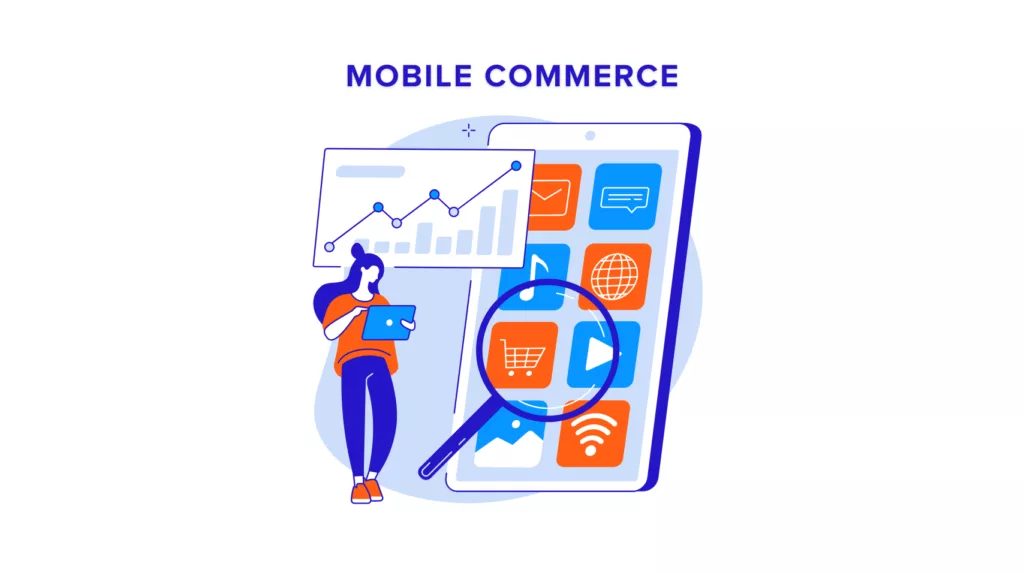
The trend of using mobile phones for online shopping is on the rise, primarily due to the advancements in online payment systems. This shift is attributed to the seamless buying experience provided by mobile commerce, where customers are quickly redirected to payment apps like MoMo or ZaloPay, offering a hassle-free transaction compared to traditional website payments that require them to pick up their phones for the payment process.
Furthermore, mobile devices are leading the charge in the B2B digital commerce evolution, with a significant majority of consumers preferring them over desktops and tablets. This growing preference underscores eCommerce platforms’ importance in crafting responsive and well-tuned mobile shopping experiences.
To leverage this trend, eCommerce sites need to go beyond mere mobile-friendliness and aim for mobile optimization. This involves designing interfaces that facilitate thumb-friendly navigation, expediting the checkout process, and ensuring swift site loading times. By concentrating on these aspects, eCommerce sites can become preferred shopping destinations, boosting online sales. In the realm of mobile commerce, the ease and speed of the shopping experience are directly proportional to the likelihood of completing a sale.
The B2B eCommerce sector is rapidly adopting digital efficiency in payment processes. Automation and advanced digital transactions are replacing traditional methods, significantly reducing operational costs and manual labor. This modernization benefits both companies and customers, offering a more streamlined payment experience.
In the dynamic realm of B2B eCommerce, the transition from traditional payment methods to automated and advanced digital transactions is accelerating. A study by Markets and Markets highlighted that adopting automated payment systems can reduce operational costs for accounts receivable departments by 50% and cut down manual tasks by 85%. This evolution is beneficial not only for businesses but also for customers, who now have the convenience of making payments at their own pace, thus enhancing the overall payment experience.
The proliferation of mobile technology has revolutionized both shopping and payment behaviors. As smartphones become integral to the consumer journey, offering various payment options, including digital wallets like Apple Pay or Samsung Pay, has become essential. The year 2024 will mark a point where not accommodating such payment methods could be detrimental to customer retention.
The ‘Buy Now, Pay Later’ (BNPL) model is emerging as a significant trend, particularly in Vietnam, where it’s a departure from the traditional installment payments. Platforms like Shopee are incorporating BNPL, indicating its potential to reshape the B2B payment landscape significantly.
In the US, Buy Now, Pay Later (BNPL) has won over more than a third of consumers recently, and it’s also gaining traction in Europe and Africa. This surge is tied to shifts in how people, particularly the younger crowd, prefer to manage their money, with BNPL’s flexible and wallet-friendly options being a hit. Gen Z is leading the BNPL charge, as they’re stepping into the workforce in big numbers. The trend shows that BNPL use among Gen Z is set to grow from 36.8% in 2021 to 47.4% by 2025. You can read more about BNPL here.
Augmented Reality (AR) is transforming B2B eCommerce, turning simple spaces into interactive showrooms. With AR, businesses create 3D models that customers can explore in detail, offering an engaging experience far beyond what static images can provide.
Vietnam is riding the AR wave with remarkable vigor. The market is booming, with forecasts predicting a surge from US$96.4 million in 2023 to US$181.5 million by 2028, thanks to an impressive annual growth rate of 13.48%. AR is already a hit in children’s books and playgrounds, but it’s set to become a staple in our everyday lives, moving beyond novelty to become a standard in our daily routines, especially in the B2B eCommerce market, much like the memorable Oreo campaign during Tet 2020.

Wrap Things Up!
B2B eCommerce is booming, outpacing traditional stores. This surge is driven by digital advances and the economic shift after the pandemic. It’s not just a change; it’s a new online business era, where tech innovations benefit both shoppers and companies.
Navigating the digital marketplace can be complex, but you don’t have to do it alone. With a solid decade of crafting B2B eCommerce solutions, SECOMM is here to support your business’s growth journey. Feel free to contact SECOMM or call our hotline at (+84) 28 7108 9908 to discover solutions that align with the latest trends and propel your business forward.
 2
2
 2,970
2,970
 0
0
 1
1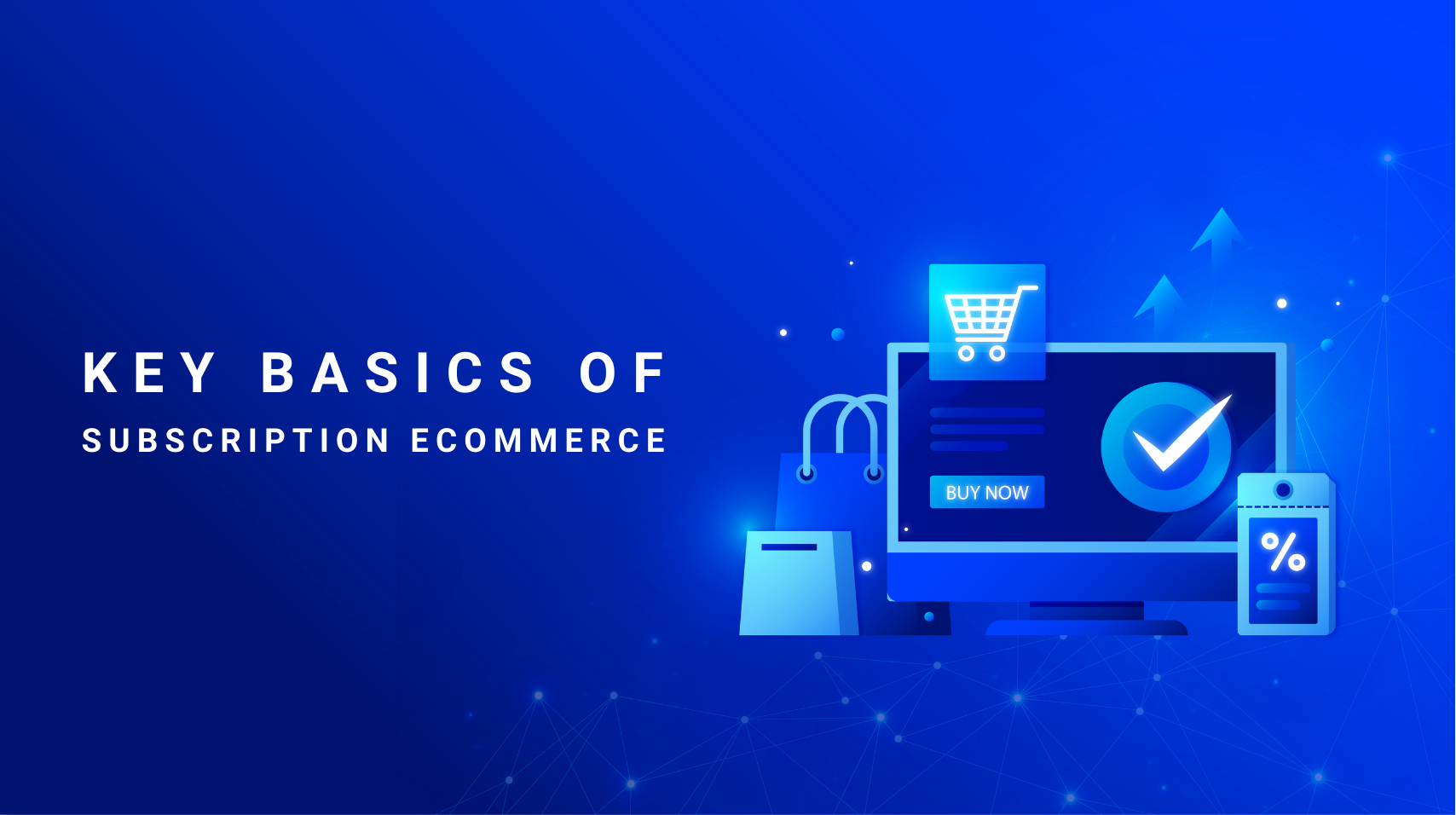
Subscription-based eCommerce, while not a novel concept, is increasingly being adopted in tangible forms, preserving its inherent value. Consider, for instance, the scenario of launching a seafood restaurant. You enter into an arrangement with a seafood supplier who commits to delivering fresh seafood daily.
This arrangement exemplifies a subscription model, which often includes perks such as discounts, promotional offers, or simply more favorable pricing compared to purchasing items individually from various suppliers.
If the concept still seems unclear, fear not! We’ll delve deeper into the mechanics of subscription eCommerce in the paragraphs below.
Subscription eCommerce is a business model where customers subscribe to receive regular deliveries of products or access to services over a specified period. Transactions are facilitated online, and customers continue to receive deliveries until they choose to cancel their subscription or until the agreed-upon subscription term concludes. Payments can be various, including one-time payments, periodic billing cycles, or automated payments.
In addition, there are several types of subscription-based online shopping, but in this blog, we will mention three common types. The first one is product or service subscriptions in which customers will receive annual product delivery or service access like gym memberships, daily grocery goods, etc.
The second one is the membership program, which is quite similar to most people. A good example of this could be “Hoi Cam” from Guardian, where customers can get exclusive discounts and a lot of benefits when joining.
The third one might be familiar to many of you, which is called Software-as-a-Service (SaaS). For example, when using Microsoft 365 or Canva customers need to pay monthly or yearly to use all the functions of the tools and software. You can find more about SaaS here.
Additionally, the eCommerce subscriptions market seems to have risen steadily in recent years with the global market size reaching US$ 193.6 Billion in 2023. Moreover, this number is forecasted to reach US$ 5,014.4 Billion by 2032, showing a growth rate of 43.56% from 2024 to 2032.
From the information above, it prompts an important consideration: what are the tangible benefits and drawbacks for businesses when adopting eCommerce subscription programs? Assessing the impact of these programs is crucial for understanding their influence on operational dynamics and customer engagement.
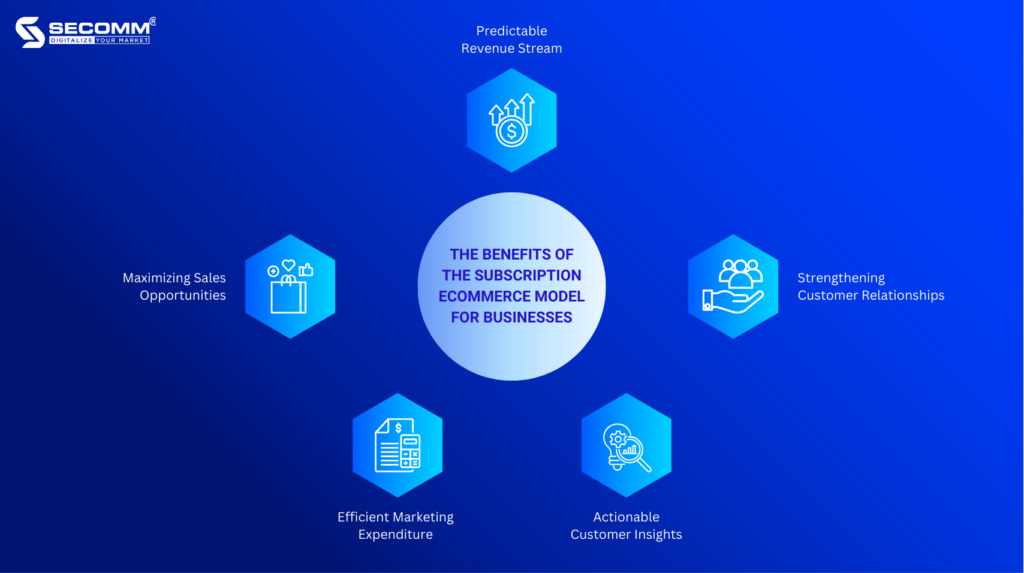
ECommerce subscription models aren’t just a trend; they are a strategic approach that offers businesses a plethora of benefits, from predictable revenue to deepening customer relationships.
Contrary to the unpredictable nature of one-time transactions, subscription models offer a steady revenue flow. This advantage enables your organization to formulate a comprehensive budget for marketing endeavors spanning an entire quarter or year, necessitating only slight adjustments. Essentially, businesses are equipped to more accurately project their financial trajectory by establishing a consistent subscriber base pledged to recurrent payments. This later helps enhance strategic planning and facilitate expansion prospects.
Subscriptions are more than transactions; they are the foundation of a long-lasting relationship with customers. A study by Zuora highlights that 93% of subscribers believe companies should invest more in customer satisfaction. By adopting a subscription model, businesses are not merely selling a product—they are nurturing a connection that encourages customers to return, fostering loyalty and trust.
Truly understanding customers goes beyond superficial interactions. It involves analyzing their behaviors and preferences over time. Subscription models are instrumental in gathering this data, offering insights into customer tendencies, shopping habits, and interests. This information is crucial for customizing products and services, enhancing marketing strategies, and identifying growth opportunities – all while potentially reducing market research costs.
Additionally, enterprises need to capitalize on the insights derived from their eCommerce subscription base to enhance marketing initiatives, rather than allowing this valuable data to remain underutilized. Armed with an in-depth understanding of customer predilections, companies are empowered to devise bespoke experiences that truly engage their clientele. This strategic personalization not only bolsters customer loyalty but also fortifies the company’s market position, diminishing the likelihood of customers exploring alternative options.
Subscribers typically exhibit greater loyalty and, as a result, have a propensity to increase their expenditure over time, which can significantly enhance a company’s profitability. Additionally, the subscription framework provides fertile ground for upselling and cross-selling strategies. Businesses can boost their average order value and realize extra revenue from their current subscribers by offering assorted subscription options or supplementary products and services. Take, for instance, a fitness establishment that could propose special offers on workout gear to its patrons, thereby establishing a reciprocal relationship where the customers benefit from the perceived value, and the business sees a rise in sales.
Understanding the purpose and goals of your eCommerce subscription model is essential. Whether you’re targeting revenue growth, increased profitability, or business expansion, defining these objectives upfront will shape a successful strategy.
Ease of subscription is crucial in the eCommerce industry. A straightforward and user-friendly sign-up process not only improves conversion rates but also increases the value perceived by customers, making them more likely to sign up.
To ensure optimal accessibility and ease of registration, it is crucial for eCommerce subscription services to be prominently featured and straightforward to navigate, thereby accommodating a broad digital audience. For instance, consider the “Hoi Cam” program by Guardian: the membership is subtly referenced via a brief mention in each social media post, rather than being highlighted in a dedicated post. Similarly, on their website, the registration option is relegated to a minor tab, devoid of any prominent banners to signal its presence.
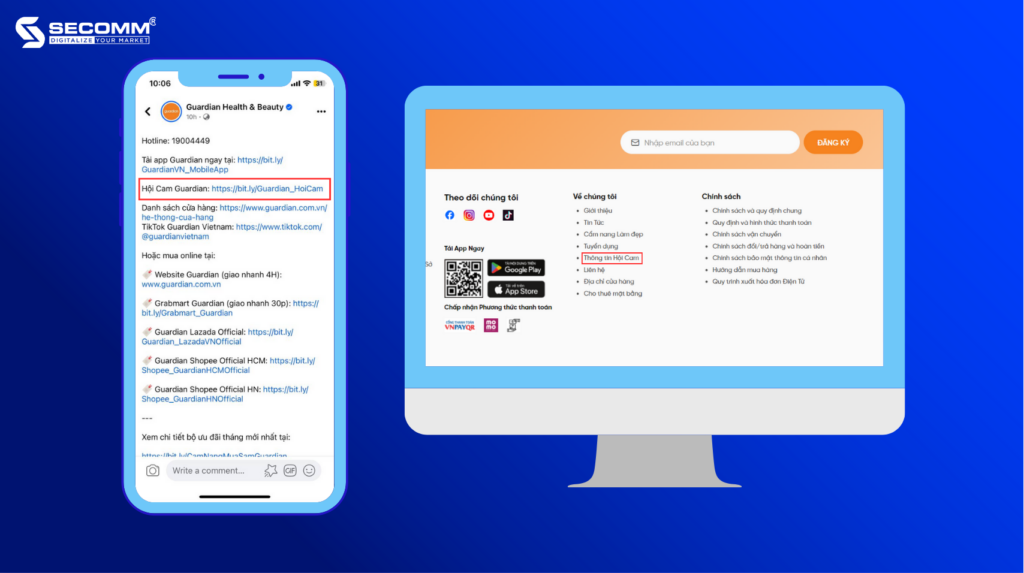
Even in physical outlets, the program is scarcely communicated by staff members. This approach necessitates that customers invest effort into seeking registration details, which could lead to frustration and a diminished user experience.
In the eCommerce subscription business, building strong customer relationships is crucial. It involves recognizing your customers’ importance. If customers don’t see the value, they may feel overlooked and undervalued, and consider other options. So, it’s important to grow loyalty and strengthen these bonds over time. Remember, when your service team consistently provides excellent support, customers will trust your brand more, which is key when they decide to renew their subscription.
Also, developing detailed customer personas is helpful. Knowing your customers’ preferences, habits, and spending limits helps you tailor your services to fit their needs, keeping them engaged and happy. When customers notice that you care about their preferences, they’re more likely to stay loyal and not switch to another business.
Your pricing strategy should reflect your product/service type, business objectives, and customer personas. Starting with a basic package covering essential services is advisable if you’re unsure of customer preferences. This approach allows you to launch your service while remaining adaptable. As you gather customer feedback and preferences, you can adjust your packages to suit different customer segments, ensuring your offerings evolve to meet customer demands effectively.
When implementing a subscription-based eCommerce model, it’s crucial to be aware of potential pitfalls to ensure seamless business operations.
The key to a successful subscription model is maintaining long-term subscriber engagement. Incorporate personalized elements, exclusive content, and loyalty rewards to make subscribers feel valued. Moreover, you could highlight the unique benefits your service offers over competitors to discourage churn.
For new subscribers, businesses need to simplify the sign-up and showcase their services’ value straightforwardly to reduce the likelihood of early drop-offs.
If your business involves physical goods, managing inventory against customer demand is critical. Monitor customer preferences closely and adjust inventory accordingly. Always have a contingency plan for supply chain disruptions to maintain consistent product availability.
As your subscriber base expands, the complexity of your infrastructure must evolve accordingly. Consider the user experience – a seamless service is expected, particularly for digital offerings akin to Canva. Your infrastructure should be robust enough to handle a spike in users without compromising performance.
Is everything making sense so far? Before we conclude today’s session, let’s examine the following case study for a practical understanding.
Amazon Prime serves as an exemplary model of subscription eCommerce success, offering a suite of benefits that extend well beyond swift shipping. Subscribers gain access to an array of advantages, such as complimentary two-day delivery, an extensive library of streaming content, and exclusive shopping deals. This service is not merely about rapid order fulfillment; it represents a continuous stream of value and convenience.
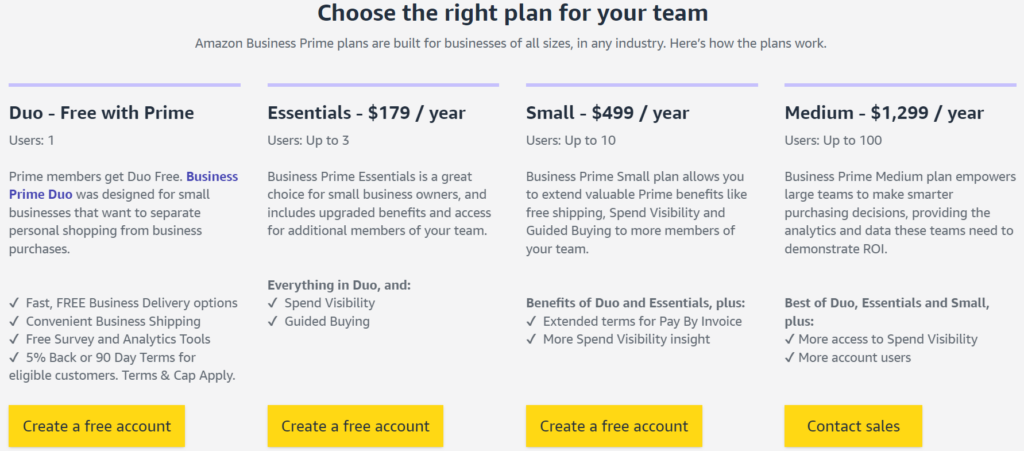
The distinctiveness of Amazon Prime lies in its amalgamation of various services into a single subscription package, which streamlines customer experience and fosters brand loyalty. The program’s expansion reflects Amazon’s dedication to customer satisfaction and its strategic addition of new perks, all while integrating seamlessly with the larger Amazon eCommerce ecosystem. This strategic bundling is a key factor in customer retention, positioning Amazon as a leader in the eCommerce sector.
Subscription eCommerce is a strategic approach adopted by numerous businesses, yet only a select few have truly harnessed its potential. This guide is designed to deepen your understanding and provide actionable insights to effectively utilize subscription eCommerce. For those ready to embark on this journey and in search of a trusted advisor, Secomm is your ideal partner. We offer end-to-end solutions to address all your eCommerce needs, from technical infrastructure to event management.
 2
2
 2,776
2,776
 0
0
 1
1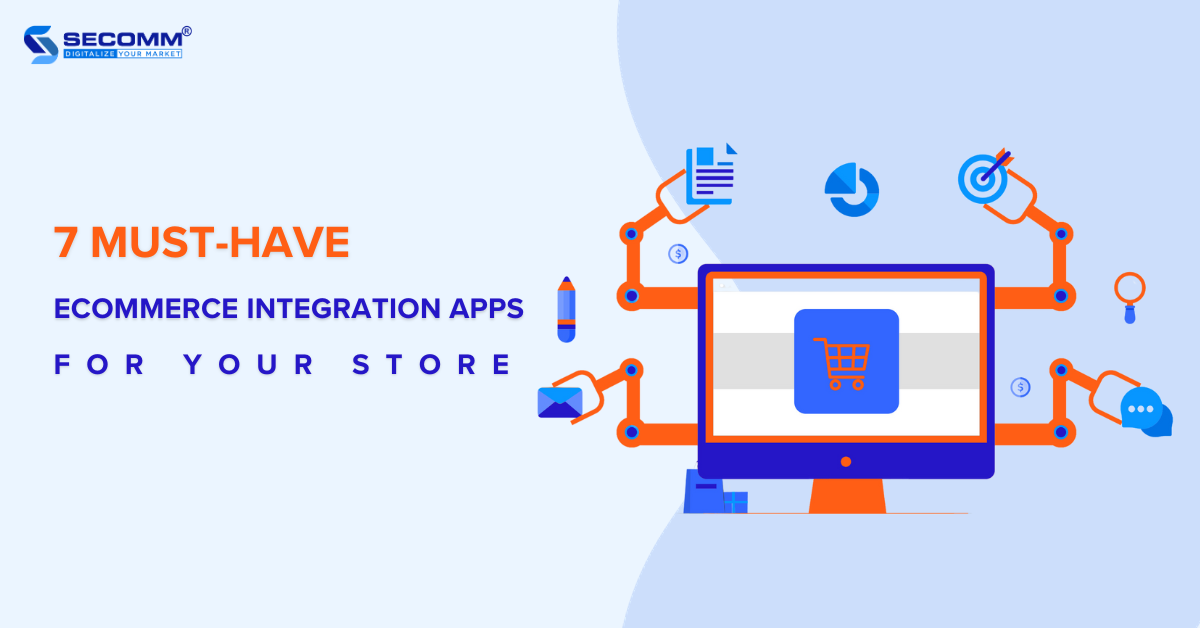
Several crucial factors impact the efficiency of running an online store. Among these, effectively implementing eCommerce integrations plays a key role in helping you streamline your operations and reduce risks.
Below are 7 essential integrations that you should include in your eCommerce website.
PIM (Product Information Management) is one of the common eCommerce integrations. The PIM system is used to collect, organize, and manage product information, including details such as product descriptions, images, prices, product attributes, customer reviews, and ratings.
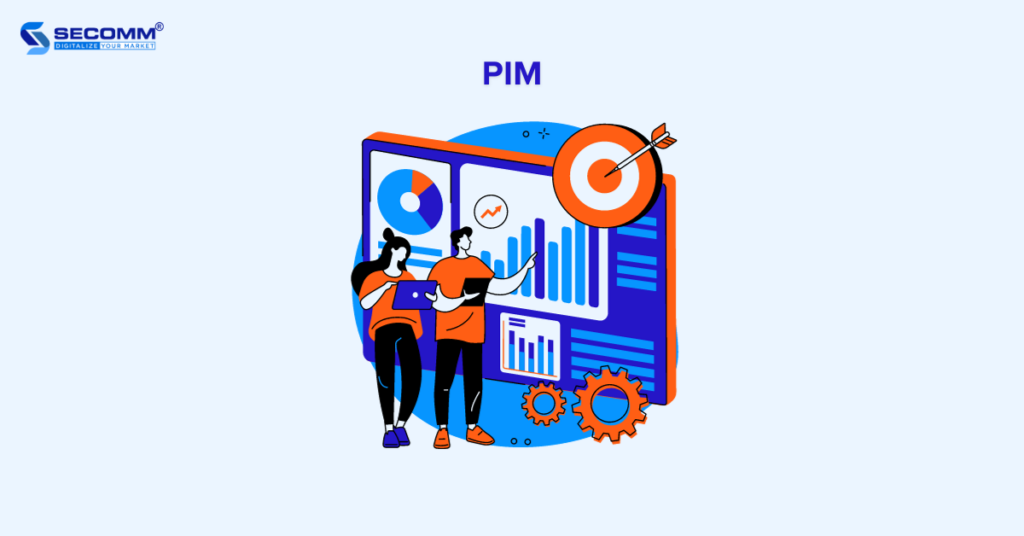
This tool helps you manage product information across diverse platforms, making it easier for customers to choose their desired products. Plus, PIM helps you save time compared to manual data entry, thereby reducing personnel costs.
Take Akeneo PIM, for instance; it is an open-source platform tailored for managing product information effectively. Akeneo is also flexible enough to seamlessly integrate with various systems such as ERP, CRM, POS, and popular eCommerce platforms like Magento, Shopify, and WooCommerce.
Currently, Akeneo offers three main PIM plans, including:
The Order Management System (OMS) helps you process orders in various channels.
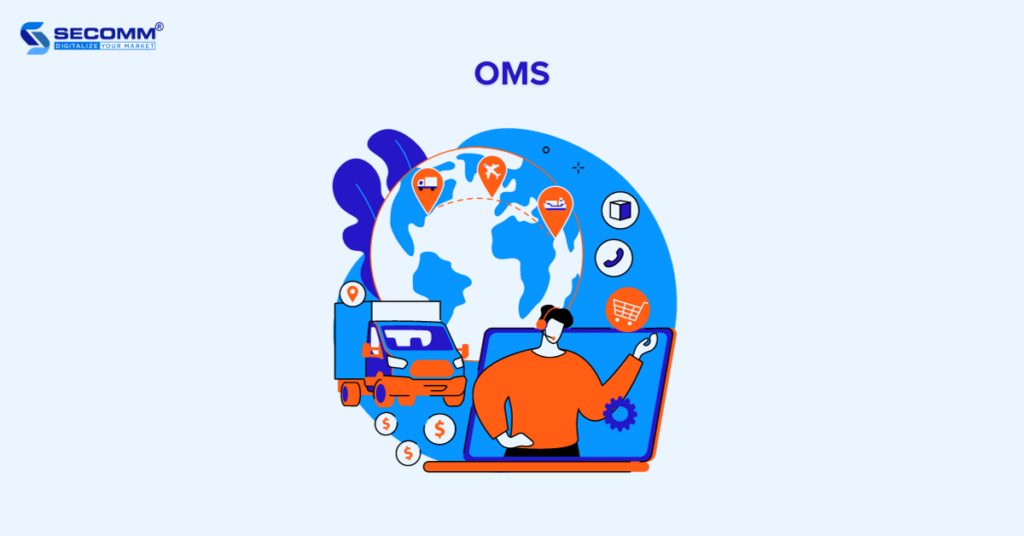
This eCommerce integration not only helps businesses efficiently manage orders, optimizing the customer experience, but also collects and analyzes data at peak and off-peak sales times, as well as for specific orders, top-selling items, and consumer behavior.
So, you’ll easily adjust their business strategies and manage inventory effectively.
For example, Fabric OMS is a Distributed Order Management (DOM) system designed to help you streamline the order processing process, including online purchases at the store (BOPIS), delivery to the store, and in-store order fulfillment.
Fabric’s order management solution helps you integrate and manage the entire order process on a single interface. You can optimize your order processing, minimize inventory discrepancies, and free up resources for other important tasks.
The Warehouse Management System (WMS) will help you manage the flow of goods, inventory, and shipping to facilitate sales and order fulfillment.
By automating order processing and optimizing the layout of goods in the warehouse, WMS accelerates order processing, reduces order preparation time, and enhances the ability to quickly respond to customer demands.
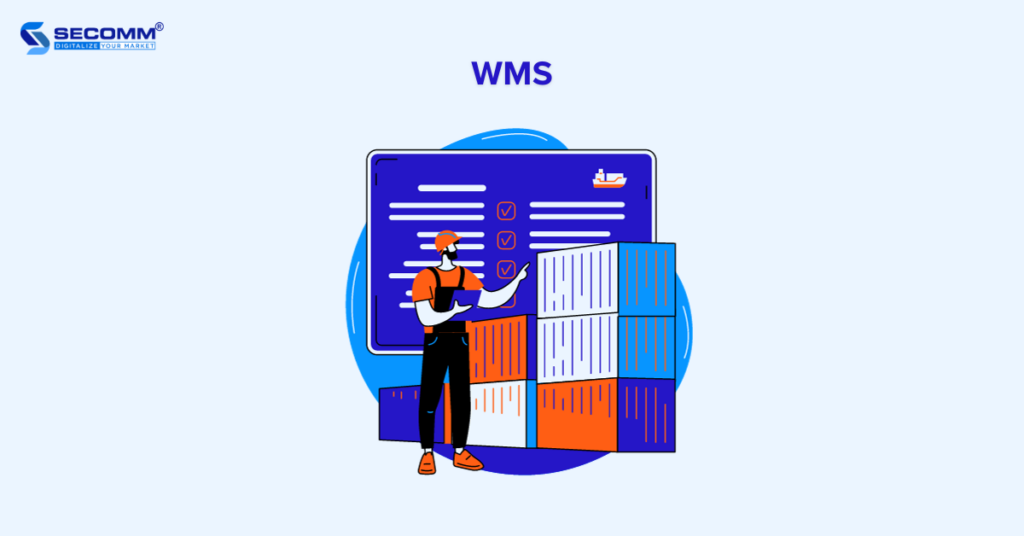
For example, Oracle Warehouse Management Cloud (WMS) is one of the eCommerce integrations that offers a cloud-based warehouse management system. It is well-suited if you’re looking for effective warehouse inventory management.
It automates warehouse processes such as receiving, storage, order processing, and shipping, particularly well-suited for a wide range of business scales. It also seamlessly integrates with ERP, CRM, and other supply chain solutions.
POS (Point of Sale) is a system that includes both hardware and software components, or it can be as straightforward as a point-of-sale device like a computer, tablet, smartphone, or receipt printer.
POS helps you manage and execute sales transactions, calculate payments, generate receipts, manage inventory, handle customer relations, and provide crucial sales-related information.
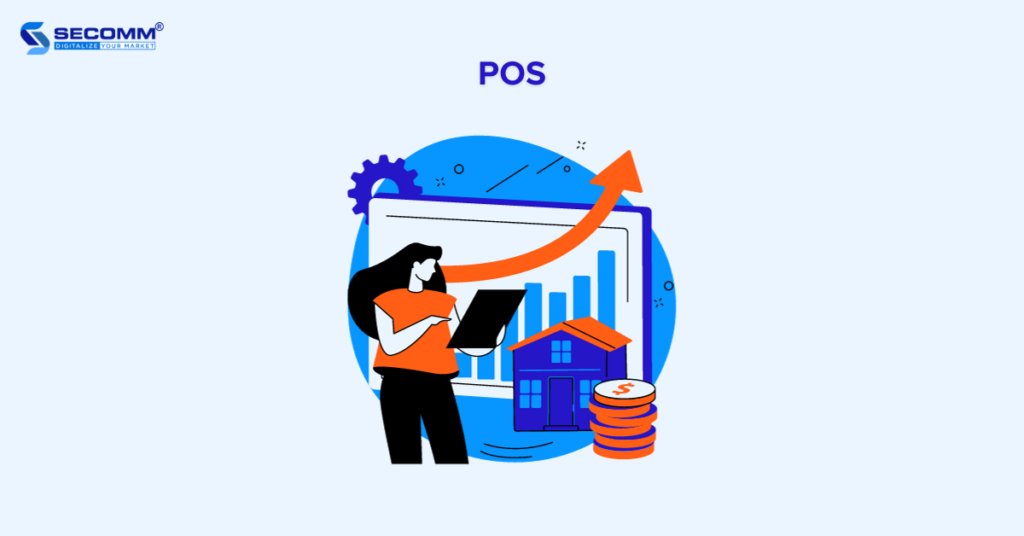
For instance, the Square POS system, developed by Square, has garnered the interest of numerous large businesses globally due to its free features. However, each transaction conducted through the POS incurs a fee of 2.6% and 10 cents for each tap, dip, or swipe.
For the “Buy Now Pay Later” model, the fee is 6% and 30 cents. Additionally, Square provides tailored POS packages for businesses with revenues surpassing $250,000.
Xem thêm:
CRM (Customer Relationship Management) helps you organize and manage customer information, including contact details, purchase history, and interactions. So, you’ll easily tap into customer needs and preferences, optimizing the shopping experience and increasing order conversion rates.
Moreover, CRM allows internal departments to interact and work on a unified and automated system, saving time and costs.
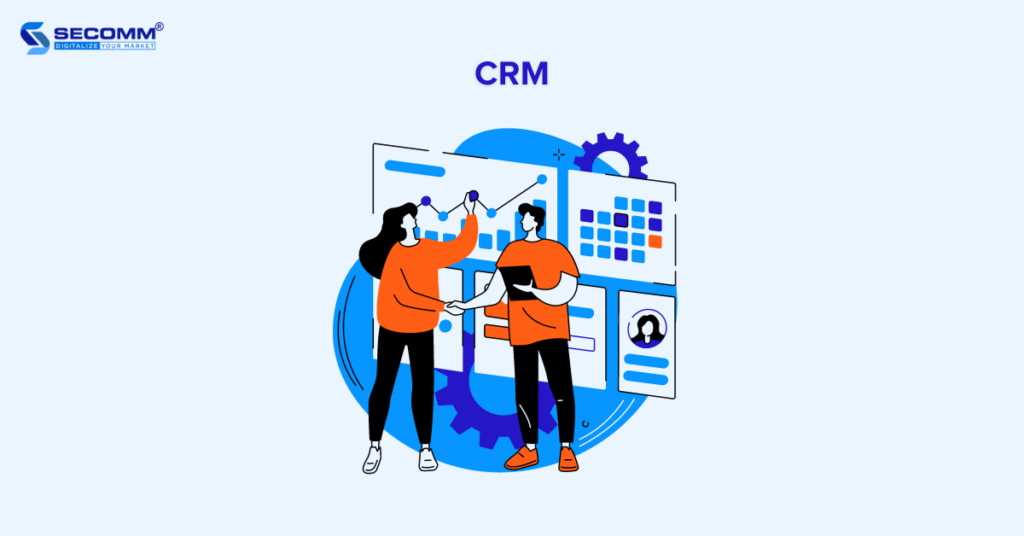
For example, Dynamics 365 Sales is one of the CRMs developed by Microsoft. With its intuitive interface, easy setup, and flexible customization capabilities, you can manage and enhance the efficiency of the sales process.
the system provides a “Real-time Insight” feature to deliver real-time insights from sales calls, such as customer emotions and sentiments. This helps businesses assess and strategize for their sales teams.
Currently, the system offers three plans:
Learn more:
Instead of relying on separate, isolated software systems lacking interdepartmental cohesion, ERP (Enterprise Resource Planning) integrates all software into a unified system.
The ERP eCommerce integration helps you manage all organizational activities, from inventory control and orders to financial planning and customer interactions.
You’ll maximize time efficiency, minimize costs, boost business productivity, and reduce unnecessary workforce.
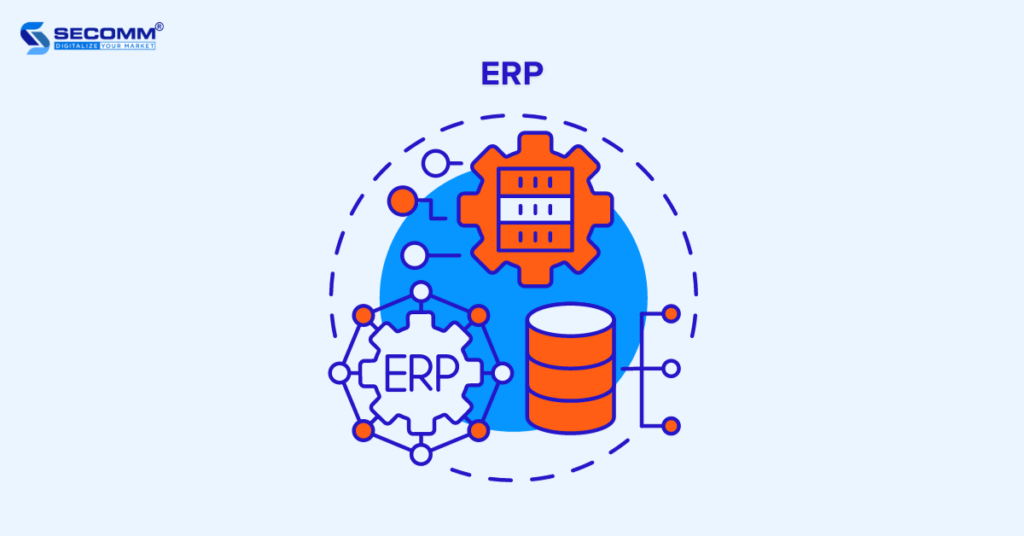
For example, Oracle ERP is one of the top global ERP software known for its outstanding features for operational efficiency.
Currently, Oracle provides three different plans tailored to specific needs:
Learn more: 6 best enterprise ERP software
Business Intelligence (BI) helps you analyze data from various sources such as eCommerce websites, POS systems, CRM, and other data sources. Plus, you’ll gain a deeper understanding of customer behavior, shopping trends, and factors influencing sales performance.
By using BI, you can also predict shopping trends to formulate specific strategies, while simultaneously monitoring financial performance, including forecasting sales figures, profits, and other financial indicators. This helps you allocate resources accurately.
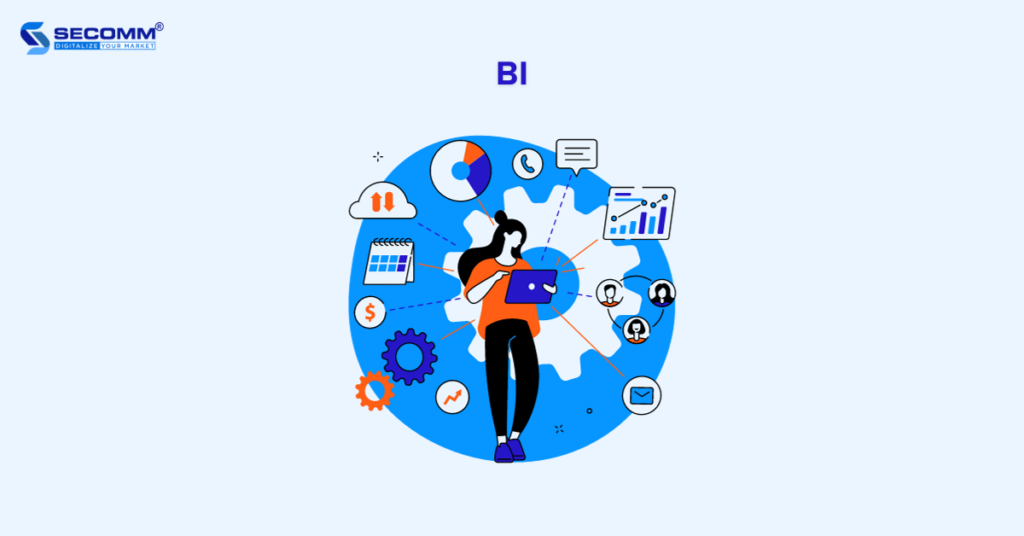
For example, Tableau is a widely used BI tool suitable for various individuals and organizations. With a user-friendly interface that requires minimal technical knowledge, Tableau allows users to easily create reports and visualize data.
The ability to connect and integrate data from various sources, including cloud data, and transform it into visually appealing charts and graphs, makes it easy for users to analyze trends and information
Deploy eCommerce integrations today!
Above are 7 popular eCommerce integrations to build your eCommerce website and enhance your online presence. You’ll choose your best-suited systems depending on the strategy, estimated budget, and business direction.
With profound knowledge of the eCommerce industry and experience in deploying integrations for all sizes of businesses, SECOMM is committed to proposing cost-effective solutions to develop your high-performing eCommerce system.
Contact or call directly on the SECOMM hotline (02871089908) to get started today!
 2
2
 3,932
3,932
 1
1
 1
1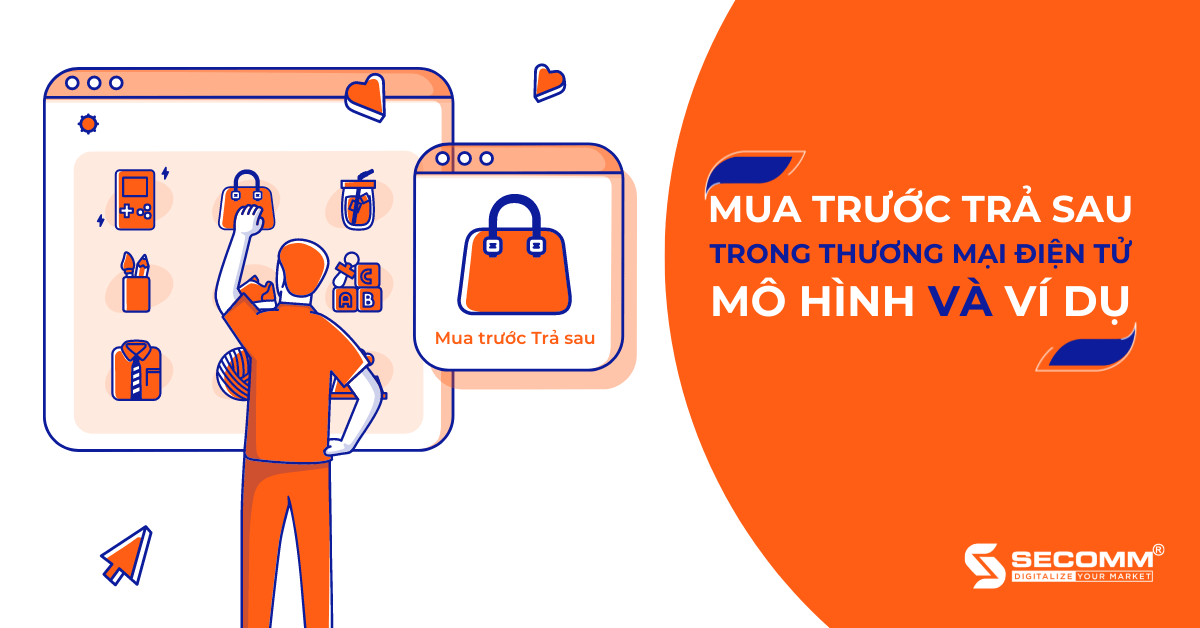
The Juniper Research report titled “Buy Now Pay Later: Regulatory Framework, Competitive Landscape & Market Forecasts 2022-2027” predicts that the global user base for Buy Now Pay Later (BNPL) will exceed 900 million by 2027. In Vietnam, the BNPL payment method is expected to experience an annual growth of 126.4%, reaching 1,123.9 million USD in 2022.
Buy Now Pay Later (BNPL) is a short-term financial arrangement that allows consumers to make immediate purchases and defer the payment to a future date, typically without accruing interest.
In BNPL, the financial technology (Fintech) organization facilitating the service directly pays the purchase amount to the seller on behalf of the customer. The customer then repays this amount gradually to these organizations over a period, often extending from one to several months.
When using BNPL, customers can make payments through bank transfers or have the amount automatically deducted from their debit card, bank account, or credit card. While the specific terms and conditions may vary between companies offering BNPL services, the general operational mechanism is similar to credit card instalment plans. However, BNPL is often considered much simpler, and additionally, it typically does not involve interest charges; instead, late payment fees are calculated as a percentage of the product or service value.
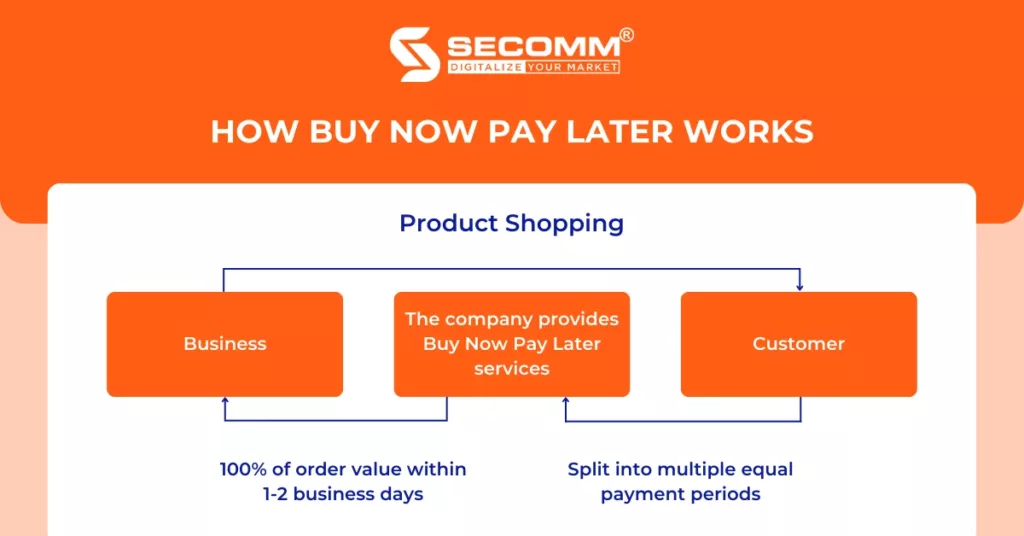
With the BNPL model, consumers can make immediate purchases even if they don’t have the financial capacity to pay the entire shopping cost upfront. This payment is divided into shorter instalment periods, corresponding to smaller amounts, reducing financial pressure on consumers. Additionally, BNPL typically does not entail annual fees or hidden charges, and the registration process is simple and quick, averaging less than 15 minutes. In general, BNPL companies usually only require customers to be at least 18 years old and own a bank card, without specifying a minimum personal income.
However, BNPL often comes with a relatively low consumer spending limit, typically ranging from 20 to 30 million VND, to meet the needs of purchasing items such as fashion, cosmetics, phones, laptops, electronic components, etc. If consumers do not know how to control their spending, they may easily engage in excessive shopping as there is no immediate need to pay the full amount at the time of purchase. This can lead to late payments for the instalment periods and additional penalty fees.
Collaborating with BNPL organizations to launch BNPL programs with 0% interest can help businesses attract more customers without incurring excessive marketing costs. With this approach, businesses can encourage customers to make purchasing decisions more quickly without extensive financial consideration, thereby significantly boosting revenue. Moreover, instead of offering discounts or freebies, the ability to pay gradually without urgency and without incurring interest aligns with customer psychology and needs.
However, many businesses still hesitate to implement BNPL models due to concerns about not being able to control the debt of individual customers. Additionally, this potential model is relatively new to the Vietnamese market, so there are not many payment service providers offering BNPL services, and there is a scarcity of experienced eCommerce website development units capable of efficiently integrating this functionality.
The BNPL model is revolutionizing the global consumer credit sector, but many people still confuse BNPL with credit card instalment plans offered by banks.
So, what are the differences between Buy Now Pay Later and credit cards?
| Format | Buy Now Pay Later | Credit Card |
| Unit accepting payment | The seller allows BNPL payment method | Banks issue credit cards |
| Registration process | Register quickly, completely online | The procedure requires a lot of paperwork |
| Time | 1 to 3 minutes | Have to wait for censorship, which can take up to several days, even weeks |
| Credit limit | Depends on buyer profile | Depends on buyer profile |
| Card maintenance fee | All free | Average 299,000 VND/year |
| Registration fee | All free | Average 50,000 VND/card |
| Conversion fee in instalments | All free | Average 200,000 VND/transaction, or calculated as a percentage of transaction value |
Comparison table of Buy Now Pay Later with Credit Card
Despite trailing behind the global trend, the BNPL model in Vietnam is forecasted to explode due to the market falling into a favourable timeframe. This is influenced by the impact of the Covid-19 pandemic, which has significantly propelled the development of online shopping and eCommerce. Additionally, the BNPL model aligns more with the preferences of Generation Z than traditional credit cards.
Two out of the four largest eCommerce platforms in Vietnam have begun implementing BNPL, affirming the tremendous potential of this model in the online shopping market.
In 2020, Sendo was a pioneer in eCommerce by early adoption of BNPL through collaboration with financial solution provider Atome, offering Buy Now Pay Later services. With BNPL, Sendo aims to make shopping more convenient for customers, removing concerns about financial issues often associated with credit cards, such as increasing interest rates for late payments over an extended period.

Since the beginning of 2022, Tiki has collaborated with two financial service providers, Home Credit and Lotte Finance, to launch the ‘Buy Now Pay Later’ project, enhancing smart payment solutions directly within the Tiki app. This initiative not only supplements intelligent payment options for Tiki users but also empowers customers to manage their personal finances better when engaging in online shopping, thereby further enriching the overall eCommerce experience for consumers.

Laybyland was established in 2012 in Australia with two key eCommerce business models: Layby (Pay Later) and Shop Now Pay Later (Shopzero). Over its 10 years of eCommerce operations in the Australian market, the business has witnessed remarkable growth. Starting with +10,000 products across two initial websites, it has expanded to offer over +400,000 products daily across five online stores, including Laybyland, Shopzero, Mylayby, and Layawayland.
Shopzero, a part of Laybyland, provides BNPL services through seven main partners: Afterpay, Zip, Openpay, Humm, Latitude, Klarna, and Wizpay. Notably, Shopzero maintains complete control and operation over all BNPL activities and payment processes within its system. Pioneering the BNPL market has brought Shopzero significant success, especially in the electronics, office supplies, fashion, cosmetics, furniture, gardening tools, children’s toys, and travel sectors.
It is evident that BNPL is contributing to a significant revolution in consumer payment habits, shifting from a payment method choice to a crucial factor in customer purchasing decisions.
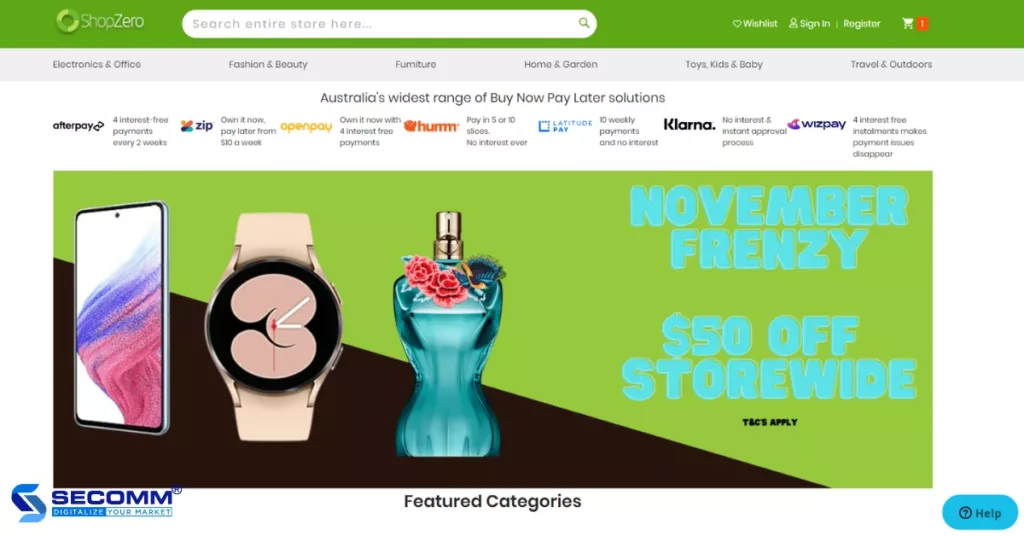
With extensive experience in implementing eCommerce solutions in various countries, especially in the Buy Now Pay Later market, SECOMM understands the challenges businesses face when exploring how to establish Buy Now Pay Later systems.
Contact SECOMM now or call us via hotline (+84)28 7108 9908 for a free consultation on detailed eCommerce system development solutions!
 2
2
 12,756
12,756
 0
0
 1
1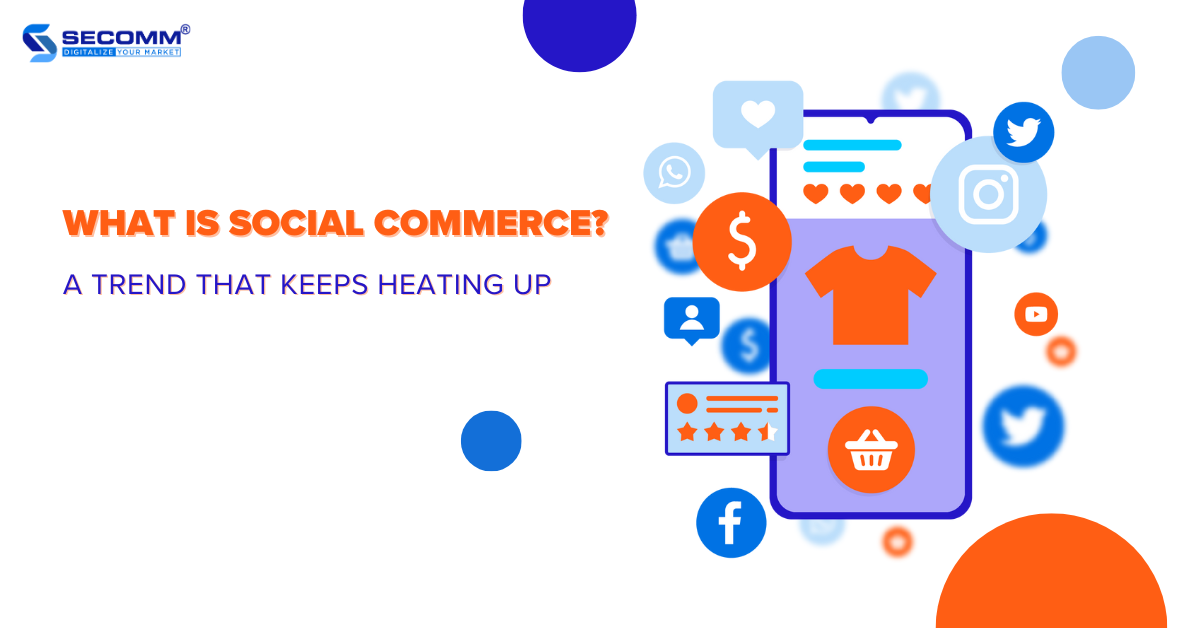
As per Statista’s data, Social Commerce worldwide generated 992 billion USD in revenue in 2022, with projections indicating a potential surge to 2.9 trillion USD by 2026. This positions Social Commerce as a highly valued and potential trend in the future of eCommerce.
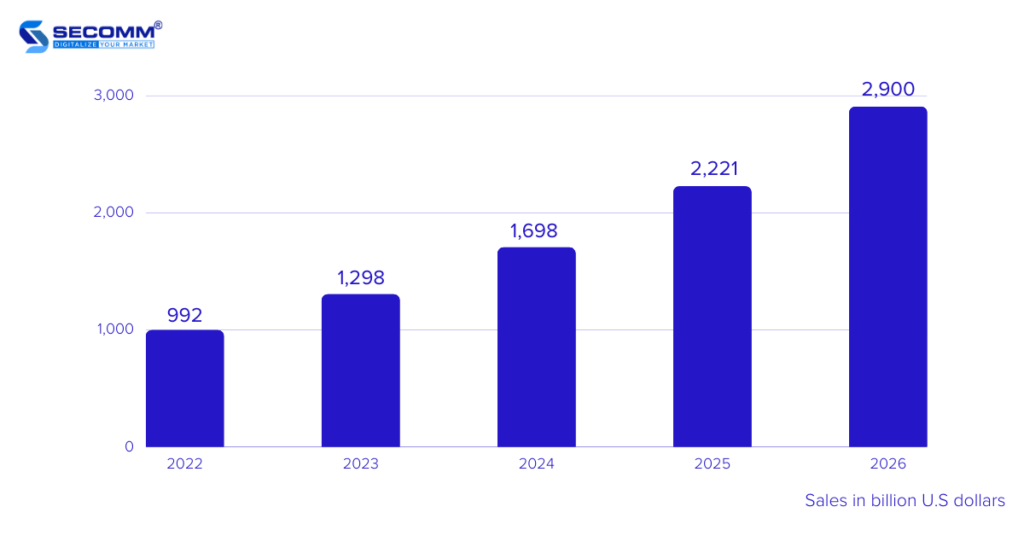
Social Commerce is a term that combines two key concepts: “Social” and “Commerce”.
It represents a business model that seamlessly integrates social media and eCommerce, aiming to create a shopping experience that is more interactive and connected for customers.
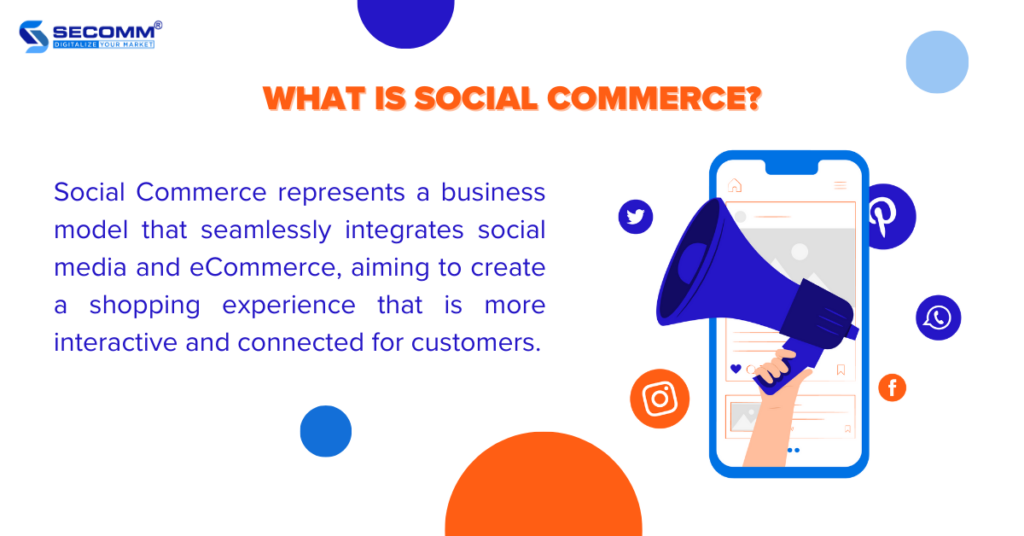
Social Commerce enables users to view and purchase products directly through social media platforms such as Facebook, Instagram, TikTok, etc.
This approach allows customers to delve into product details, read reviews, engage with comments from other users, and even make direct purchases through business posts, advertisements, or social platform storefronts.
The Social Commerce model often comes with interactive features, product-sharing capabilities, and personalized product recommendations.
Social Commerce takes advantage of the widespread popularity and extensive user base on social media platforms to naturally amplify the reach and influence of products and brands.
Social Commerce and eCommerce are two distinct online business models, yet they share the common goal of online commerce. Here are the differences between these two models:
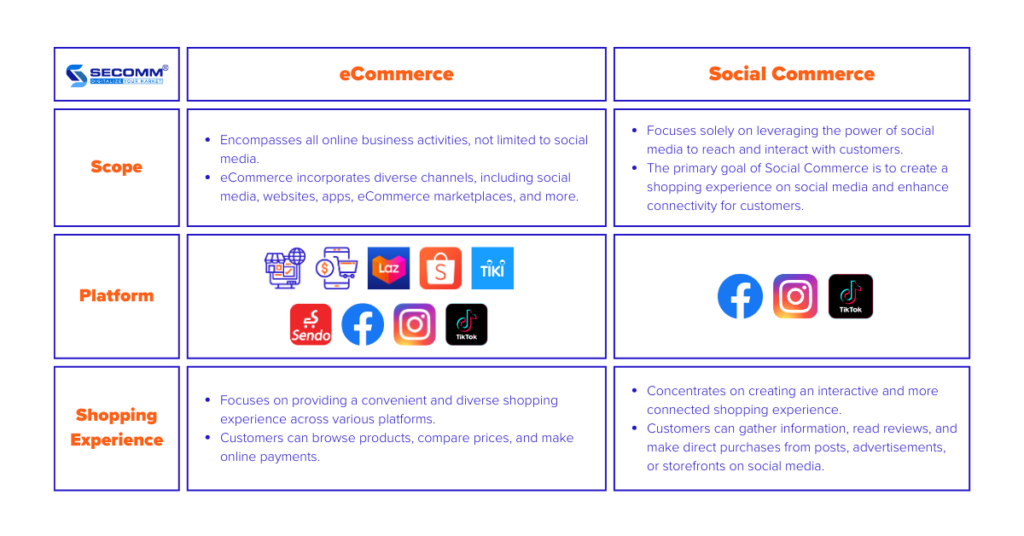
There are various popular types of social commerce, and the choice depends entirely on the scope and objectives of each business. Here are some common types of social commerce:
Social Commerce facilitates businesses in reaching millions of users across various social media platforms, particularly globally popular ones like TikTok, Facebook, Instagram, and Pinterest.
This approach not only boosts brand awareness but also promotes businesses’ products and services to the extensive user base on these platforms, creating organic traction through user sharing and interaction.
The renowned sportswear brand Nike has successfully implemented Social Commerce by leveraging engaging posts, videos, and advertisements on social media platforms such as Facebook, Instagram, and Twitter.
The brand consistently runs advertising campaigns encouraging users to share their product experiences. Through user-generated posts and the strategic use of specific hashtags, Nike has sparked natural virality, resulting in an increased level of brand recognition.

A key feature of social commerce is its focus on creating a seamless online shopping experience for users, simplifying the transition from product browsing to actual purchases. Customers can buy directly from posts, advertisements, or online stores on social media platforms.
This not only streamlines the shopping process but also enables businesses to optimize customer experiences, save time, and boost the eCommerce sales volume for the brands.
The cosmetics brand L’Oréal has created various TikTok channels for each target market in its beauty chain, such as lorealparis (global), lorealparisusa (U.S. market), lorealparis_vn (Vietnamese market), lorealparisid_shop (Indonesian market), lorealparisth_store (Thai market), and so on.
This approach not only allows the brand to reach the right target audience but also takes advantage of TikTok Shop, enabling customers to purchase products directly through L’Oréal’s TikTok channel.
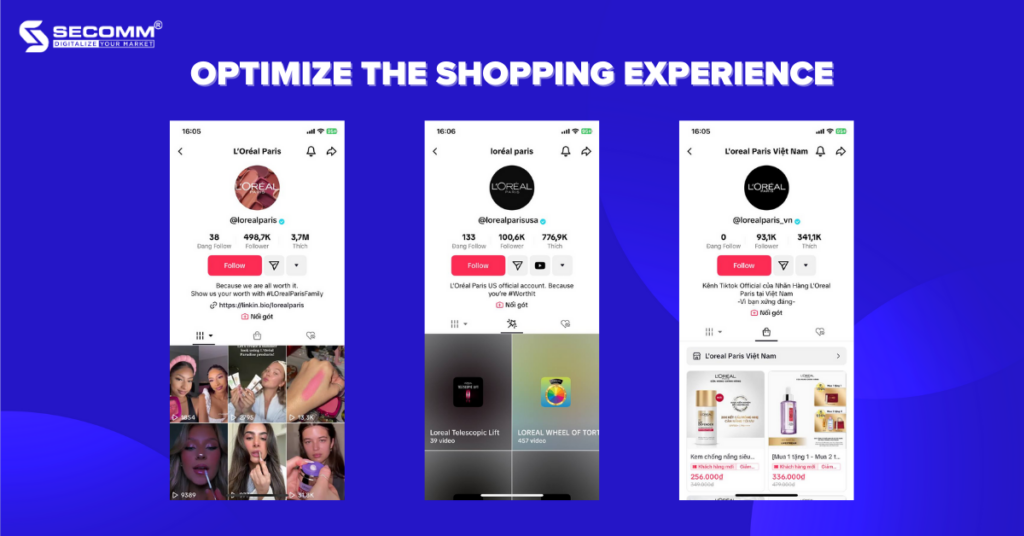
Presently, social media platforms offer comprehensive analytics and data measurement tools for businesses. For instance, Instagram Insights provides demographic information such as gender, age groups, and geographic locations.
Facebook Audience Insights goes a step further in collecting detailed data about a business’s target audience, while TikTok Pixel allows tracking vital metrics like clicks, views, and conversion rates, and assessing the effectiveness of advertising campaigns.
Leveraging these data sources assists businesses in creating more efficient social commerce campaigns compared to traditional retail operations. A noteworthy example of the successful implementation of Social Commerce with optimized tracking and measurement is Fashion Nova.
This prominent American fashion brand specializes in offering women’s clothing and accessories. Fashion Nova’s Instagram posts often incorporate sharing and user tracking features, enhancing the dissemination of information about products and the brand.
Furthermore, Fashion Nova utilizes Instagram’s measurement features and analytical tools to evaluate the effectiveness of the brand’s marketing and advertising campaigns.
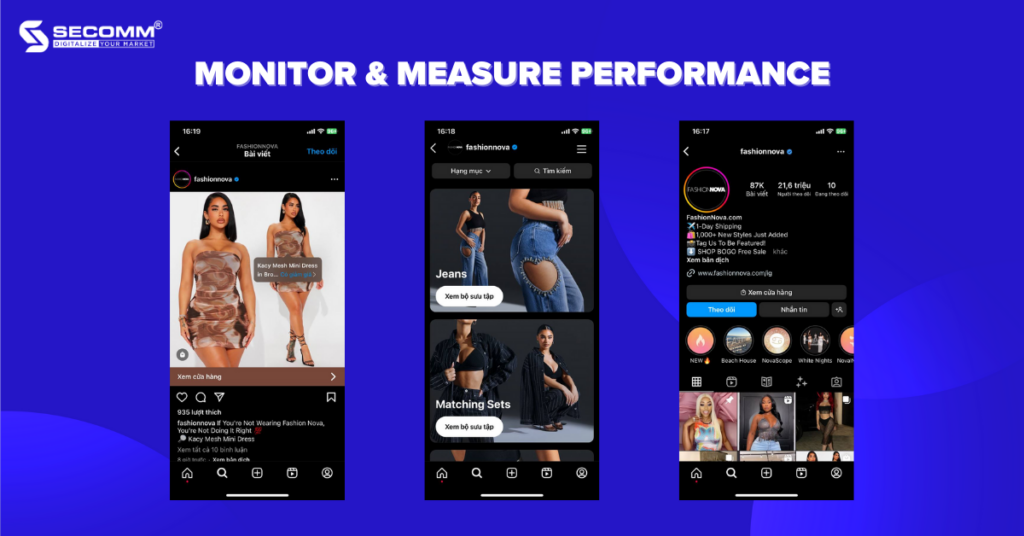
Embracing social commerce enables businesses to seamlessly engage in direct interactions with customers and gather their feedback regarding the brand or product through posts, direct conversations, comment responses, and messages.
This facilitates quick customer support, addresses inquiries promptly, fosters satisfaction and fortifies customer relationships. Moreover, based on this valuable customer feedback, businesses can refine their products/services to align with customer expectations.
Tarte Cosmetics, a renowned cosmetics brand specializing in makeup and skincare products, has effectively utilized social media platforms such as Instagram, Facebook, and Twitter to implement social commerce. The brand consistently engages with customers across social media channels.
The administrative team promptly responds to user comments and messages, addressing inquiries and offering technical support. This approach builds trust and satisfaction among customers, actively strengthening positive customer relationships.
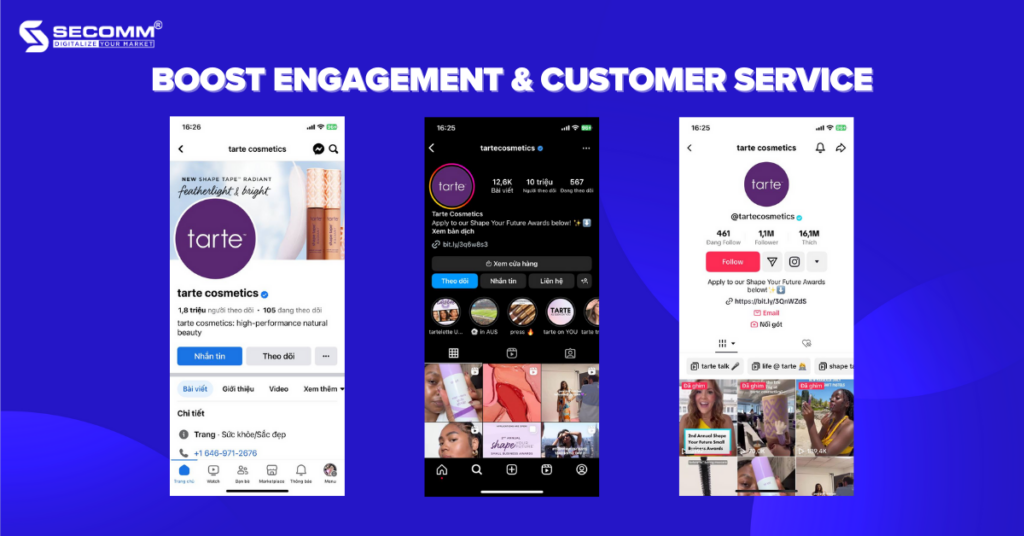
Here are insights, advantages, and examples of businesses effectively embracing Social Commerce. Depending on each business’s strategy, administrators can blend social media and eCommerce to engage customers and establish a brand in the current digital era.
Related Reading: eCommerce: Inbound Marketing vs Outbound Marketing
Contact SECOMM or directly call the hotline at 02871089908 today for complimentary guidance on implementing eCommerce Marketing overall and Social Commerce specifically.
 3
3
 8,503
8,503
 0
0
 1
1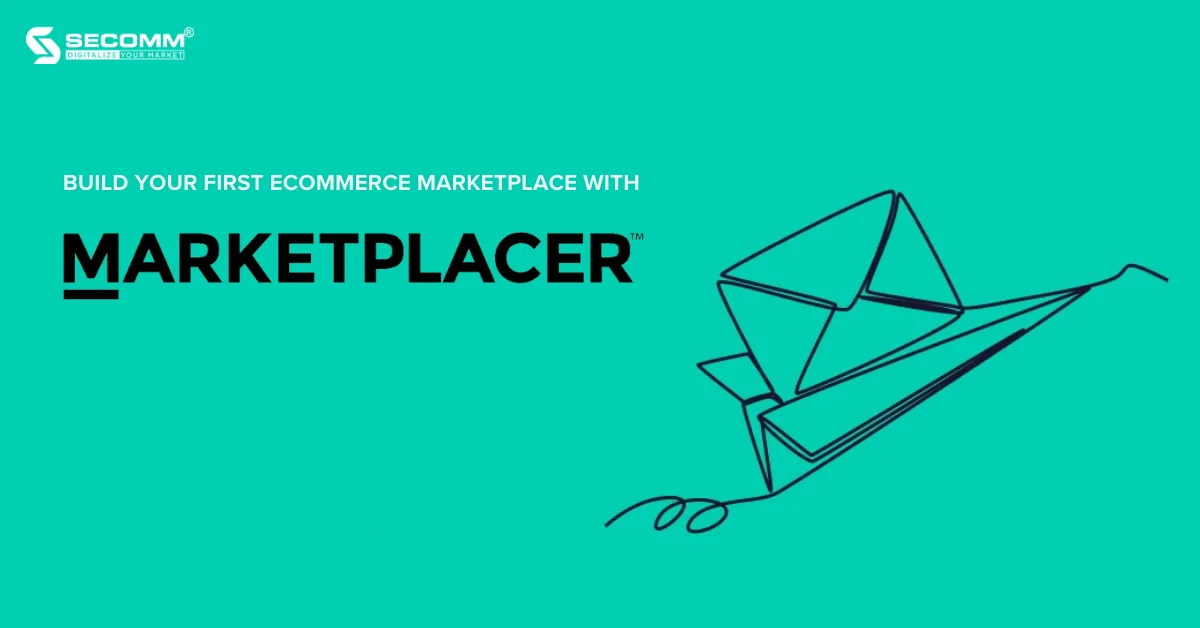
As reported by Digital Commerce 360, global consumers have collectively expended more than $3.25 trillion on famous eCommerce marketplaces such as Amazon, Ebay, and Alibaba. This indicates the increasing significance of online marketplaces in customer shopping experiences.
Therefore, many businesses have promptly devised strategies to enter the race for market share in eCommerce landscape. To achieve this goal, businesses must first develop their own marketplaces. The initial but crucial step in this process is selecting the ideal platform.
The following article focuses on introducing this platform as a recommendation for large businesses among countless optimal choices out there.
Marketplacer is a Software as a Service (SaaS) platform hosted on AWS, providing businesses with essential tools and features for building professional and highly adaptable eCommerce marketplaces capable of rapid scalability and swift page loading.
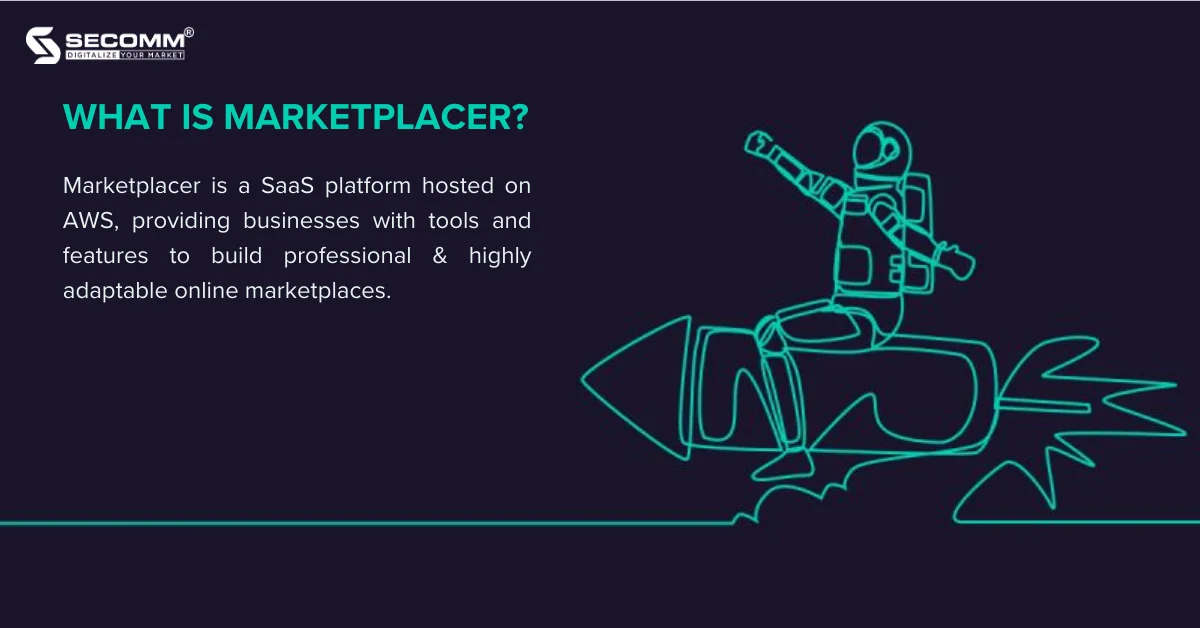
This platform streamlines the management and administration of eCommerce marketplaces. It simplifies tasks like order fulfillment, product category adjustments, third-party extension integration, cross-marketplace operational synchronization, and the implementation of strategies for revenue optimization.
To date, this platform has successfully established and expanded over 100 eCommerce marketplaces, forging connections with more than 13,000 sellers spanning the globe.
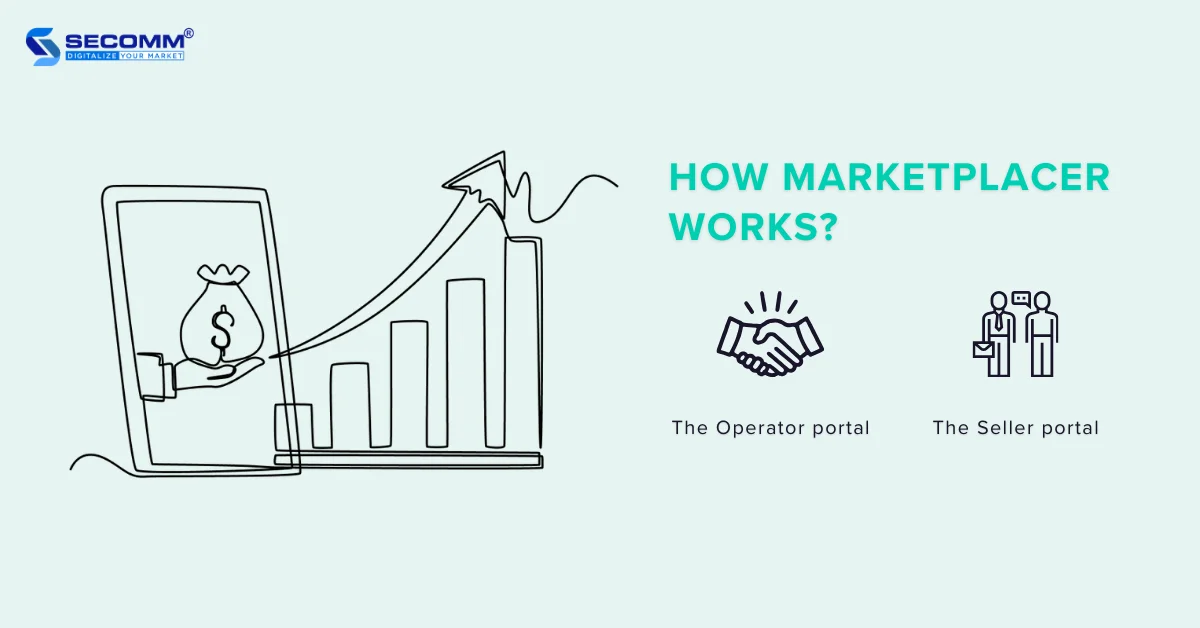
This platform offers businesses a Marketplace-wide API based on GraphQL API, allowing them to:
Furthermore, Marketplacer provides businesses with access to Webhooks, enabling them to receive notifications from the Marketplacer platform for any changes or updates during their operations.
This platform provides sellers on the marketplace with Seller API based on V2 (REST) API to
Similar to how businesses operate their business on the marketplace, sellers also have access to webhooks for receiving notifications regarding changes throughout their selling journey.
This platform offers two implementation models, allowing businesses to tailor the development of their online marketplace to align with their specific goals.
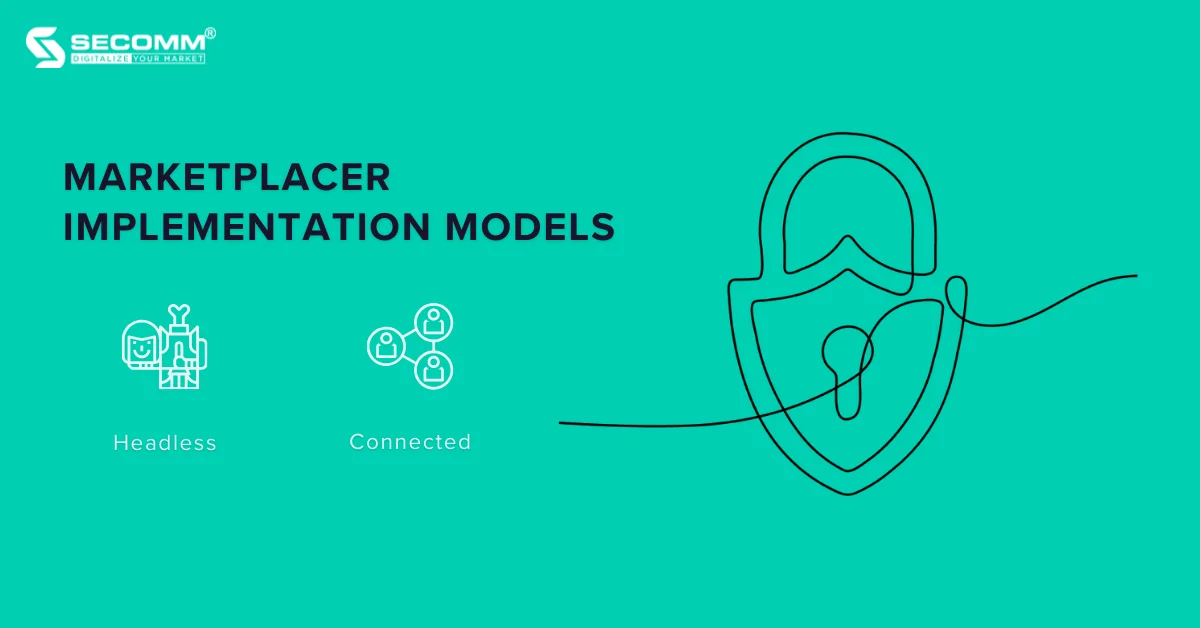
The Headless model empowers businesses to utilize their tailor-made frontend, commonly known as the “head,” which represents the user interface. This frontend is integrated with Marketplacer’s fundamental backend through APIs to execute the marketplace.
Therefore, opting for the Headless model is ideal for businesses seeking extensive control over the user experience while leveraging Marketplacer’s core technology to foster eCommerce growth.
In the Connected model, businesses can efficiently integrate a pre-built eCommerce system into Marketplacer’s backend, avoiding the need for an extensive time and financial resources to build from scratch. This integration allows businesses to maintain the full functionality of the pre-existing system while benefiting from this platform’s advanced infrastructure for seamless marketplace deployment.
It’s worth noting that Marketplacer currently offers pre-built connectors exclusively for three prominent platforms: Adobe Commerce, Salesforce Commerce Cloud, and commercetools. As a result, the Connected model is best suited for businesses utilizing one of these three platforms to facilitate their eCommerce.
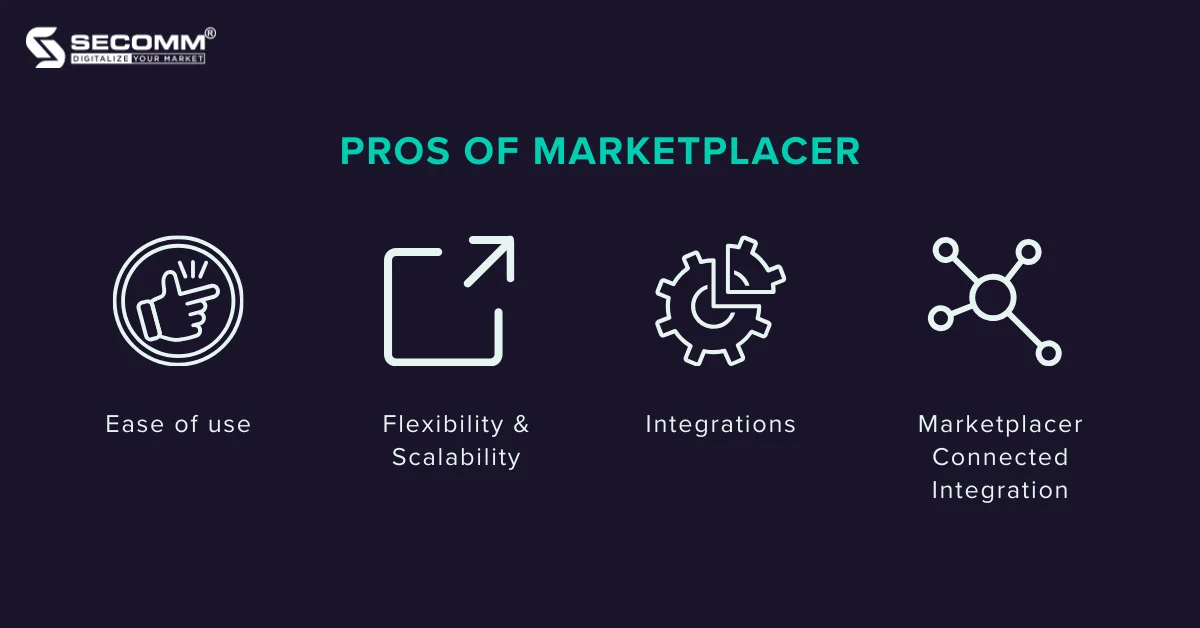
This platform offers a user-friendly interface and intuitive tools, making it simple for businesses to build and manage their online marketplace.
This platform is tailored to suit online marketplaces of diverse sizes. The platform boasts excellent scalability and remarkable flexibility, empowering businesses to manage an ever-increasing volume of sellers, customers, and listing products. This facilitates seamless expansion of operations as needed.
Businesses can easily discover well-known applications and extensions within Marketplacer’s growing collection of available integrations. Some noteworthy integrations include popular social media platforms like Facebook, Twitter, and LinkedIn, as well as payment gateways such as PayPal, Zooz, Yotpo, and advertising management tools like Fuze, Firstpage, and Citrus Ad.
Marketplacer’s success is attributed to its ‘Connected’ technology, enabling businesses to deploy their marketplaces with two versatile options: crafting a tailored frontend or integrating seamlessly with existing systems.
Also, businesses can effortlessly blend third-party products into their current inventory, broadening their product range and portfolio with minimal investment and mitigating product lifecycle management tasks. This model is known as the Hybrid Marketplace and has been successfully adopted by enterprises like Amazon, Walmart, and others.
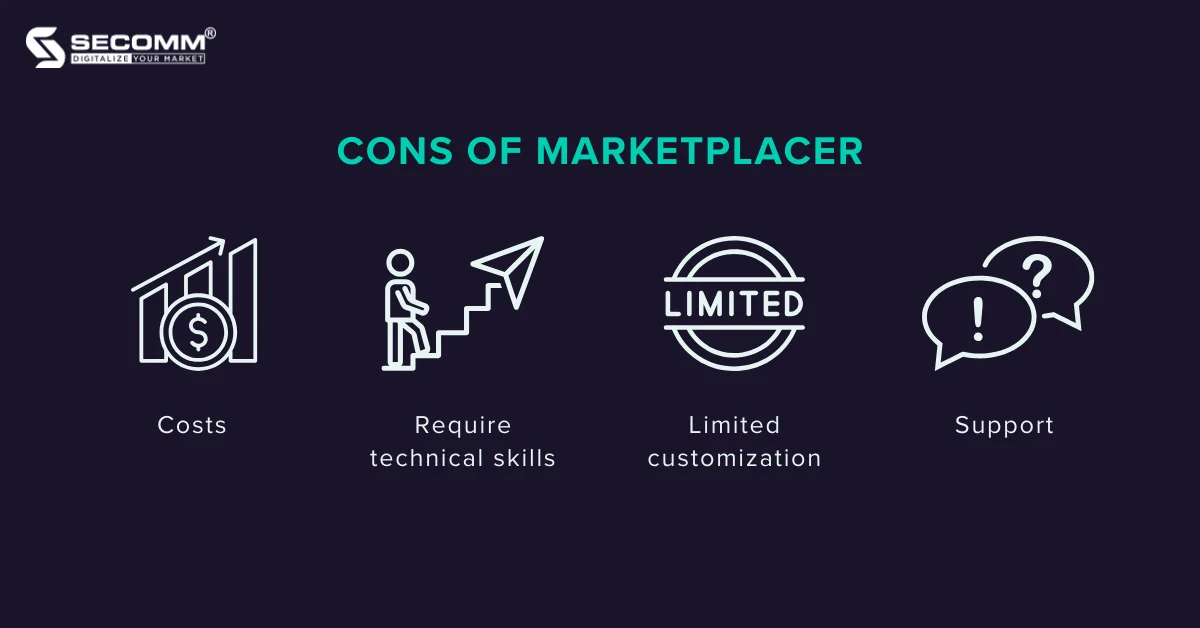
The license fee isn’t publicly available and businesses are required to reach out to the Marketplacer team for a personalized consultation and cost estimates. Furthermore, the platform doesn’t offer a trial version, which may pose challenges for businesses when planning their implementation budget.
While this platform offers a user-friendly interface, it may pose challenges for users who are not familiar with building and operating an eCommerce marketplace. Therefore, the implementation process will require businesses to have technical expertise, or they can seek specialized assistance to efficiently build and optimize the platform.
Despite its flexibility and high degree of customization, Marketplacer’s ability to meet the highly complex deployment needs of large-scale eCommerce systems may pose challenges.
This platform provides 24/7 support services and offers learning resources, but there is room for improvement in the quality and responsiveness of their support. Plus, as an Australian-based company primarily serving the Australian market, some of their terminology might be less clear to international customers.
To successfully build and operate a thriving eCommerce marketplace, the first thing businesses need to do is choose a platform. This platform is one of the standout platforms that businesses should consider.
Feel free to contact or call SECOMM’s hotline at (028) 7108 9908 for free consultations.
 2
2
 14,700
14,700
 0
0
 1
1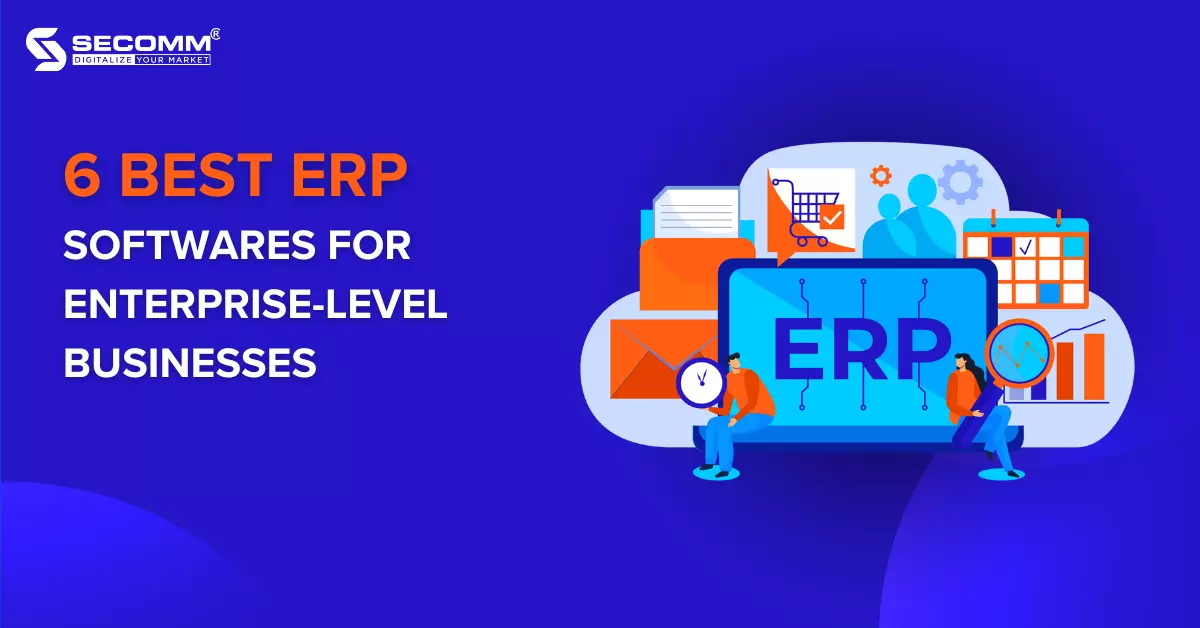
Data holds significant value for eCommerce enterprises across all sizes, yet effectively managing and monitoring it is no simple task. Hence, the advent of ERP software emerges as a superior solution, enabling the amalgamation of all business data into a singular database for seamless accessibility, analysis, and oversight.
Nevertheless, to fully unlock the capabilities of ERP, businesses must opt for software equipped with features aligned with their specific business requirements. Recently, six prominent ERP software solutions are widely adopted by many eCommerce enterprises: Oracle Netsuite, Acumatica, Odoo, Sage x3, SAP S/4 HANA, and Microsoft Dynamics 365.
ERP stands for Enterprise Resource Planning, is a software solution designed to assist businesses in gathering, storing, analyzing, and overseeing all data pertaining to their business operations from diverse internal departments, all within a single database. This data encompasses:
Integrating ERP software into eCommerce operations empowers businesses to centrally manage data originating from multi-channel sales and marketing endeavors, encompassing sources like websites, social media, mobile devices, and brick-and-mortar stores.
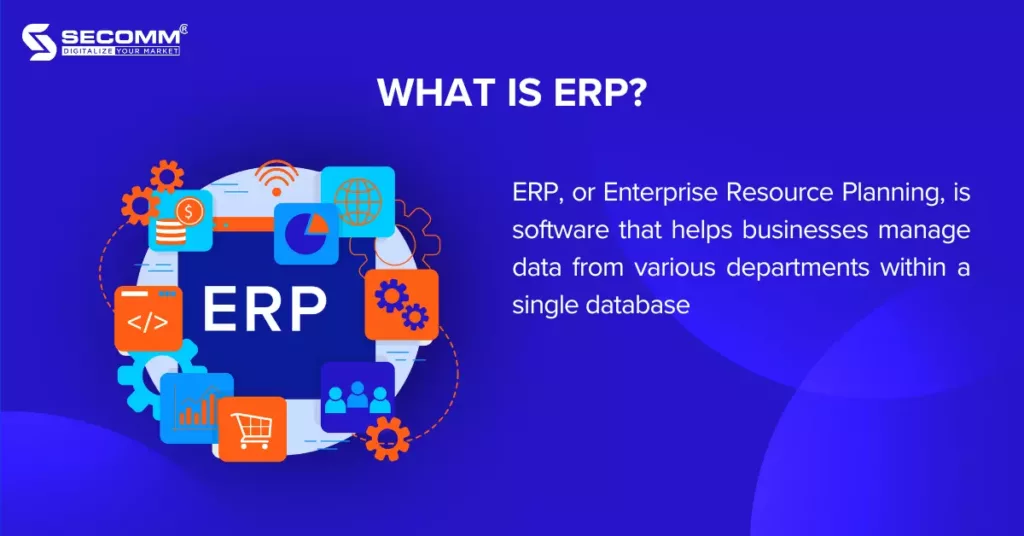
On-premise ERP software, also referred to as ERP in-house, is installed and stored directly on the business’s servers and internal infrastructure. When utilizing on-premise ERP, the business assumes responsibility for managing hardware, IT infrastructure, software updates, and maintenance.
Cloud-based ERP software is supplied, stored, and managed by a third-party provider. This allows users to access it remotely from any device with an internet connection and is also known as Software as a Service (SaaS). In this scenario, the provider takes charge of infrastructure management, encompassing servers, storage, data backups, updates, and software maintenance.
Hybrid ERP software is a combination of both on-premise and cloud-based ERP solutions. In the hybrid ERP model, specific modules of the ERP system are stored on-premise, while others are stored in the cloud. This approach enables businesses to leverage advantages from both software models. For instance, critical data or modules can be kept on-premise for control and heightened security, whereas less critical data or modules can be hosted in the cloud for effortless accessibility and future expansion.
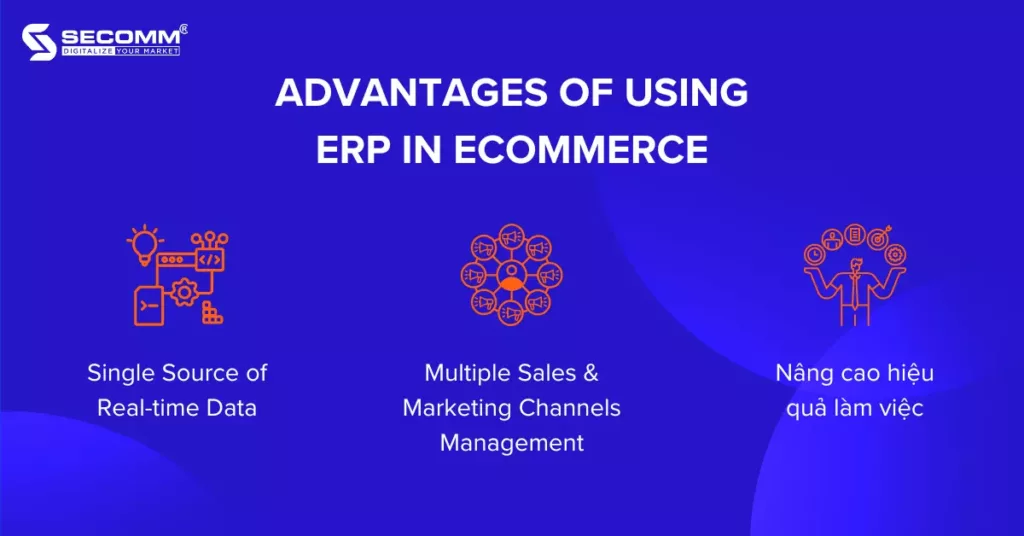
One notable advantage of ERP software is its real-time integration capability, which consolidates diverse departmental data into a unified database. This consistency streamlines data management, especially considering the substantial volume of data that eCommerce businesses accumulate daily, much of which pertains to purchasing behavior.
As a result, when integrating this data with other business information, enterprises can uncover and implement distinctive approaches to:
For instance, ERP software provides businesses with reports encompassing details about best-selling products, canceled orders, recurring customer lists, cart abandonment rates, interactions with social media posts, and more. In turn, businesses can amalgamate all this data within a shared database to gain a holistic perspective of the current landscape and swiftly make pertinent adjustments for eCommerce expansion.
eCommerce enterprises employing a variety of channels in their sales and marketing strategy will likely need to evaluate sales performance and engagement levels across each channel to gauge their efficacy. ERP software assists businesses in concurrently managing sales channels within a centralized database.
Through analyzing integrated ERP data from various channels, encompassing social media, websites, mobile apps, eCommerce platforms, and more, enterprises can understand why one sales channel surpasses others and determine which marketing campaigns yield favorable conversions and which ones require enhancement.
Insufficiently integrated business data can lead to difficulties in accessing accurate and updated information. This may compel businesses to manually input extensive data, potentially resulting in errors.
Conversely, the use of ERP can facilitate nearly impeccable automated data entry. Moreover, this software supports other automated processes, like invoice generation and marketing campaign automation, among others. This frees businesses from monotonous manual tasks, enabling them to concentrate on pivotal tasks that enhance revenue.
Oracle NetSuite serves as a cloud-based ERP solution, delivering a comprehensive set of tools for effectively managing business operations. This software empowers eCommerce enterprises to automate functions across multiple domains, including sales management, marketing, customer relations, financial control, inventory management, and more.
What sets Oracle NetSuite apart is its adaptability and scalability, catering to businesses of various scales and industries. It streamlines eCommerce workflows while enhancing operational efficiency, all facilitated by real-time insights available through a unified dashboard.
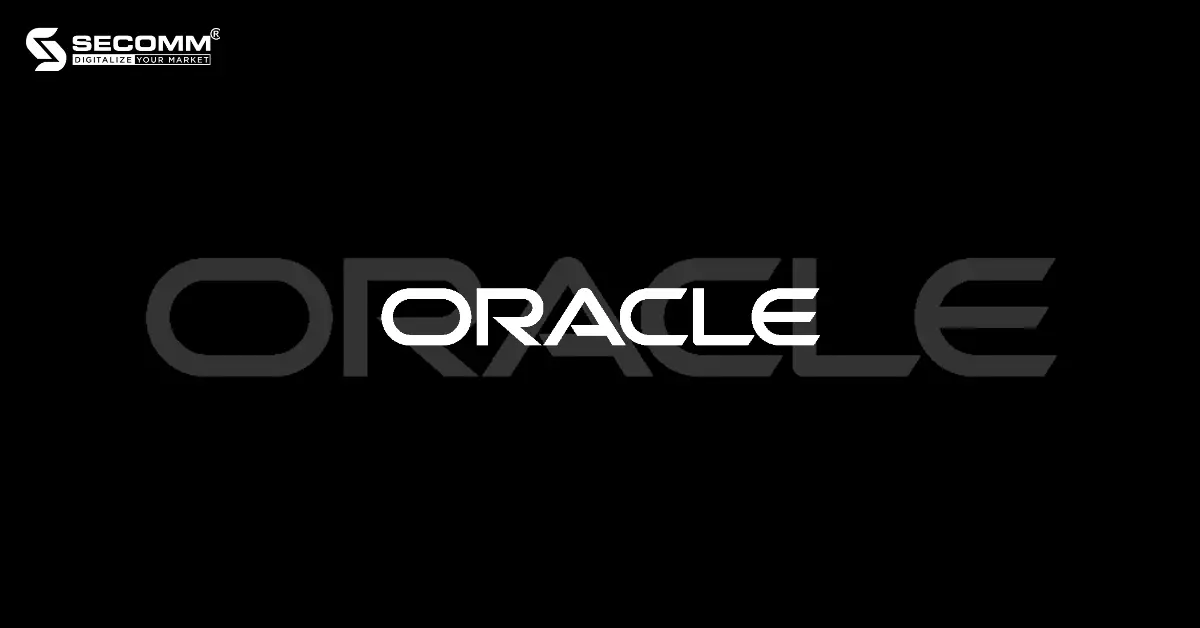
Key features of Oracle NetSuite encompass:
Pros:
Cons:
Cost: Estimated deployment costs for Oracle NetSuite can commence at $10,000. Nevertheless, this is not a fixed price and will be tailored according to each business’s specific deployment requirements.
Acumatica stands as a cloud-based ERP software designed to cater to businesses of all sizes, particularly those in rapid development. It offers adaptable cloud storage alternatives, including both public and private clouds, ensuring convenient access and secure handling of business data.

Prominent features of Acumatica including
Pros:
Cons:
Cost: Estimated costs for deploying Acumatica can range from $15,000 to $40,000 per year. However, this is not a fixed price and will be customized based on the specific deployment needs of each business.
Odoo is an open-source ERP software in a modular form that can be customized to support businesses in efficiently managing various aspects of their operations, such as customer relationship management (CRM), accounting, inventory management, and more. Odoo provides an optimal solution for businesses of all sizes and industries.
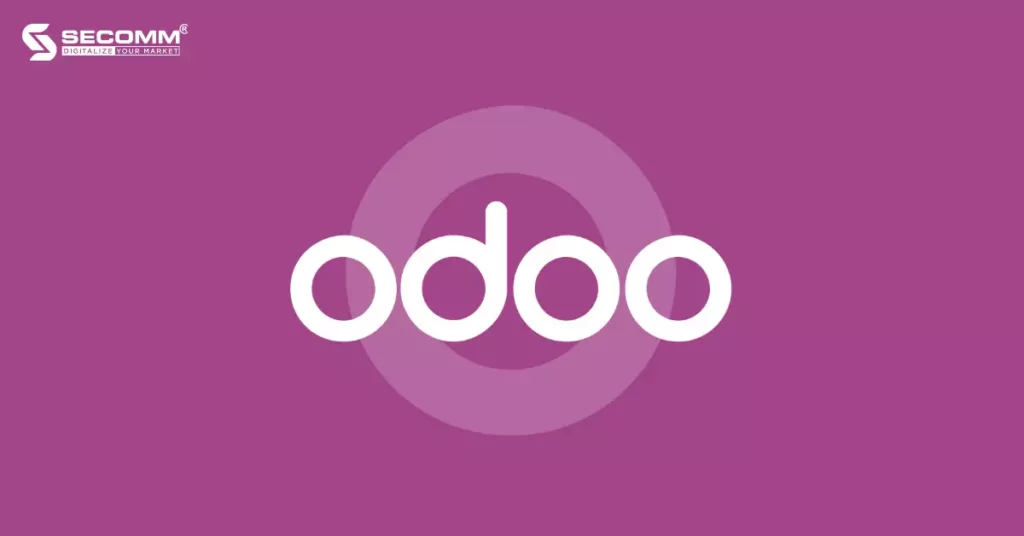
Key Features of Odoo:
Odoo offers a comprehensive set of features and modules ranging from basic to advanced, catering to all business operational needs in eCommerce. It stands out with the following features:
Pros:
Cons:
Cost: Businesses receive free usage if they utilize only a single module and there’s no restriction on the number of users. However, if a business uses two or more modules, the pricing structure is determined based on:
Sage X3 is a hybrid ERP software solution designed to meet the needs of medium-sized and large enterprises in managing and operating business activities across multiple locations or countries.
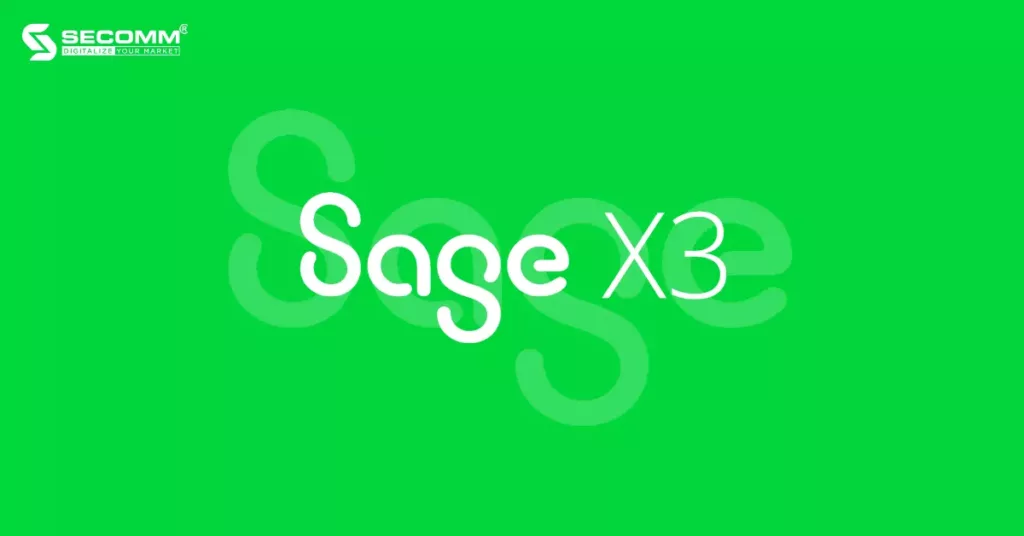
Key features of Sage X3:
Sage X3 offers a range of features from basic to advanced to support business management and operations processes, with a focus on product management, supply chain management, and financial management.
Pros:
Cons:
Cost: Estimated implementation costs for Sage ERP can commence at $128,000. However, this figure is not fixed and will be adjusted based on the unique deployment requirements of each business.
SAP S/4 HANA (High-Performance Analytic Appliance) is a leading hybrid ERP software designed for large-scale enterprises. SAP S/4 HANA is considered the next-generation comprehensive ERP solution by SAP, incorporating artificial intelligence technology. It is designed to optimize business processes, cater to specific industry requirements, and support decision-making processes. The software offers solutions in financial management, supply chain management, sales management, customer relationship management, and more.
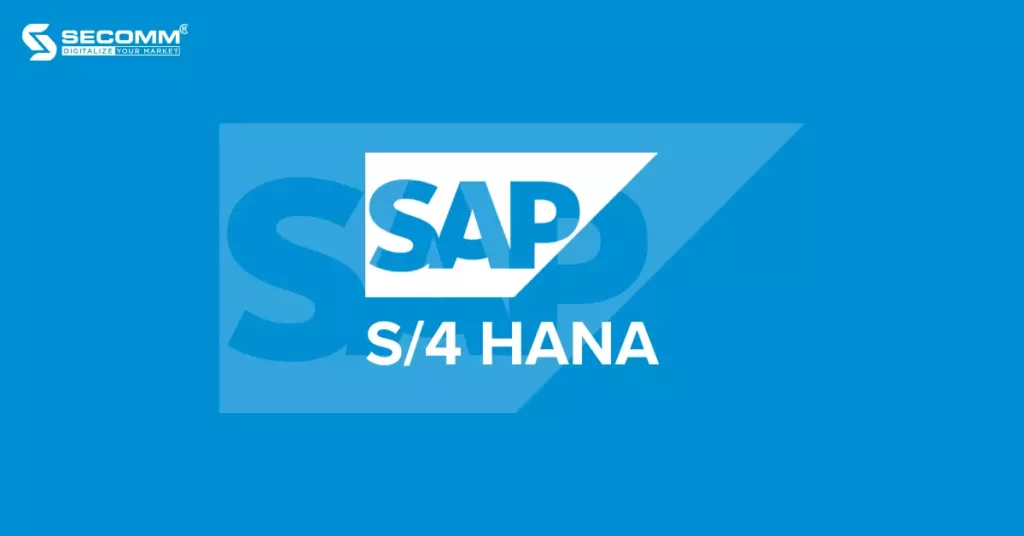
Key Features of SAP S/4 HANA:
Pros:
Cons:
Cost: The pricing details for SAP S/4 HANA are not publicly disclosed, though businesses can access a 30-day free trial with certain feature limitations.
Microsoft Dynamics 365 software stands out as a superior hybrid ERP solution tailored for large enterprises. Depending on individual business needs, the ERP system can seamlessly integrate with diverse Microsoft applications to optimize various aspects of business operations, including sales, inventory, and financial management. Microsoft Dynamics 365 is well-equipped to provide effective support for numerous industries such as manufacturing, financial services, healthcare, eCommerce, and more.
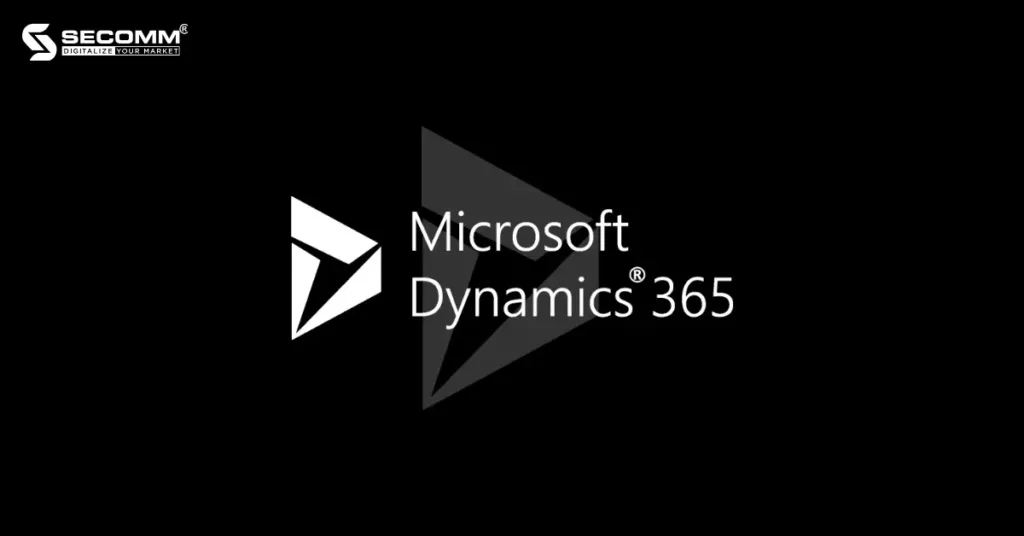
Key Features:
Pros:
Cons:
Cost:
Businesses can avail of a free 30-day trial of Microsoft Dynamics 365. Depending on the module, the software offers two pricing categories:
Subsequent pricing is applicable solely to individuals licensed to utilize the first app.
As an example, in the Financial Management module:
For detailed pricing information on other modules, businesses can refer to Microsoft Dynamics 365’s pricing page.
The aforementioned is a summary of 6 eCommerce ERP software options tailored for large-scale businesses, showcasing their unique features and respective strengths and weaknesses.
To gain a more comprehensive insight into ERPs and to select the ERP software that best suits your business requirements, contact SECOMM or call the SECOMM Hotline (02871089908) for a free consultation.
 2
2
 10,693
10,693
 0
0
 1
1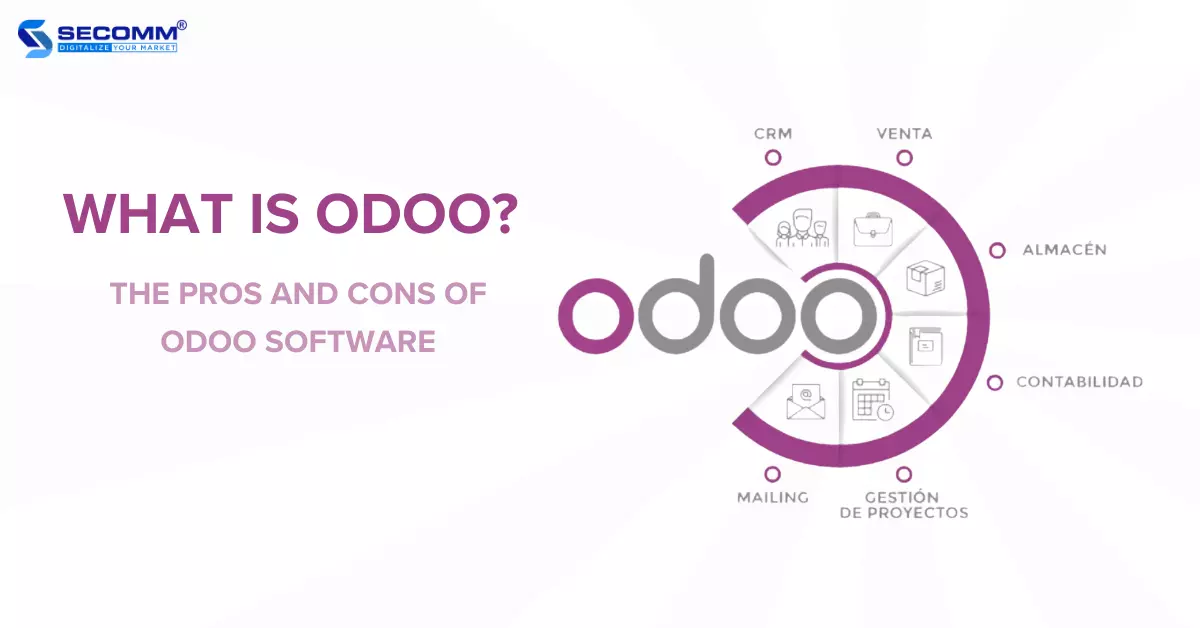
In today’s landscape, ERP software plays a pivotal role in the efficient management and operation of eCommerce activities. Among them, Odoo ERP stands out as pre-configured management software, tailor-made for businesses for easy downloading and utilization, providing a range of solutions to support various business facets like sales, marketing, inventory, customer service, and more. The subsequent article aims to elucidate the concept of Odoo ERP and delve into its strengths and weaknesses when integrated within enterprises.
Odoo, also known as Odoo ERP and previously called OpenERP, is a versatile open-source business management software. It comes with complete integration and customization capabilities, catering to offer a comprehensive solution for overseeing diverse facets of eCommerce operations.
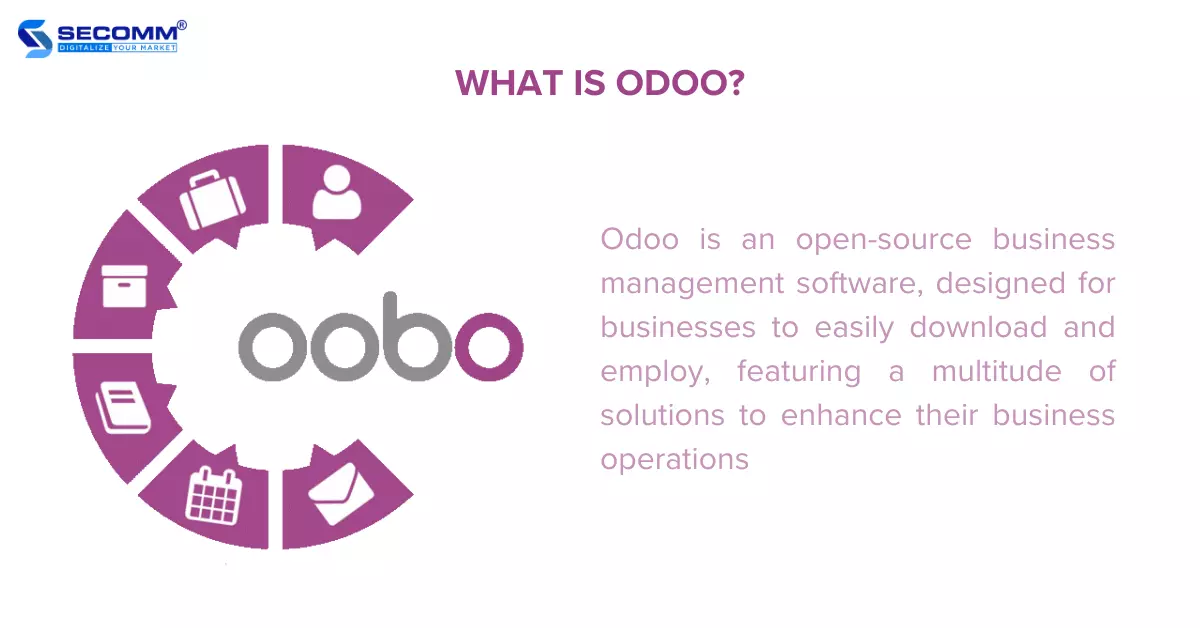
Among its noteworthy functionalities are sales and marketing management, customer relations, project oversight, manufacturing, inventory control, accounting, human resource administration, customer service handling, and a plethora of other applications. As a result, Odoo is adept at fulfilling the real-world business requirements of enterprises spanning all sizes and budget ranges, across many industries.
There are various editions of the Odoo software, with the most recent being Odoo 16; additionally, Odoo 17 is anticipated for release towards the end of 2023. With respect to version 16, the development team has incorporated numerous features and tools to bolster business efficiency, concurrently concentrating on refining a host of existing attributes. Odoo 16 stands as a source of pride, being the swiftest, most visually appealing, and intuitively designed version.
The Odoo management software is available in two primary editions that every business should thoroughly explore before implementation.
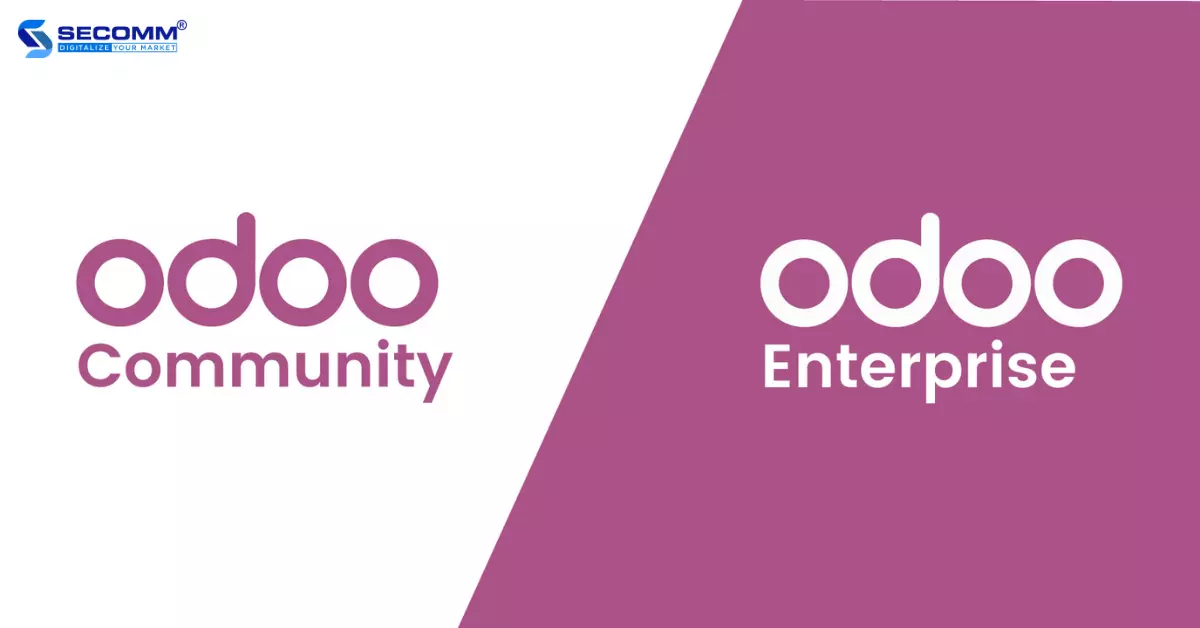
This version of Odoo is free for users to download and use. The Odoo Community edition offers a wide range of features and modules that support essential business operations such as sales management, marketing, customer relationship management, inventory management, accounting, and more.
The Odoo Enterprise edition is a premium, paid version with multiple editions tailored to businesses of all sizes. The Enterprise edition is designed to provide advanced features and modules that enhance operational workflows. The cost of the Odoo Enterprise edition is determined by five factors: the number of users, the number of utilized apps, hosting type, deployment services, and integration with third-party systems.
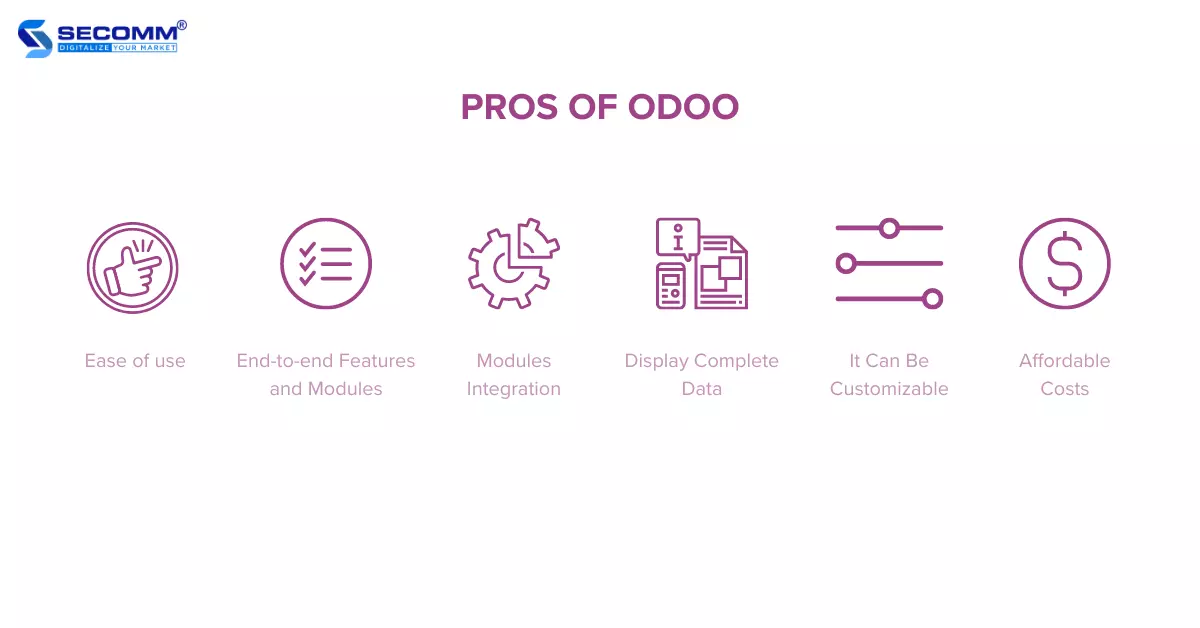
The Odoo interface boasts a simple and intuitive design, with modules logically and systematically organized. As a result, new users will quickly become proficient without investing an excessive amount of time.
Odoo offers an expansive array of features and modules, spanning from fundamental to advanced, to address all requirements for effective business management and operations. These encompass tasks such as sales management, marketing, customer support, accounting, inventory control, and manufacturing.
As businesses embark on Odoo implementation, they can initially utilize the complimentary Community edition and subsequently migrate to the paid Enterprise edition, unlocking the full spectrum of capabilities, modules, services, and progressive enhancements.
Previously, businesses used to store information and data within individual department databases, leading to challenges in accessing and sharing information across departments. With Odoo, apart from providing the necessary modules for management and operations, it also aids businesses by integrating and storing data from all departments in a unified database, facilitating quicker and more convenient management and tracking.
Besides storage and integration, Odoo also holds the advantage of presenting comprehensive information. For instance, the ability to showcase detailed and complete data assists businesses in effectively managing product inventory levels on a daily or monthly basis, encompassing future shipments that have not yet been recorded.
Moreover, businesses can better control working capital by gaining insight into their inventory status. Furthermore, the availability of all information in a unified database fosters collaboration and streamlines the accomplishment of complex tasks. This results in improved workflow processes, enabling businesses to effortlessly monitor interdepartmental processes with efficiency.
Another benefit of Odoo software pertains to its customization potential. Odoo allows users to tailor the software to their requirements without the necessity of writing code. Thanks to its intuitive and user-friendly interface, individuals without extensive programming skills can also make adjustments.
Comparatively, the cost of utilizing Odoo is quite reasonable in comparison to other ERPs. For businesses with a single function requirement, there is no charge for using Odoo, allowing for long-term usage. However, when utilizing two or more functions, businesses receive a 15-day trial period, followed by a moderately priced subscription.
Costs escalate further if the customization and programming of additional modules are aligned with the business’s direction are required. If a business possesses an internal team to perform these tasks, the development costs can be avoided. In practice, businesses will need to seek support from specialized Odoo experts.
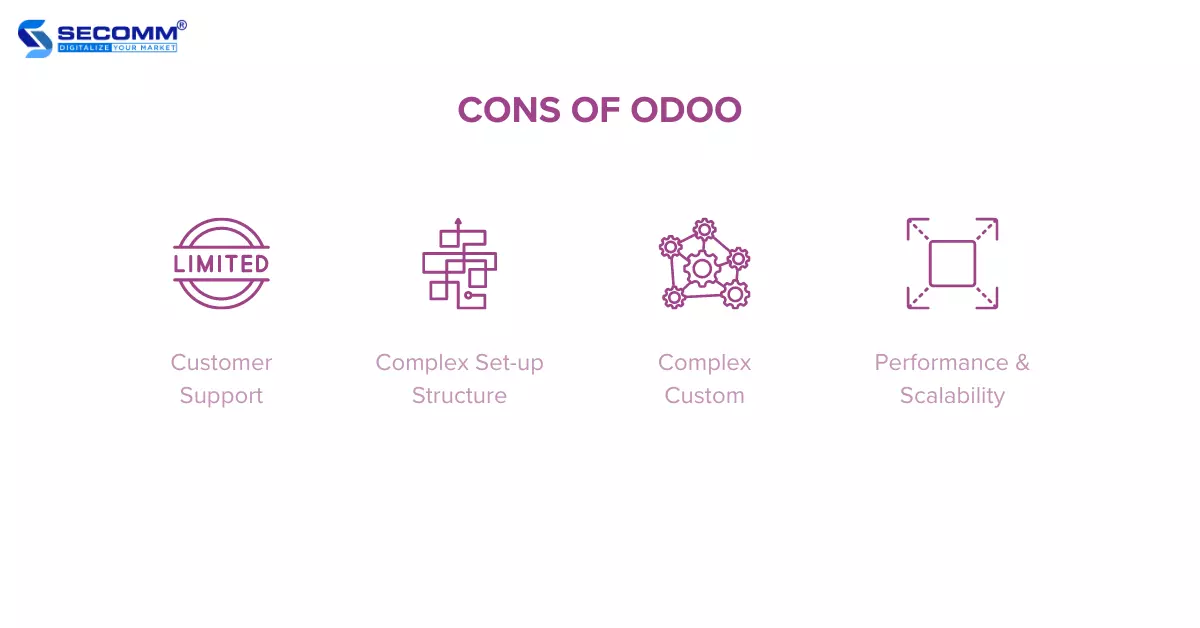
Because of constrained resources and a vast user base, Odoo is unable to offer top-notch customer support to every client. Certain customers have found themselves dissatisfied as their concerns weren’t entirely resolved during their initial support interactions. Furthermore, the cost of Odoo training is quite substantial, rendering it unfeasible for small businesses to establish a specialized Odoo support team.
Much like other present-day ERP software, Odoo’s structure can pose difficulties during the initial setup for businesses adopting it for the first time. This can result in a time-consuming and effort-intensive process of addressing setup-related issues
While Odoo provides numerous built-in functionalities, being a universal ERP solution for diverse business models worldwide means that adapting Odoo to a particular business type or a specific country requires customization.
Odoo does offer customization options, but for highly specific or complex customization requirements, it might necessitate developers with extensive technical expertise and experience. This could potentially lead to extra costs for customization and overall maintenance.
Although Odoo can meet the deployment requirements for a variety of business scales, its performance, and scalability may raise considerations for larger enterprises with substantial transaction volumes. Hence, businesses should strategize their development and assess scalability aspects prior to choosing, ensuring effective operations.
With many years of eCommerce deployment and integration of various ERP systems for numerous global enterprises, SECOMM comprehends the challenges businesses face when implementing the Odoo ERP system.
Contact SECOMM or call the Hotline (02871089908) now to receive consultation on Odoo implementation.
 2
2
 14,956
14,956
 0
0
 1
1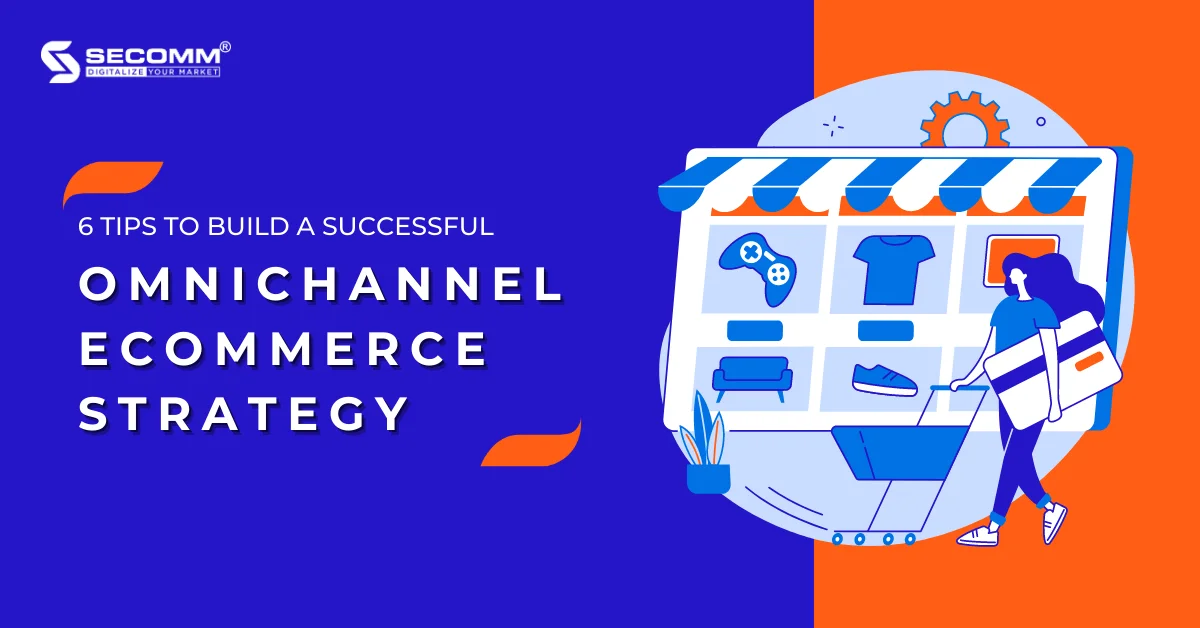
In 2021, The Vietnamese eCommerce market size reached 13.7 billion USD, which means the industry is growing rapidly and playing an important role in Vietnam’s economy.
It forces business owners to find ways to make their businesses stand out and connect with customers.
One of the effective approaches is to implement an Omnichannel eCommerce strategy. This is a marketing method aimed at providing a consistent customer experience across multiple channels. It may be confused with Multichannel eCommerce, where brands sell on various channels but provide different customer experiences on each channel. Although customers can shop on social media, eCommerce websites, physical stores, etc, their experience across these channels could not be seamless. There is also the Single-channel eCommerce model, where a brand only uses one channel for sales.
Retailers globally recognize the potential and impact of Omnichannel eCommerce on their business operations. According to Report Linker, the market for multi-channel retail platforms reached 5 billion USD in 2020 and is projected to reach 14.5 billion USD in 2027. Industry analysts and experts also emphasize that Omnichannel is the future of eCommerce and is a great way to attract customers and provide them with true value.
Here are 6 tips to help you, as a business successfully build an Omnichannel eCommerce strategy.
Tip number 1, regardless of any business strategy, you have to know who your target customers are and their shopping behavior. You can start by gathering relevant data about demographic information, purchase history, etc from various sources, including eCommerce websites, social media platforms, physical stores, etc. Then, you will analyze how they interact with the brand across different channels and create detailed buyer personas.
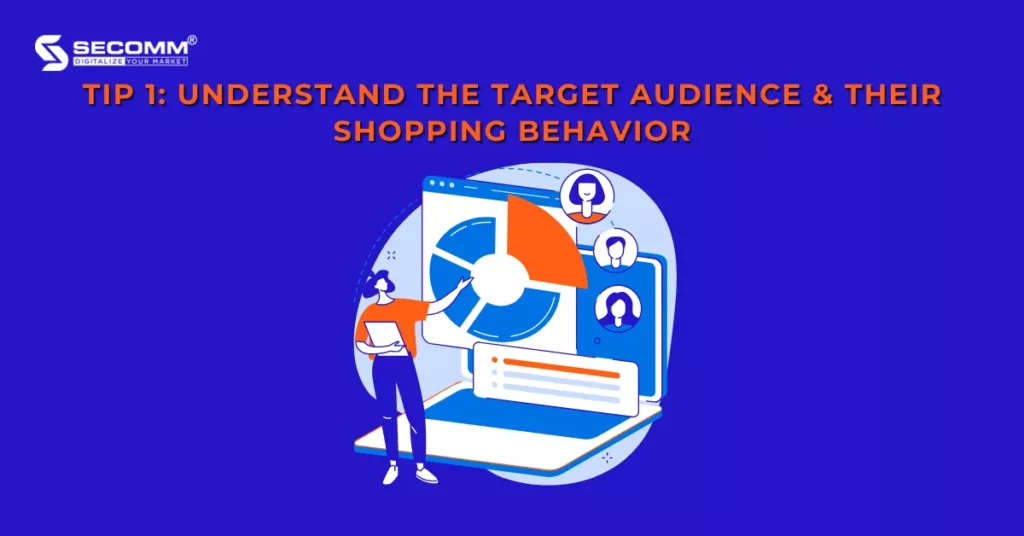
This helps identify effective approaches for each customer segment and tailor messages for each channel. For example, if a significant portion of your customers prefers shopping on mobile devices, you can optimize your suitable marketing campaigns alongside improving the website to attract more customers. Or, you can invest in developing mobile applications to enrich the customer shopping experience and drive conversions.
Tip number 2 is to map out the customer journey to visually understand the process that a potential customer goes through when interacting with your brand. It helps you clearly understand their needs, buying motivations, and so forth. When developing an Omnichannel eCommerce strategy, mapping the customer journey allows you to proactively provide personalized customer experiences across channels. It not only enhances cross-selling, and upselling but also improves customer intention and loyalty.
There are typically 5 stages in the customer journey: Awareness, Interest, Purchase, Retention, and Advocacy.
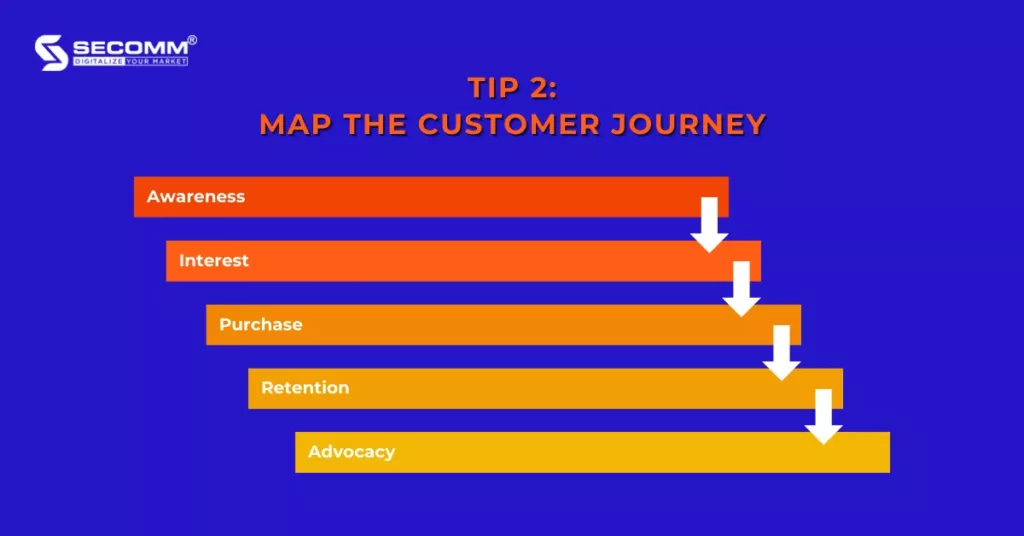
Here are the basic steps to create a customer journey map:
Another valuable tip is to develop a consistent brand message and image across channels. It requires you first to identify and understand the brand values, vision, and mission. For example, you can use consistent elements such as colors, fonts, etc, to help customers easily recognize your brand. Moreover, you need to train your staff on the brand message and image to ensure they understand and communicate the message properly across all channels.
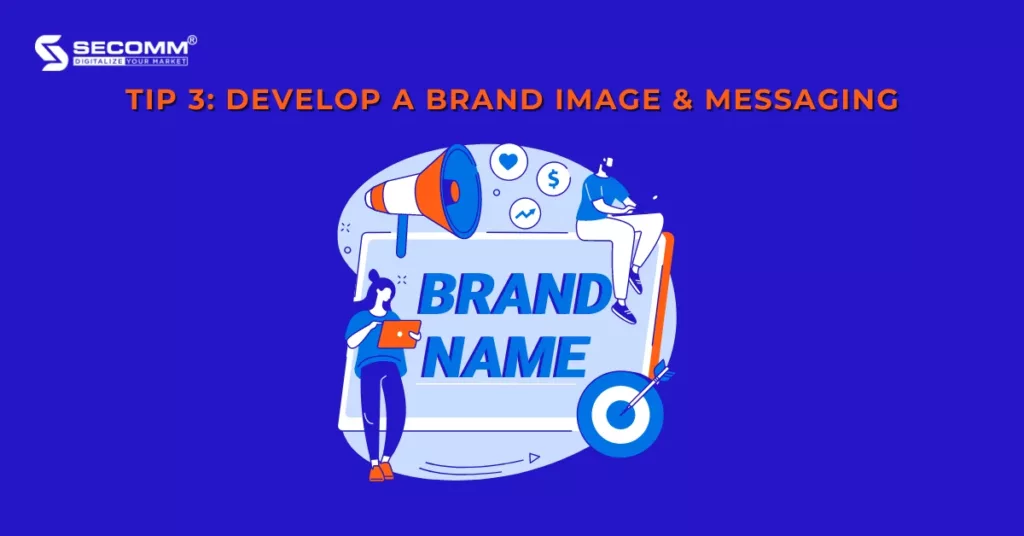
This tip not only helps increase brand recognition and customer loyalty but also creates a seamless customer experience.
Next, you can incorporate social media into your Omnichannel eCommerce strategy and focus on engaging with customers on social media platforms alongside other effective marketing channels. With over 3.6 billion social media users globally, building your brand presence in these places is no longer an option but an imperative measure to effectively connect your brand with customers.
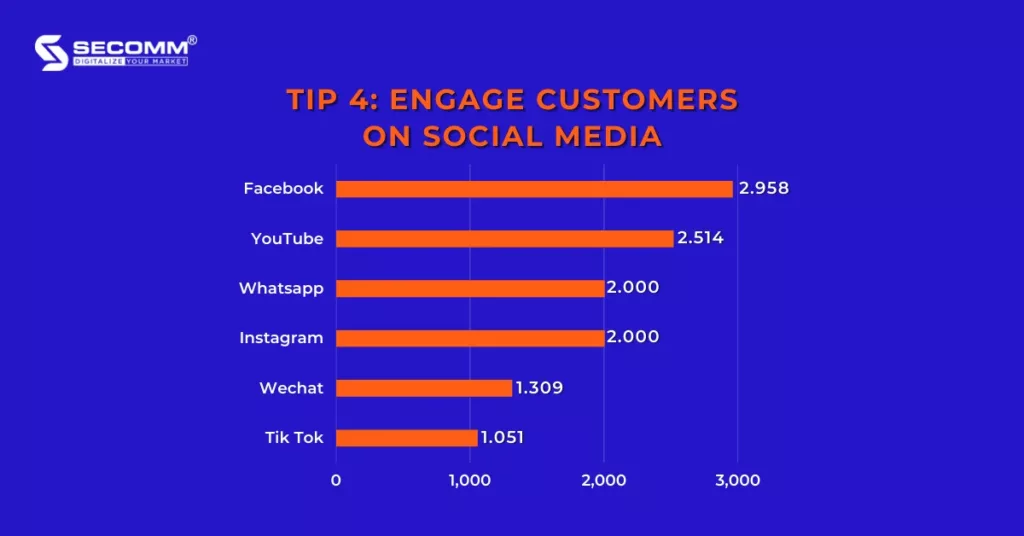
Leveraging social media enables you to engage with customers by responding to inquiries and addressing concerns through messaging or interactions on the news feed in a friendly and approachable manner. In addition, social media provides you with great space to deliver brand messages and voices to customers in a quicker and more intimate way to enhance brand awareness. You can create your own ideas and content or collaborate with influencers.
To tightly integrate social media with other channels in the Omnichannel eCommerce strategy, you can, for example, encourage users to like, comment, and share posts to receive attractive discount codes for purchases on websites or physical stores.
Tip number 5, for a seamless omnichannel experience, you need to ensure that customers can make purchases through any channel they interact with, such as eCommerce websites, marketplaces, social media platforms, and physical stores.
Additionally, to keep up with mobile commerce trends, you should optimize mobile-friendly and responsive websites as well as user-friendly mobile apps for easy navigation and usage.
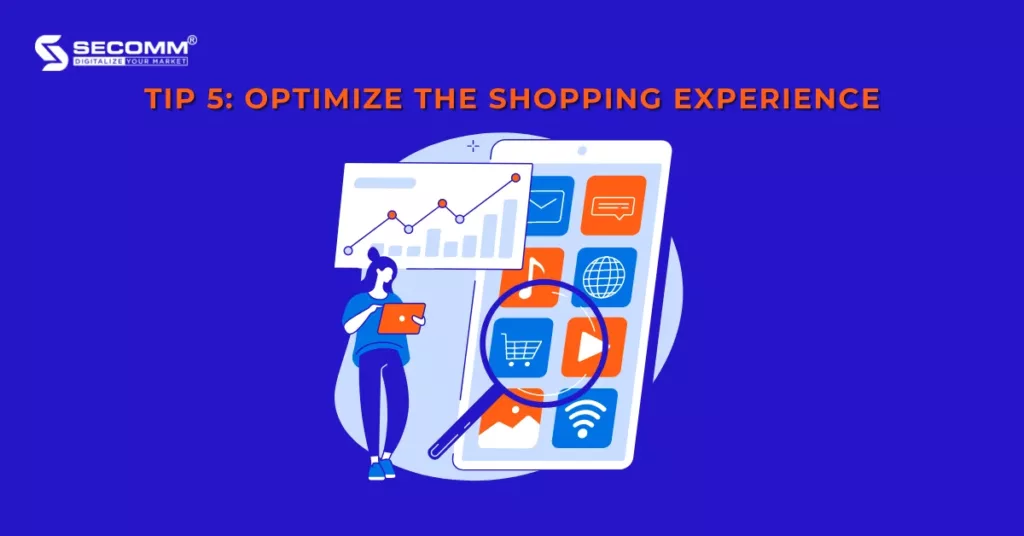
Since Omnichannel eCommerce emphasizes consistent experiences across all channels, content and customer-related information such as login credentials, payment details, and shopping carts should be synchronized. This enables customers to move seamlessly between channels and devices while preserving the items in their shopping carts or without the need to spend time logging in or re-entering payment information. Moreover, you can leverage data analytics to personalize product recommendations for each customer, displaying relevant or complementary products based on their behavior and purchase history across channels to increase cross-selling and upselling opportunities.
Tip number 6 is measuring and analyzing the results of the strategy. During the implementation process, you can utilize data analysis tools such as Google Analytics, Google Tag Manager, Facebook Pixel, and others to check, track and analyze customers across all channels. It helps identify which channels generate the most traffic, level of engagement, and sales revenue, and identify areas for improvement. In addition, you can gather customer feedback to enhance and optimize your strategy. The work should be conducted to make appropriate adjustments and achieve desired results.
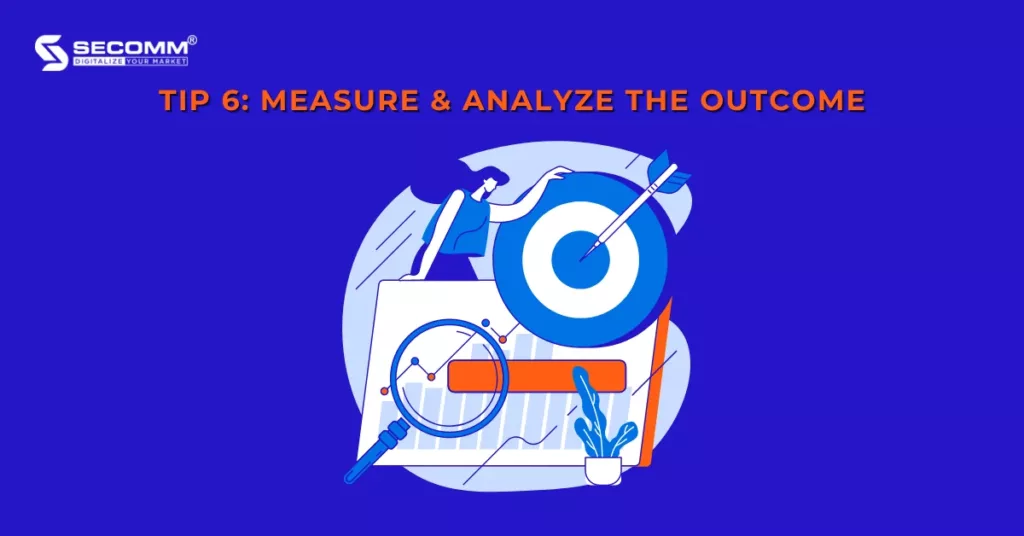
Contact SECOMM now for a consultation on building an Omnichannel eCommerce strategy.
 2
2
 8,474
8,474
 0
0
 1
1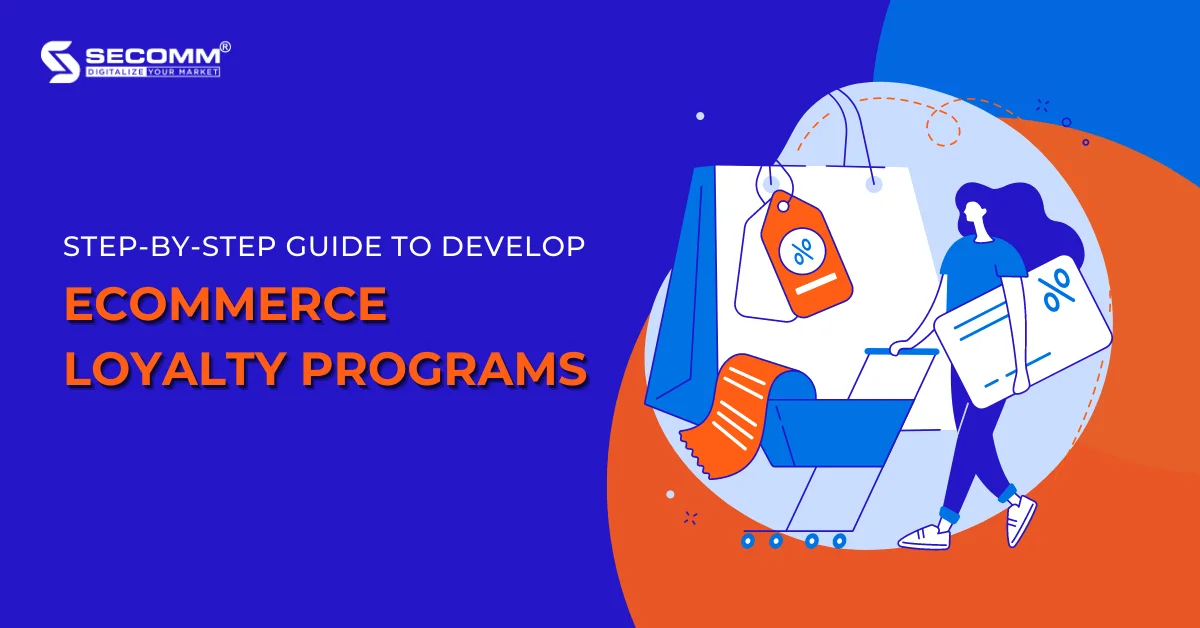
Loyal customers contribute significantly to the profitability and development of eCommerce businesses. Therefore, as a business, you need to focus on strengthening relationships with customers and encouraging repeat purchases. Among the methods available, building and convincing customers to participate in Loyalty Programs is an effective strategy.
Below is the ultimate guide to successfully build and implement an eCommerce Loyalty Program.
Related Readings: Everything To Know About eCommerce Loyalty Programs
The first step of the process is to establish the goals of the eCommerce Loyalty Program, which includes identifying the objectives (e.g. increasing customer retention rates, promoting repeat purchases, attracting new customers, increasing CLV). These objectives should align with the overall development strategy and business goals.
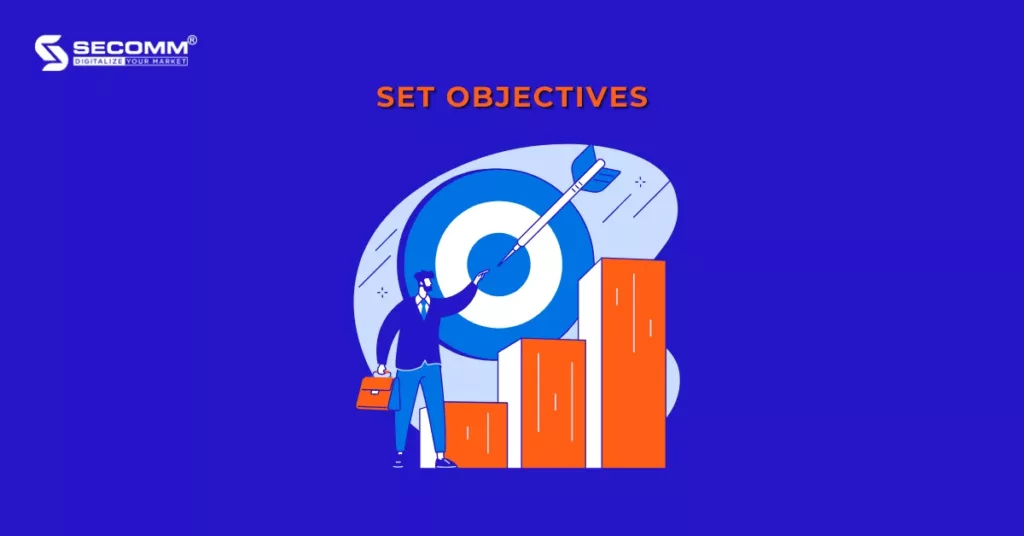
In addition, as a business, you need to clearly define the target audience of the Loyalty Program by analyzing the demographic and psychographic characteristics of those audiences to design a suitable program that meets their expectations.
You also can research the Loyalty Programs of competitors, analyze their strengths and weaknesses, and then create your own program to differentiate your business and provide unique value to customers.
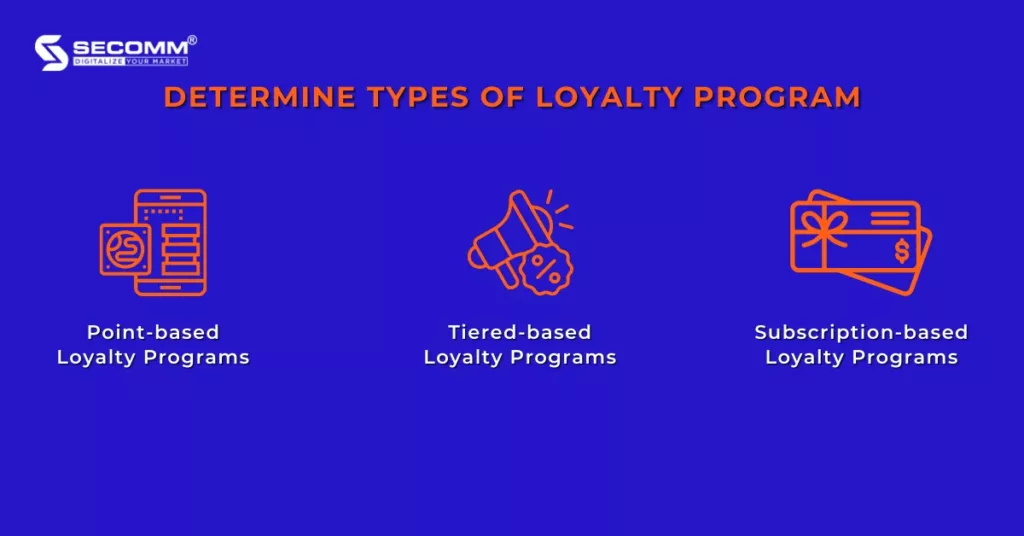
Currently, there are various types of eCommerce Loyalty Programs, but the most popular ones are point-based programs, tiered-based programs, and subscription-based programs.
This allows customers to earn points for each purchase or specific action and redeem them for rewards once they have accumulated a certain number of points. You should pay attention to the value of the rewards customers will receive and the reasonable time to redeem them to make the programs attractive.
This program encourages customers to strive for higher tiers to receive higher-value rewards and benefits. It will require customers to invest their time and money in shopping and engaging with your brand, meaning the more they spend, the more benefits they receive, and the higher their loyalty to your brand.
This Loyalty Program requires customers to register as members and pay a monthly, quarterly, or annual fee, depending on the terms of each program. Because of that, customers are more likely to commit to engaging with the brand, which is higher than other types of programs. Typically, these programs will have a trial period for customers to decide whether or not to join, and this is also an opportunity for you to convince them that the value they will receive is worth every cent.
The choice of Loyalty Program type depends on the budget, resources, and overall strategy of your business.
After choosing the right type of eCommerce Loyalty Program, you will want to select rewards that are suitable for that program. For point-based Loyalty Programs, common rewards include:
The SHEIN Bonus Point Program is a typical point-based Loyalty Program, where customers will earn 1 point for $1 spent. In addition, customers can also earn reward points by taking specific actions such as verifying their accounts, reviewing products, etc. When reaching the required number of points, customers can redeem them for discounts of up to 70%.
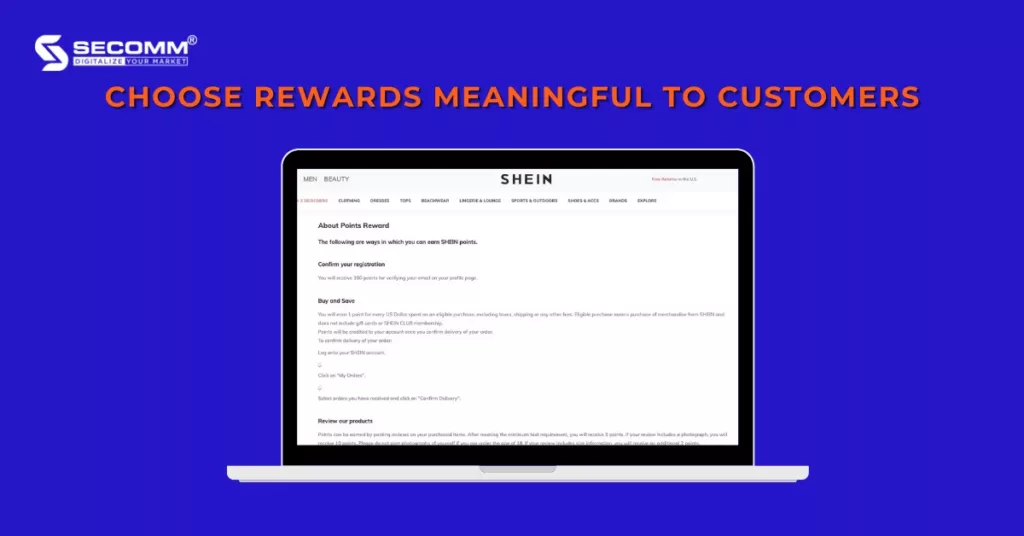
For the type of tiered Loyalty Program, the tiers will determine the equivalent benefits that customers will receive and require effort to maintain or upgrade. Therefore, rewards will be designed to reflect the brand’s characteristics and personalized for each customer at each specific tier. This makes the customer’s efforts worthwhile.
For example, Aldo Crew is a tiered Loyalty Program from the famous fashion brand – Aldo, with 3 main tiers: Crew, Plus, and VIP. The program offers customers attractive and personalized benefits such as special pricing, free birthday gifts, birthday discounts, 20% off handbags when purchasing shoes, exclusive privileges and surprises, and account sharing with friends.
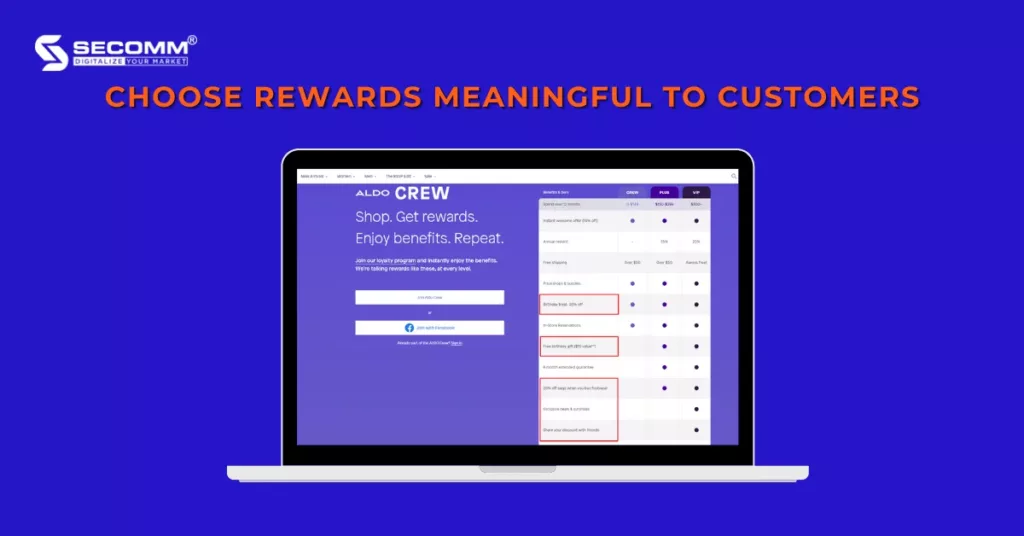
Most membership programs are applied by leading and well-known businesses worldwide due to their credibility, product value, and high-quality service that make customers trust them to spend their money to sign up. The rewards of this type of program tend to be exclusive, only available at the brand and for registered members.
For example, customers who register for the Walmart+ membership program will receive benefits such as product discounts, shipping policies, gas service, and movie watching with Paramount+ that non-members cannot receive.
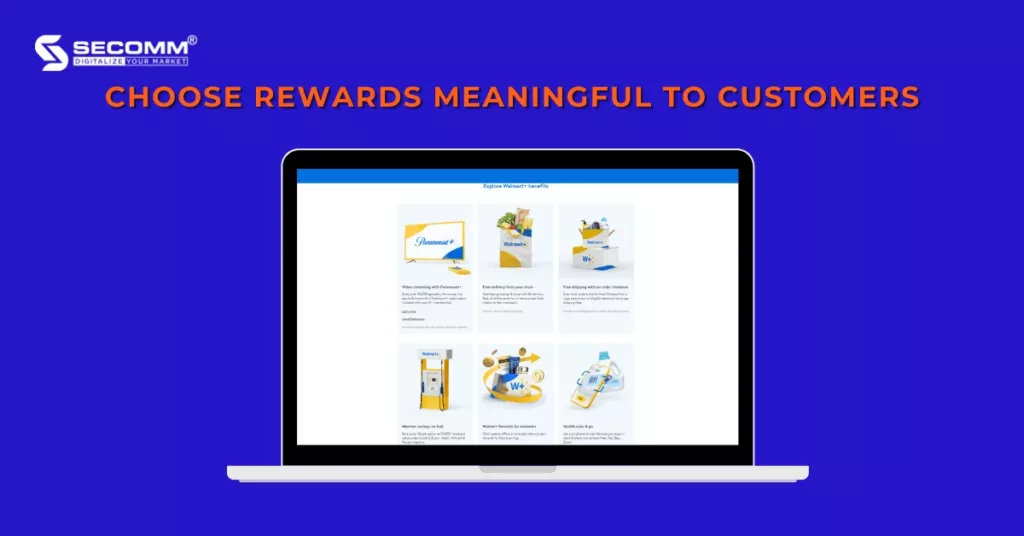
Depending on what Loyalty Program you choose, you will select rewards that are appropriate for both your customers and your business. However, you should consider the cost of each reward as well as the benefits it brings to the business before applying it to the program. Providing valuable rewards can not only increase customer retention and loyalty but also boost sales and increase the CLV.
Next, you will need software to develop, and manage eCommerce Loyalty Programs, track customer activities, and distribute rewards. The choice will be based on some factors such as ease of use, integration with eCommerce websites, and the price of the software. There are some popular Loyalty Program software on the market today, including Smile.io, Loyalty Lion, Yotpo, S Loyalty, and so forth. These softwares can be easily integrated and work effectively with eCommerce platforms such as Magento, Shopify, WooCommerce, etc.
The next step is to design the rules of the program. You need to ensure that the rules and conditions for participation are presented clearly, easy to understand, and easy to follow.
For example, the Sephora Beauty Insider program is based on a tiered system where customers earn one point for every dollar they spend, and the conditions for participation and advancement are clearly presented.
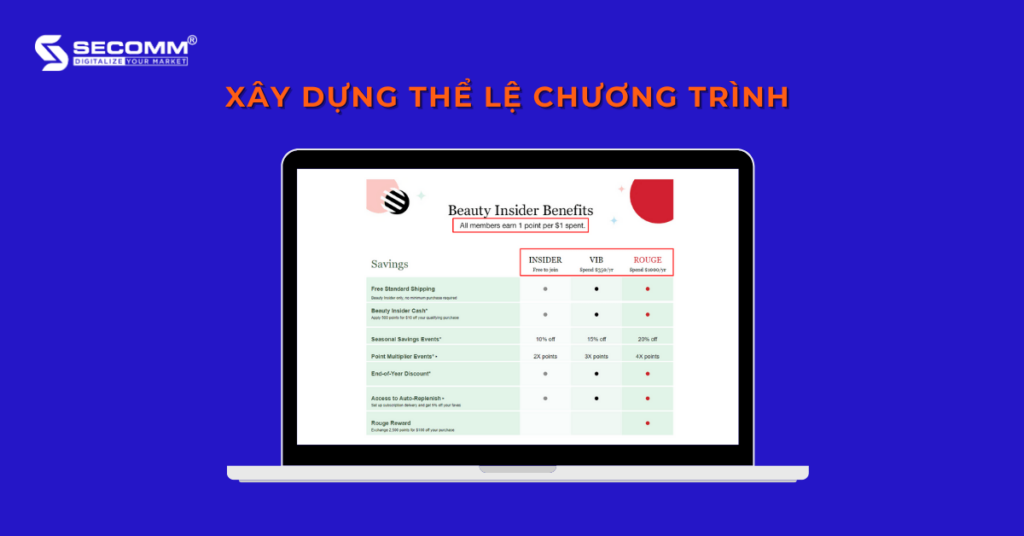
Again, with Walmart+ as an example, customers easily recognize the benefits they will receive for joining the program as a member, and the cost of $12.95/month after a 30-day trial as well.
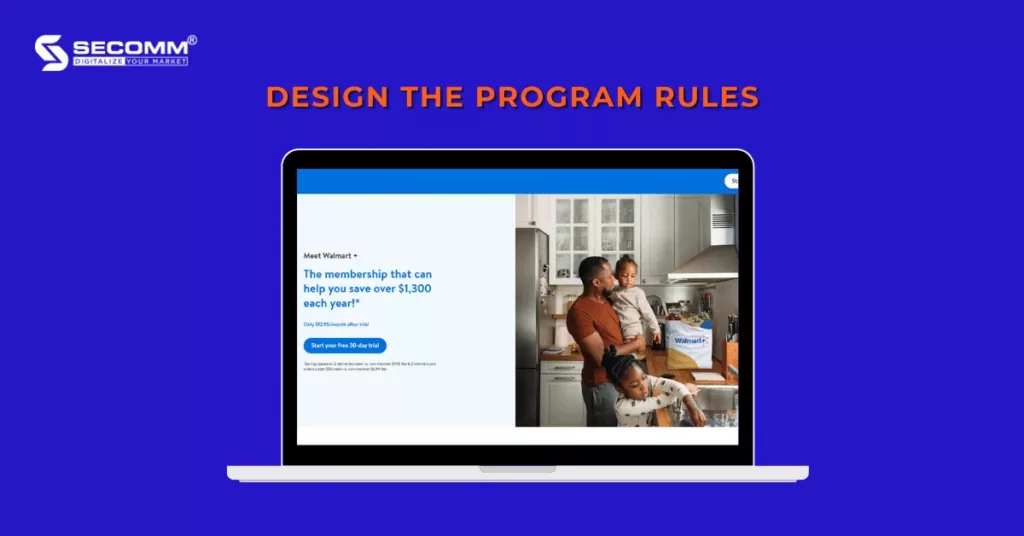
In addition, the registration process should be easy to execute. Typically, brands will require customers to create an account on their website or fill out a registration form, or even simpler, just log in with Facebook to participate. These actions are quick and easy to execute.
For example, in the Sephora Beauty Insider program, customers can click “join now”, fill out the form, and join the Insider tier. Or, if they already have an account, they need to log in to see their points balance and tier.
For the Aldo Crew program, customers need to fill out a registration form on the website or log in with their Facebook account to start.
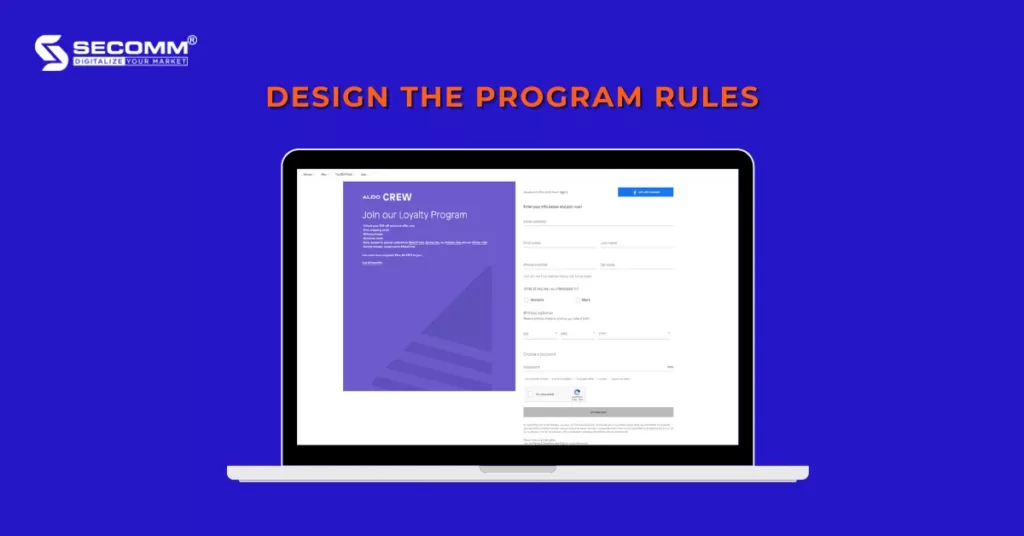
In addition to ensuring the clarity and understandability of the program rules, you also want to ensure that the conditions set are appropriate for customers to quickly earn rewards and maintain the attractiveness of the program, while also bringing profits to the business.
For example, the Amazon Prime membership program offers customers a 30-day free trial and a range of pricing options. The most noteworthy are the monthly payment plan at $14.99/month and the annual payment plan at $139/year. The majority of customers are likely to choose the annual payment plan ($139) to save money, which is also Amazon’s intention as the profits they earn will be higher.
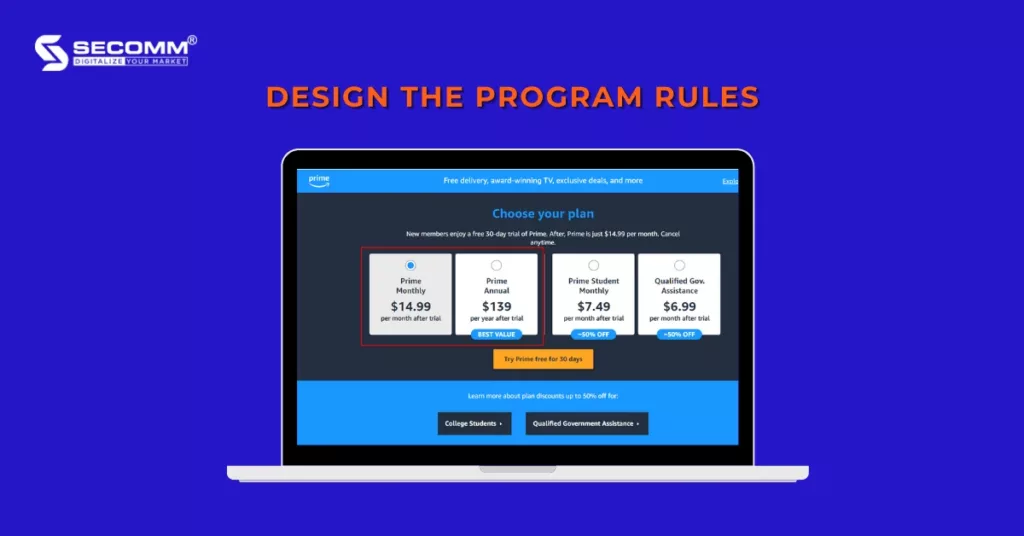
To implement a Loyalty Program, you will need to integrate the program into your eCommerce website and display the point balance and rewards on the Shopping cart page.
Taking Sephora as an example again, the Profile page displays the customer’s current membership tier and current point balance.
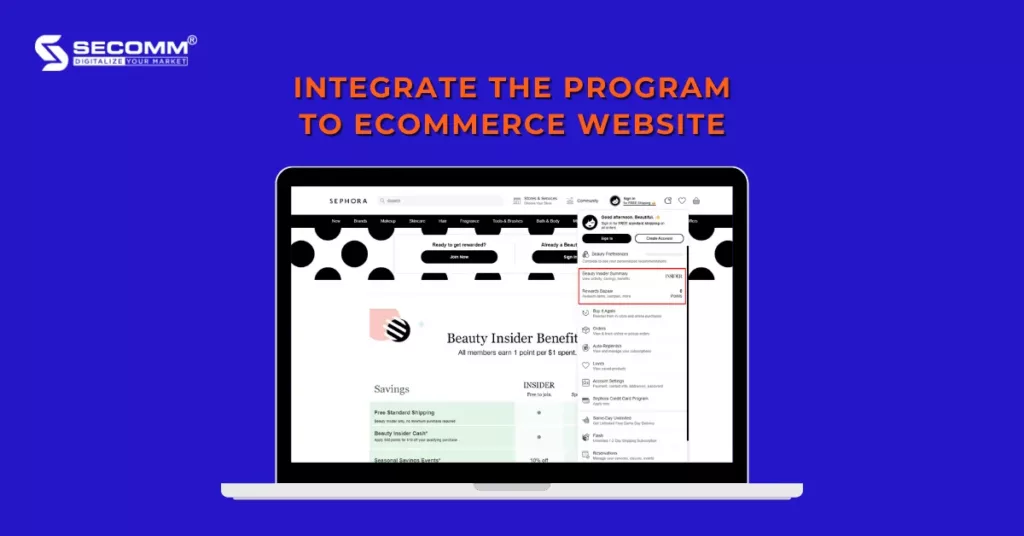
For the success of your eCommerce Loyalty Program, you have to educate your team about the program, including participation requirements, point accumulation methods, rewards, and more.
Moreover, you want to ensure that your team knows how to answer customer questions about the program and handle any arising issues. This activity should be done regularly along with the changing of your Loyalty Program to fit market trends.
By providing effective training, your team is able to promote and manage the program accordingly. This contributes to the success of your eCommerce Loyalty Program.
When launching your Loyalty Program, you will want to make it popular so promotion is necessary. To do it effectively, you can prominently display the program on the Homepage and Navigation menu of your website. Also, you can promote the program on social media or use eye-catching graphics and compelling content for email marketing.
An Influencer marketing campaign is an effective way to increase the program’s awareness and engagement. Referral Marketing is also a commonly used marketing strategy in Loyalty Programs today, encouraging customers to refer new members to the program to expand the customer base.
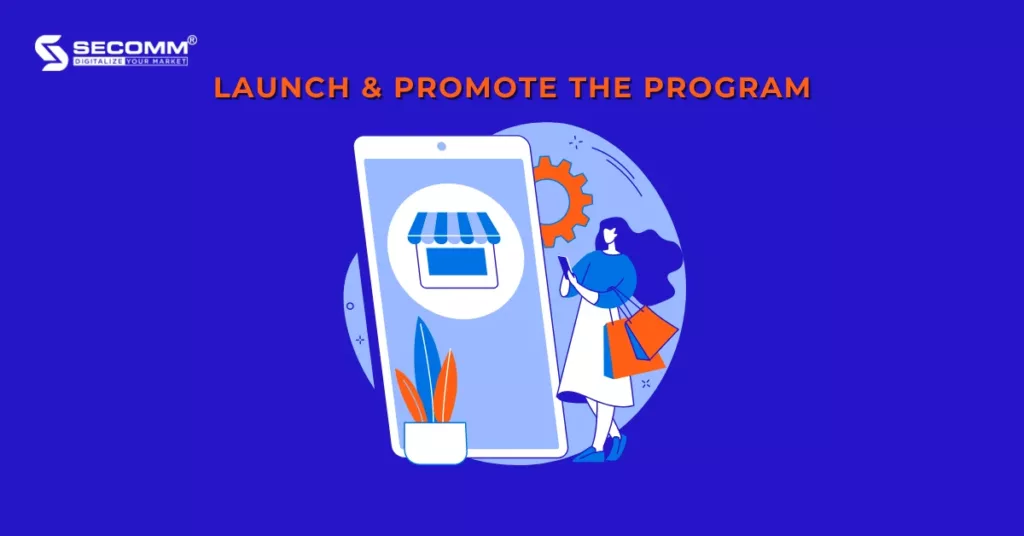
Popular Loyalty Programs such as Sephora Beauty Insider, Amazon Prime, Walmart+, Aldo Crew, and eBay Plus all have referral programs. When someone signs up for the Loyalty Program through a referral link, both the referrer and the referee will receive a small bonus of $1-$10 or a discount on their next purchase.
You will need to track and measure the results of the Loyalty Program to ensure the objectives are achieved and make adjustments if necessary.
You can use KPIs like customer retention rate, repeat purchase rate, or average order value of members compared to non-members. Moreover, you can collect and analyze customer feedback and reviews on their satisfaction with the program to identify what to improve.
You also need to keep your customers engaged by regularly improving, updating, and promoting the program. At the same time, you should provide personalized rewards and experiences based on their interests and behavior to increase customer satisfaction and interaction.
In addition, you can consider building a community of members by providing online and offline events and special offers exclusively for program members. Again, Sephora does this well, they offer exclusive events for all Insider, VIB, and Rouge members in addition to other incredible experiences. This gradually creates a community of loyal Sephora customers who love beauty.
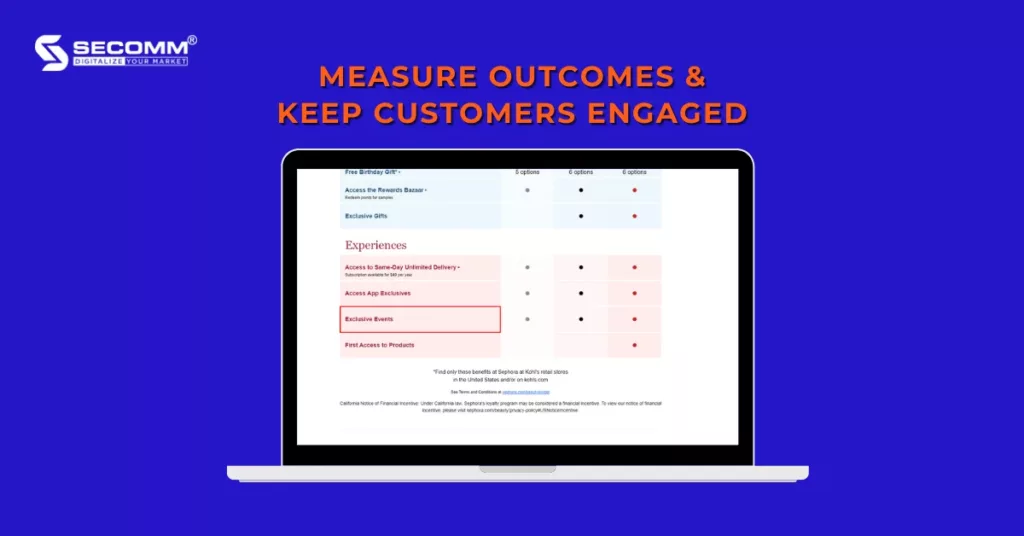
Retention isn’t about convincing customers who were going to leave to stick around. Instead, retention is about providing so much value to your existing customers that they never go anywhere else and become your strongest benefit.
Therefore, enhancing your customer experience through attractive Loyalty Programs is an effective way to increase customer retention and loyalty.
Contact SECOMM now for a free consultation on developing a comprehensive eCommerce Loyalty Program.
 2
2
 15,651
15,651
 0
0
 1
1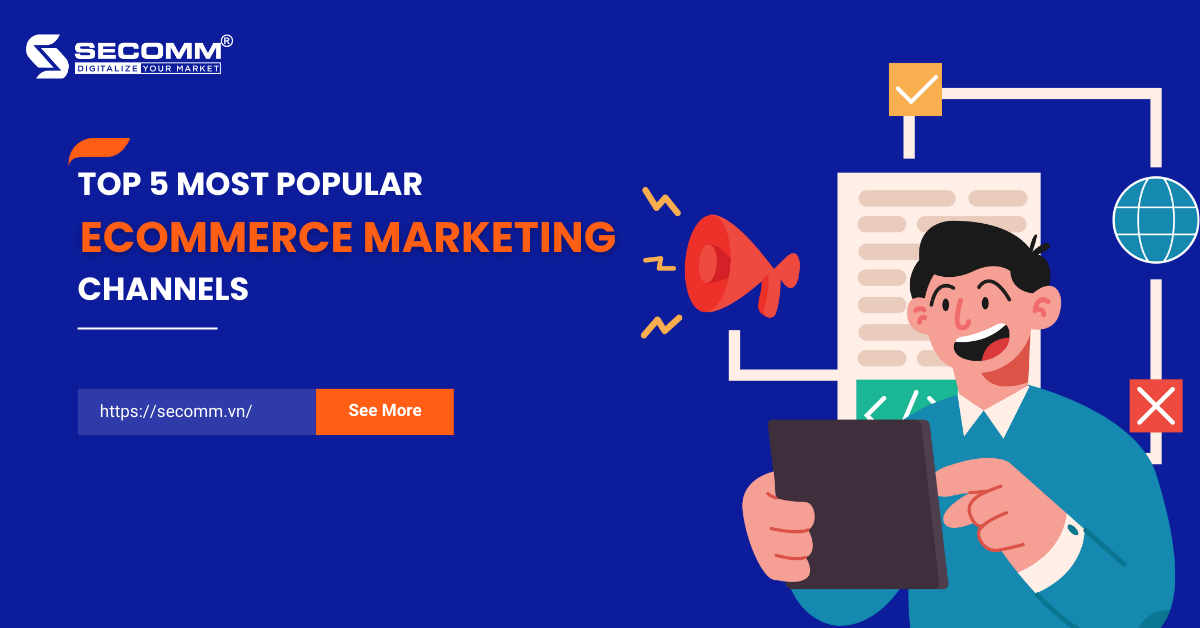
The global pandemic has created an unprecedented boost for the eCommerce industry, forcing business leaders to go for digital transformation whether they want to or not. However, there are still many businesses that are hesitant and encounter difficulties while embracing it.
In addition to selecting an eCommerce platform and building a website, they can leverage incredible marketing channels to develop an eCommerce marketing strategy.
eCommerce Marketing, also known as Electronic Commerce Marketing, is the practice of using various marketing channels such as social media marketing, content marketing, SEO, or email marketing to increase the efficiency of eCommerce operations. To be more specific, eCommerce Marketing does the following:
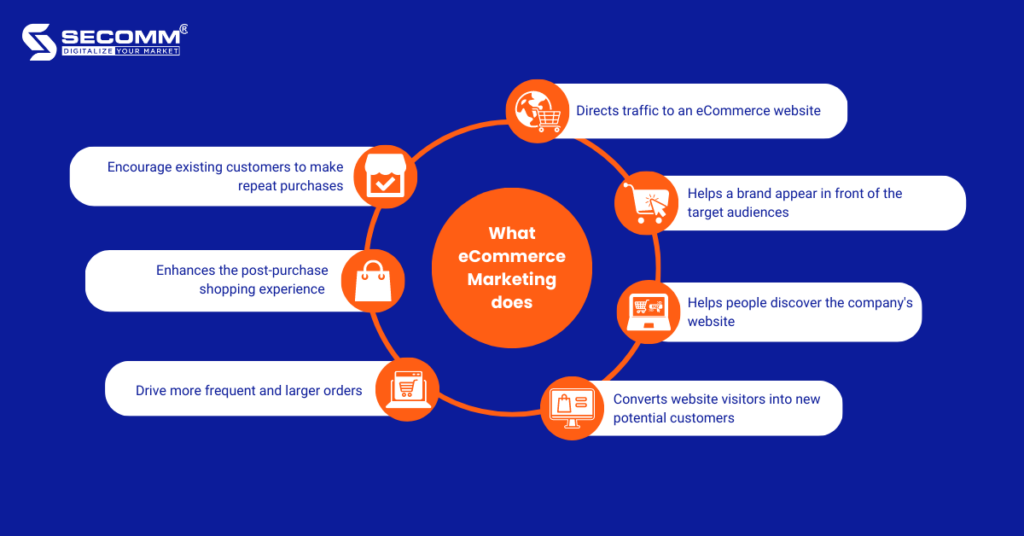
The purpose of eCommerce Marketing is to enhance brand awareness and boost sales. Therefore, if a business doesn’t have an eCommerce Marketing strategy, then it’s really hard for their eCommerce website to generate conversion despite the beautiful interface and well-built functional system.

Currently, most brands and content creators take advantage of the popularity of social media as the first step for connecting and serving their target audience with content that interests them. eCommerce businesses can do the same by using engaging content and images to grab the audience’s attention and direct traffic to their website.
In this case, the eCommerce website interface must have a high level of visual appeal, especially showcasing prominent products to create inspirational shopping. Moreover, businesses can implement social commerce to directly sell products on social media platforms like Facebook, Instagram, TikTok, and so forth.
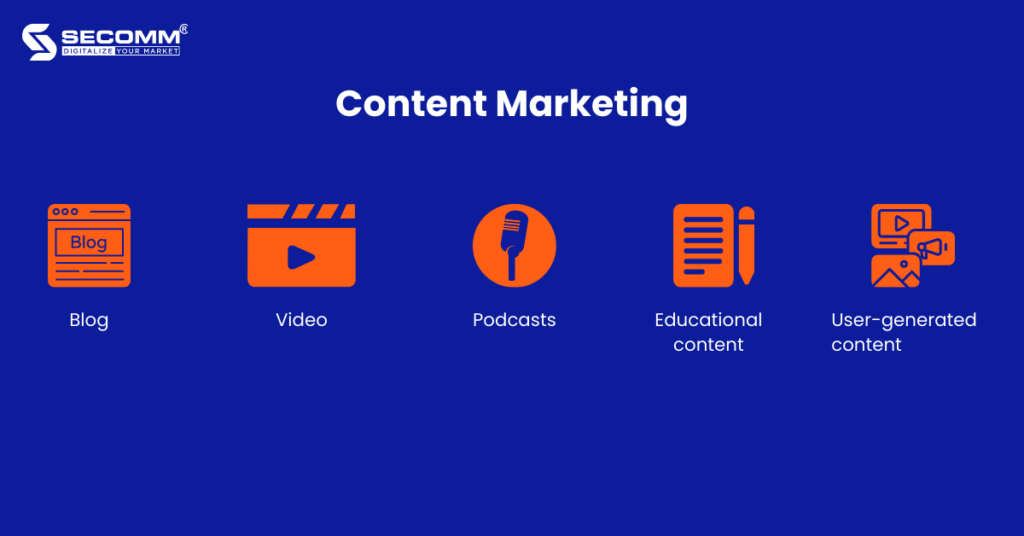
This is an effective marketing channel that brings long-term results for eCommerce businesses as well as a sustainable branding tool for their brands. Currently, various types of content are widely used, including
The goal of content marketing is to answer questions, provide information, promote the brand, suggest and guide customers in choosing products, and even entertain them. With optimized content, customers will quickly find out the website and the business can increase the conversion rate. Moreover, the business can leverage that content for the next eCommerce marketing campaigns.

SEM includes both Search Engine Optimization (SEO) and paid advertising. While SEO requires marketers to understand Google’s ranking algorithm to optimize their content to meet Google’s evaluation criteria, SEM relies on various campaigns such as pay-per-click (PPC) campaigns, display campaigns, or product advertising campaigns like Google Shopping Ads.
On Google, PPC campaigns ensure that potential customers will see the link leading to the brand’s website when they enter search terms that match the selected campaign keywords. That is the reason why eCommerce businesses frequently utilize Google Adwords and run PPC campaigns to advertise their product pages.
This way enhances the chances of searchers clicking on the link and making a purchase decision before leaving the eCommerce website, leading to a notable increase in conversion rates.

A reliable influencer can be a brand’s ‘best friend’. The introduction or endorsement of an influencer can help businesses quickly increase sales, optimize marketing ROI, and raise brand awareness. In addition, Influencer Marketing leverages the trust in an individual’s persuasive abilities and self-confidence to influence and encourage their followers to make purchasing decisions.
Influencer marketing is a highly effective eCommerce marketing channel in that eCommerce brands are more likely to continually find ways to collaborate with influential individuals to drive recognition and emotional shopping for specific products or services

This is one of the oldest categories of Digital Marketing. Today, in the eCommerce world, email marketing still plays a very special role that enables businesses to automate campaigns toward targeting subscribers from different segments or stages in the customer journey
However, businesses should be careful in selecting and categorizing the target groups in their email list, to send the right content to the right target audience. This way, businesses can maintain the trust of potential customers at a time when privacy and personal data security have become increasingly important to Internet users.
Therefore, they should be cautious in building their email list if email marketing is a part of their eCommerce marketing strategy.
With all things considered, if there is no eCommerce Marketing, eCommerce websites are virtually unknown. The only way for a website to gain brand recognition, attract more online customers, and generate consistent and regular revenue is to effectively implement target marketing activities.
With a wealth of experience successfully implementing eCommerce for many customers in various countries in recent years, SECOMM understands the difficulties and obstacles businesses face when undertaking tasks related to eCommerce marketing strategy.
Contact SECOMM today to receive free support and consultation.
 2
2
 4,738
4,738
 0
0
 1
1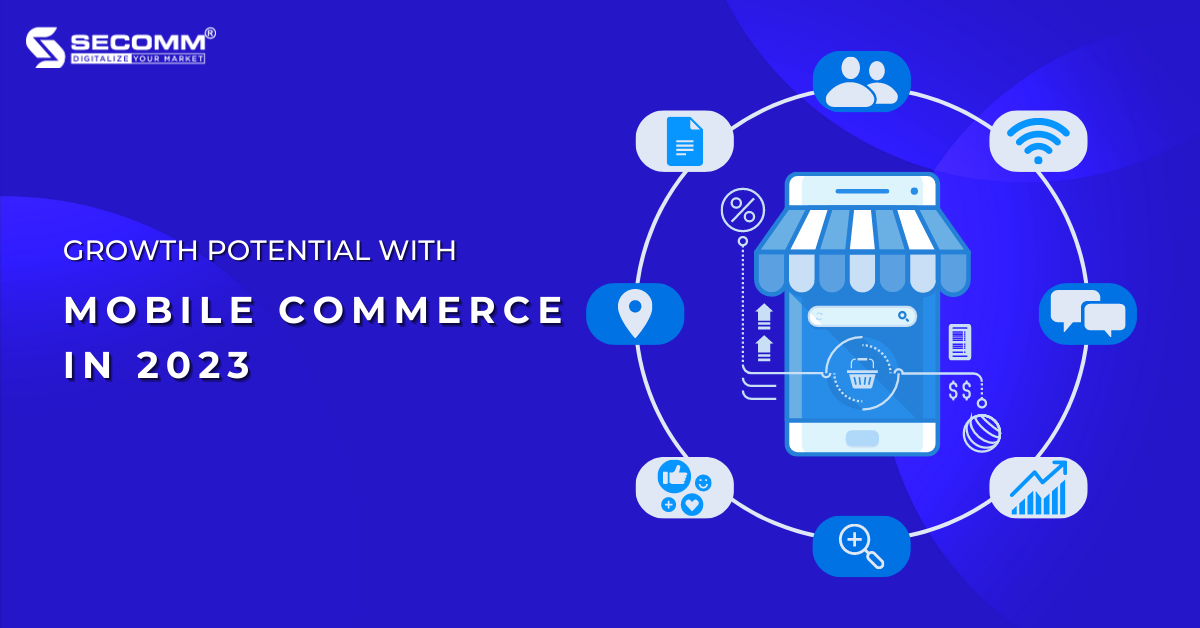
According to the latest data compiled by Statista, as of January 2023, the number of global smartphone users is 6.92B people, increasing by 4.2% annually. In Vietnam alone, this number is around 69 million users, whereas, in the US, Pew Research Center estimates that about three-fourths of Americans own a smartphone. These data demonstrate that smartphones have become common devices, and the demand for owning and using smartphones is significantly increasing.
In addition, the Internet has long ceased to be a high-end infrastructure for countries. Therefore, people today tend to prioritize using mobile devices like smartphones to browse the web.
Typically, Brands tend to establish a strong presence in areas with a wide pool of potential customers, so the emergence of Mobile Commerce quickly gained acceptance and became one of the key business strategies of many enterprises.
Moreover, the appearance of the Covid-19 pandemic in 2020 became a great boost for eCommerce in general and Mobile Commerce, in particular, to explode strongly.
During that period, the smartphone became the shopping companion of users as 79% of users used their smartphones or other mobile devices to shop online, as reported by OuterBox. Despite the eventual end of the pandemic, the Mobile Commerce growth trend is projected to continue as mCommerce retail sales hit $415 billion in 2022, and are predicted to reach $710 billion by 2025.
Mobile Commerce or Mobile eCommerce, abbreviated as m-commerce or mCommerce, is also known as Thương Mại Di Động in Vietnamese. This term was first coined and used by Kevin Duffey at the Global Mobile Commerce Forum in 1997, which means “providing direct eCommerce capabilities to consumers, anywhere, through wireless technology”.
Simply put, it is a business model in which all online monetary transactions are conducted on mobile devices such as shopping, banking, eWallet transactions, ride-hailing, food delivery, hotel reservations, etc.
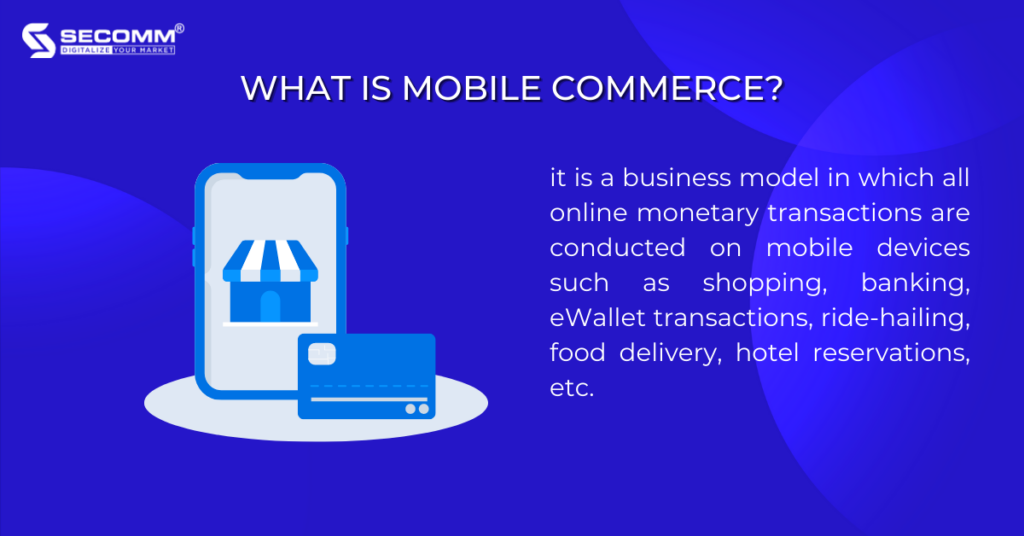
eCommerce or electronic commerce is a relatively broad concept that refers to the buying and selling of goods and services over the Internet. Meanwhile, Mobile Commerce is a branch of eCommerce or the mobile version of eCommerce, specifically referring to electronic commerce transactions carried out on mobile devices.
Furthermore, the eCommerce shopping experience depends heavily on desktops and websites, making it less mobile-friendly and inconvenient for customers. On the other hand, with Mobile Commerce, customers can easily bring their devices with them anywhere, allowing businesses to provide personalized shopping experiences that help customers make quick purchasing decisions.
Thanks to the popularity of smartphones in every consumer’s life, related trends are on the rise such as mobile shopping, mobile payment, and social commerce.
Mobile shopping apps are becoming more and more popular and are the most prominent trend in mobile commerce. Many retail brands across various industries are investing in building and developing their own eCommerce apps such as the fashion industry, the cosmetic industry, and so forth. This not only helps businesses increase their conversion rates and sales but also makes the shopping experience easier and more convenient for customers, as they will be able to search for products and complete purchases right on the app.
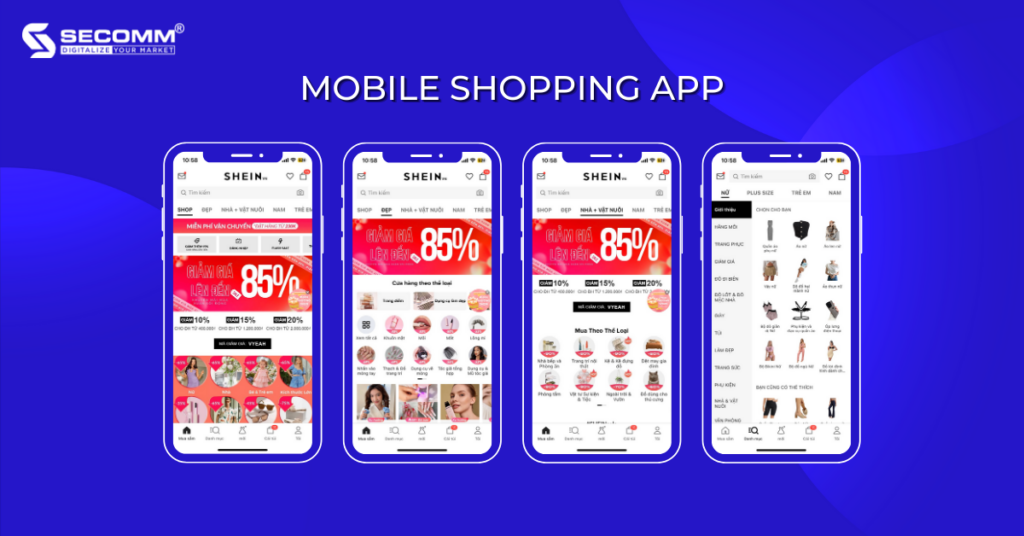
In addition, the outbreak of the Covid pandemic and the establishment of social distancing measures in 2020 marked the beginning of the boom of shopping apps. As stated by the Mobile Shopping Report 2021, global usage of shopping apps increased by 40% in Q1 2021.
In the effort to develop sustainably amidst the pandemic crisis, the SHEIN app with nearly 15.5 million global users played a significant role in contributing to the company revenue of $9.81 billion in 2020.
As of 2021, SHEIN’s mobile app reached 43.7 million users and became the second most downloaded app in the world after Shopee. In 2022, SHEIN’s user base grew to 74.7 million and officially became the most downloaded mobile app globally in the shopping category with over 229 million downloads and installations from the App Store and Google Play
The usefulness of smartphones not only lies in online shopping but also makes transactions and payments more convenient and easy during the peak period of the pandemic. In addition to Mobile Banking applications, users have a special preference for mobile wallet or eWallet applications.
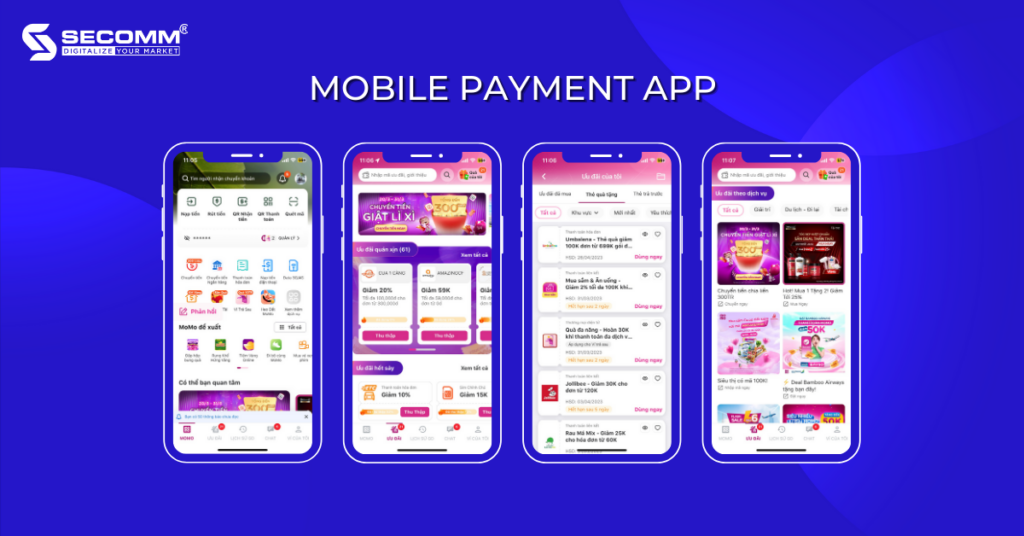
In the Vietnamese market, when it comes to eWallets, people immediately think of MoMo. However, MoMo is not only known as a typical eWallet but also an incredible super application.
To date, MoMo has built a platform that provides about 400 different types of services in many fields such as consumer finance, insurance, money transfer, payment, entertainment, shopping, dining services, and charity donations, etc. The number of MoMo users has increased significantly in recent years, from 10 million users in 2019 to about 31 million users in 2022, and the company’s next target is at least 50 million users.
In addition to making their mobile shopping apps, selling on social media platforms is also one of the widely applied strategies. The popularity and large user base of social media are a solid foundation for the development of Social Commerce and a playground for merchants of all sizes. Social Commerce is a form of online selling through social media platforms like Instagram, Facebook, and TikTok.
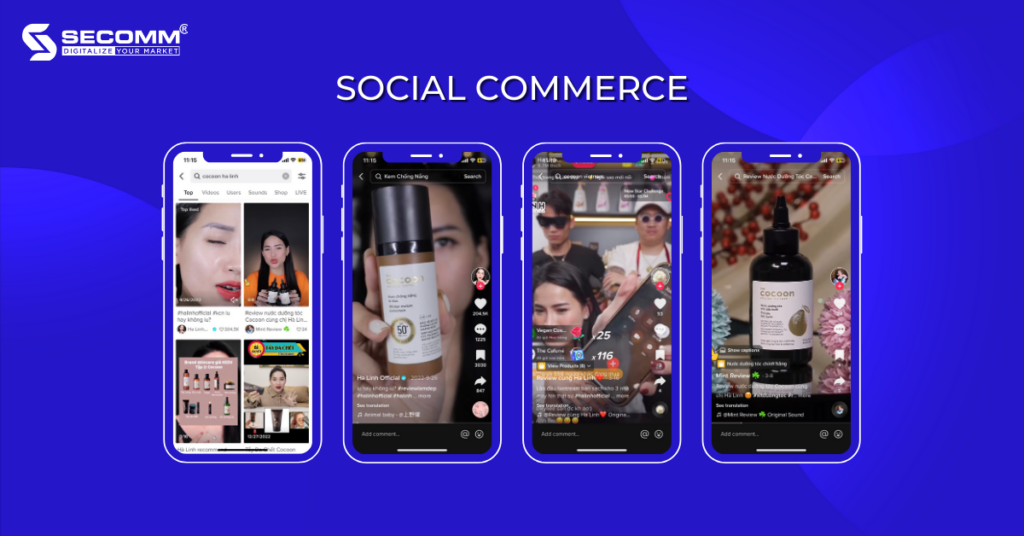
Selling on social media will help brands reach the existing large user base and utilize influencers for their marketing campaigns.
For example, the vegan cosmetics brand Cocoon does this through TikTok Shop. Cocoon is known for its environmentally friendly and animal-testing-free products, and they opened a store on TikTok and collaborated with famous beauty vlogger Ha Linh, which brought them a lot of success. It not only boosted their sales but also reached nature-loving, animal-loving, and young customers on TikTok.
As mentioned, the global number of smartphone users is estimated to reach around 6.9 billion by 2023, which is a driving force for the development of Mobile Commerce. Anyone who owns a smartphone has the potential to become a customer. As a result, implementing Mobile Commerce will help businesses reach this enormous user base, nurture and generate conversions.
In addition, with the mobility of Mobile Commerce, smartphone users with internet access can shop anytime, anywhere, even on the go without being dependent on a fixed location. Especially when visiting a store to shop, instead of paying in cash or by card, customers can now pay through eWallets such as MoMo or VNPay, etc.
Currently, businesses are very focused on personalized customer experience, which is particularly important in the Mobile Commerce world. A smartphone is a personal item that each person carries out personal activities throughout the day. Moreover, in the online shopping trend, customers highly value brands that provide them with a personalized experience because it demonstrates the brand’s concern for its customers. As a result, the more businesses focus on details and personalization in their messages and promotional programs, the better.
For Mobile Commerce, push notifications are an effective solution. Mobile Commerce apps help businesses track and collect user data including personal information, social media accounts, interests, current location, purchase history, viewed products, etc. After that, they can combine and analyze the data to send appropriate messages to the right target audience through push notifications.
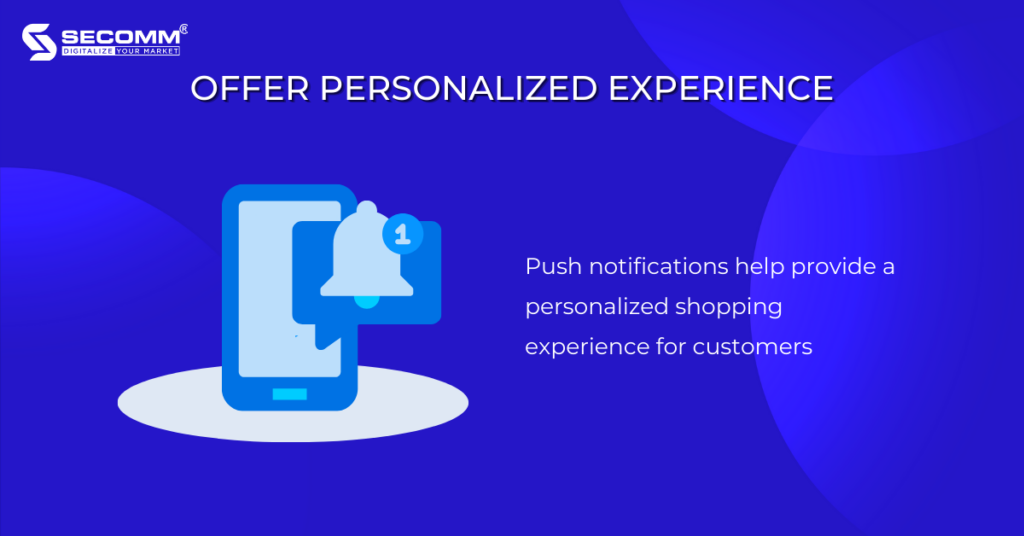
Recent studies have shown the effectiveness of push notifications in connecting with customers and notifying them about new products and special incentives.
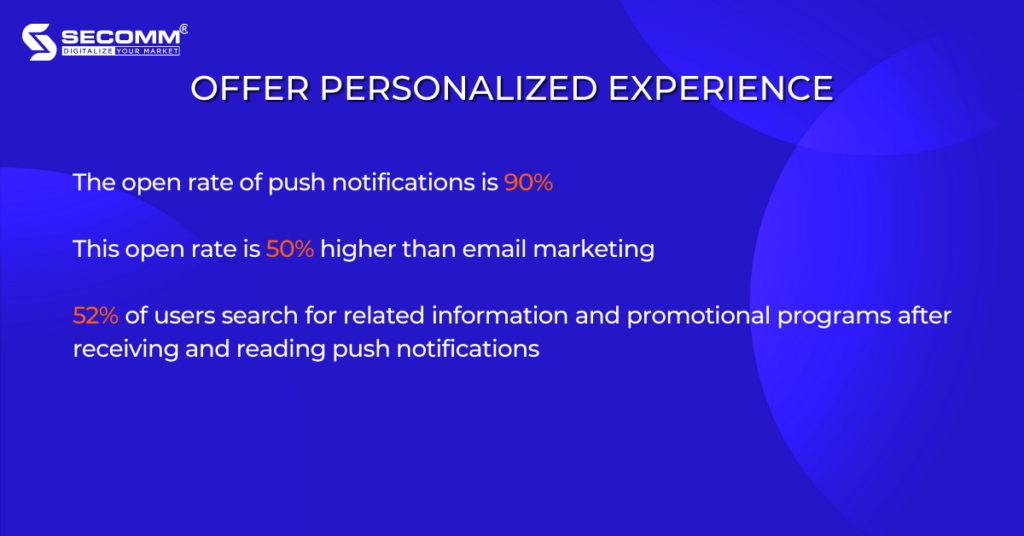
Push notifications are one of the strategies implemented to provide personalized shopping experiences and bring satisfaction to customers. The more satisfied customers are with their shopping experiences, the higher the likelihood that businesses will increase customer retention rates and maintain their loyalty.
The demand for a personalized shopping experience is increasing among customers, as well as the need for a consistent shopping experience across multiple channels, from online to offline stores. According to a study by MasterCard, customers who have a multi-channel shopping experience with a specific retailer tend to spend 250% more than the average. The fashion brand Macy’s has stated that the value of multi-channel shoppers is 8 times higher than that of those who only shop on a single channel.
Moreover, smartphone users tend to use their devices while shopping in offline stores for various purposes, as Retail Dive‘s survey has listed in detail:
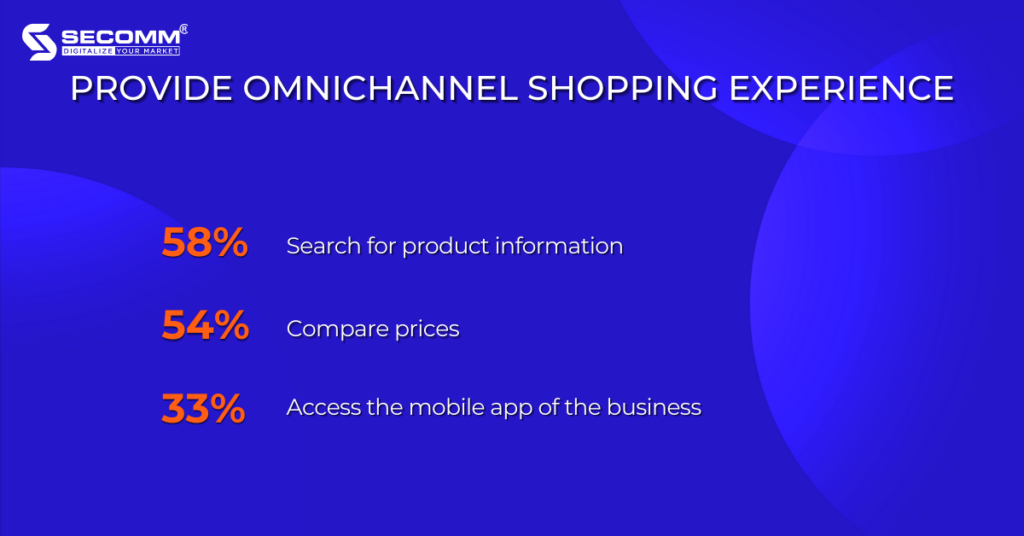
Therefore, by implementing Mobile Commerce, businesses can provide customers with a multi-channel shopping experience.
Mobile Commerce is exploding thanks to the boost from the Covid pandemic. Even though the pandemic has passed, the impact of Mobile Commerce on the development of eCommerce businesses is still significant. If businesses plan to approach Mobile Commerce in 2023, it is a wise decision.
Contact SECOMM today to learn more about Mobile Commerce and the best solutions to get started.
 2
2
 4,784
4,784
 3
3
 1
1Subscribe to get the latest eBook!
Hotline